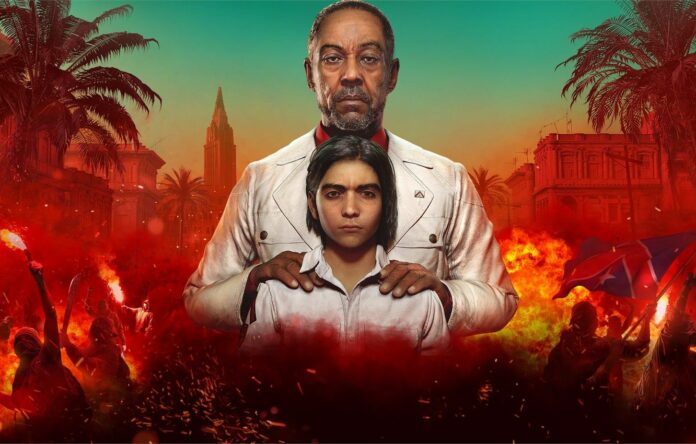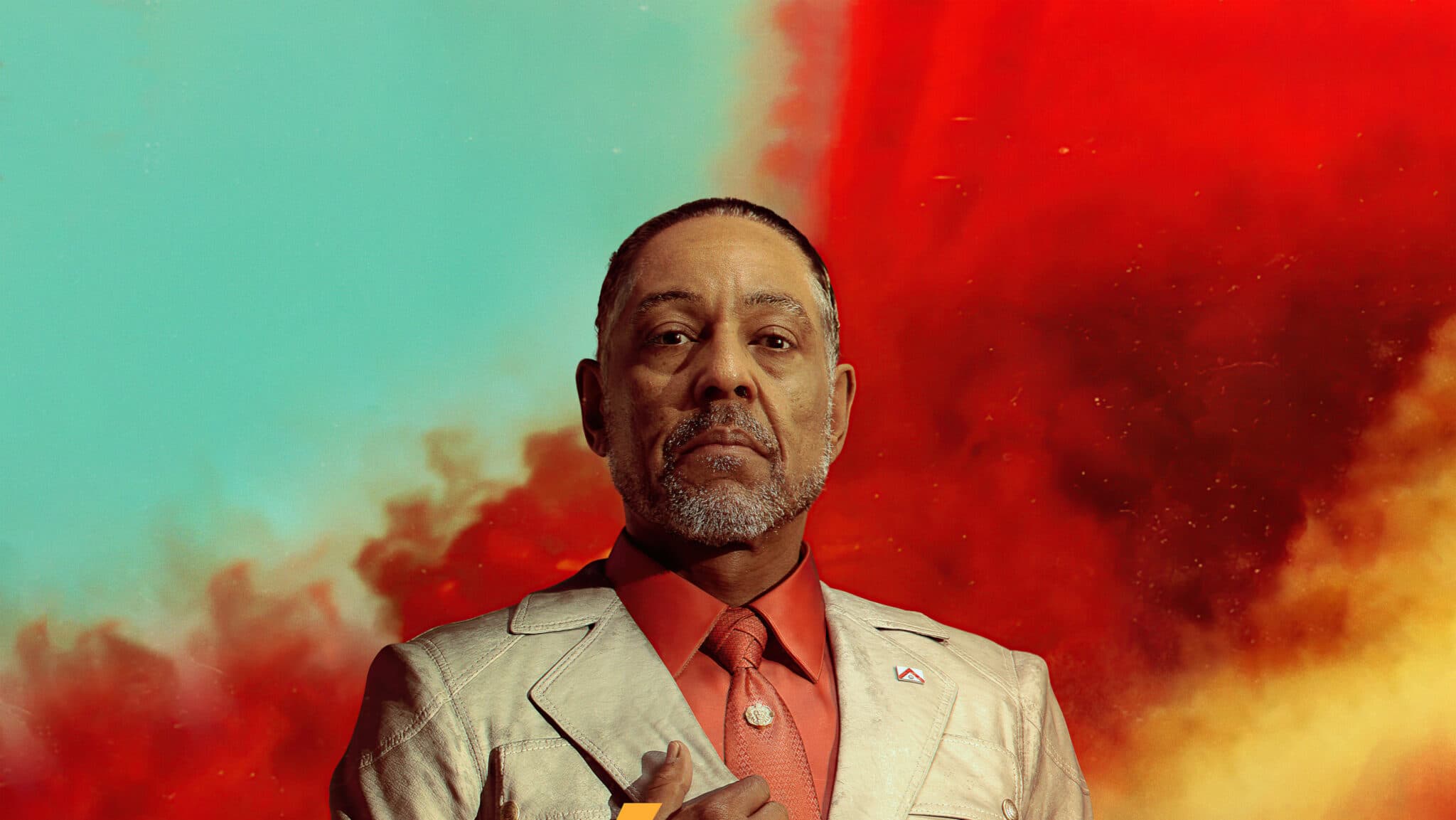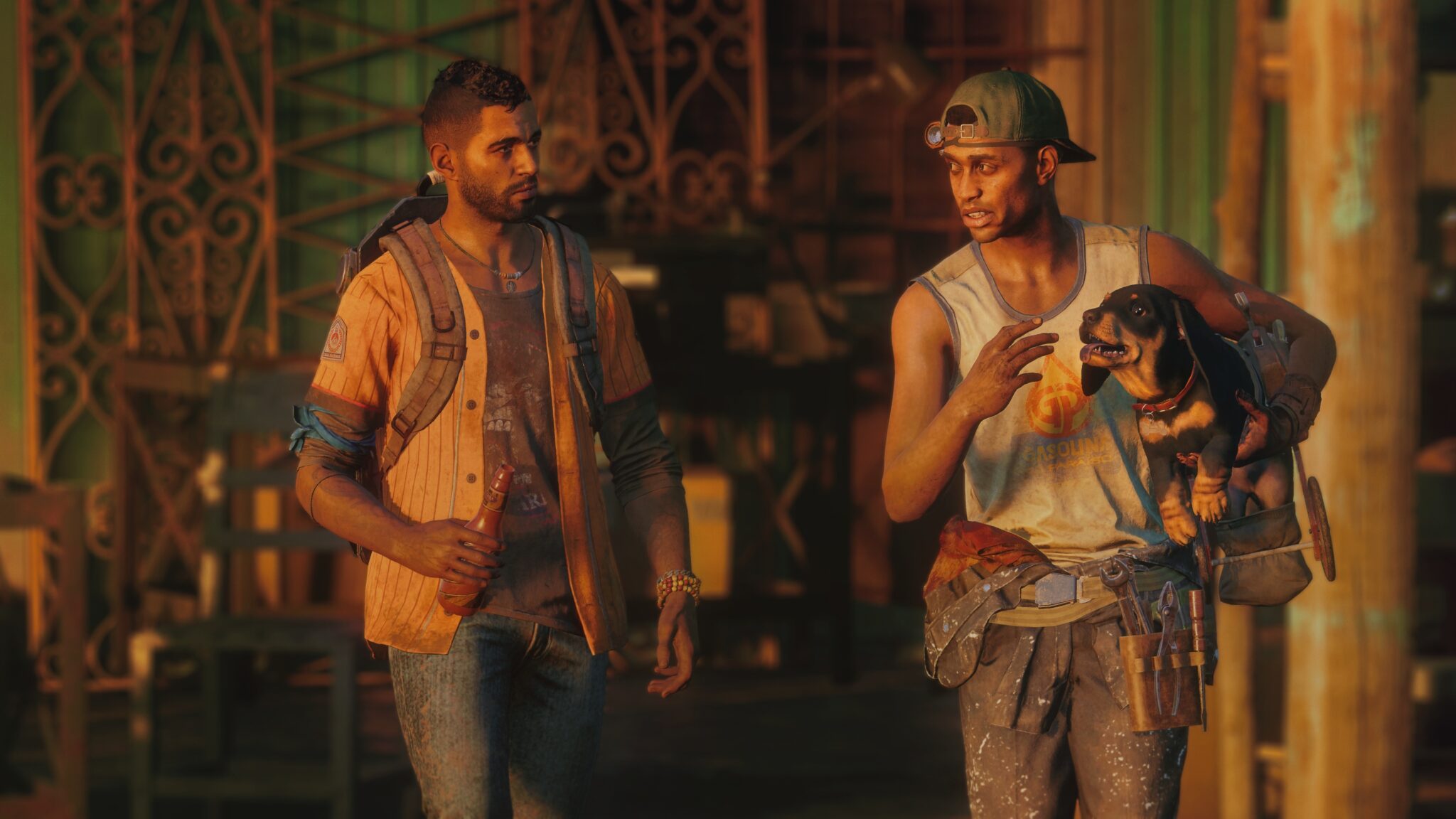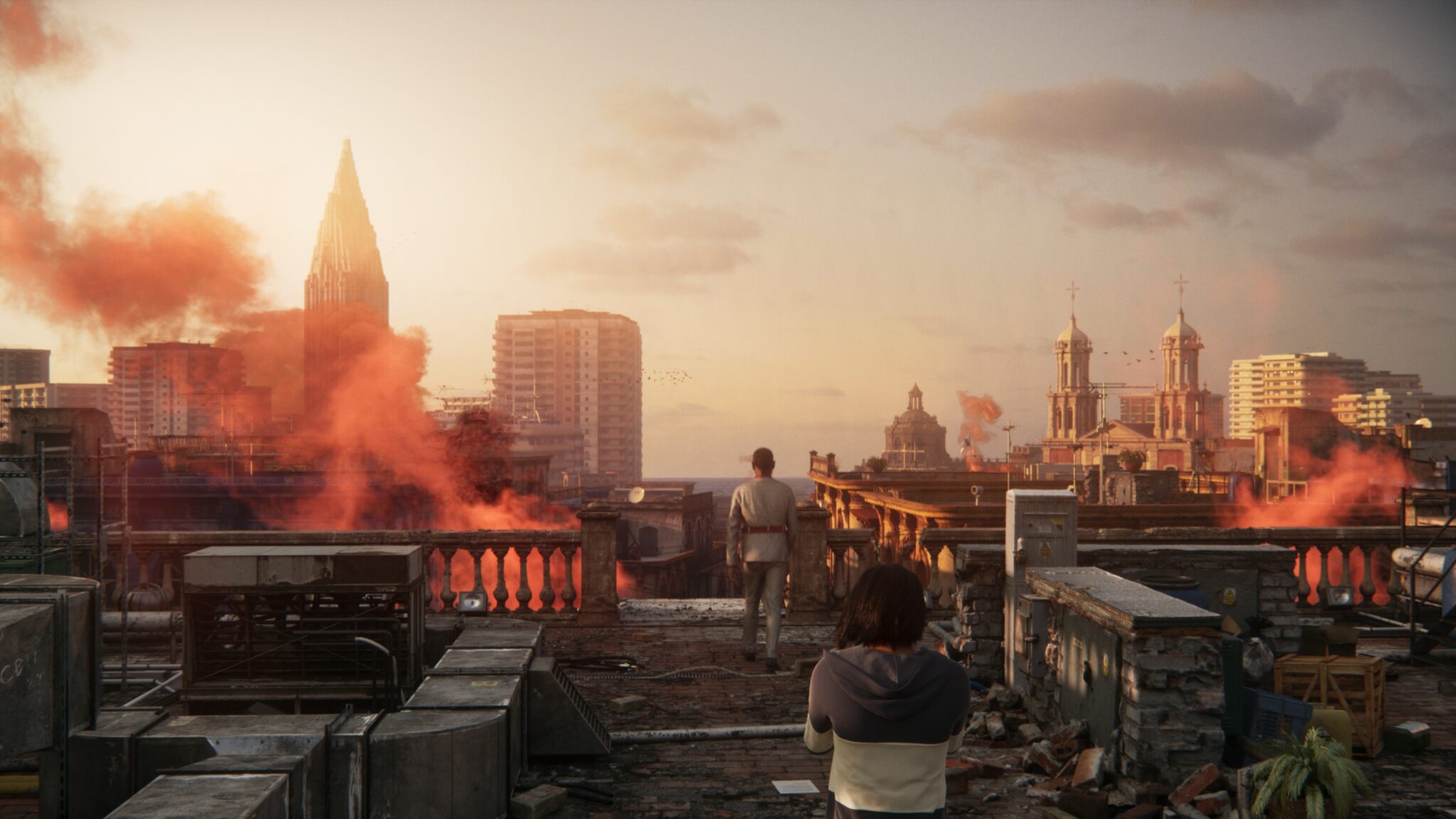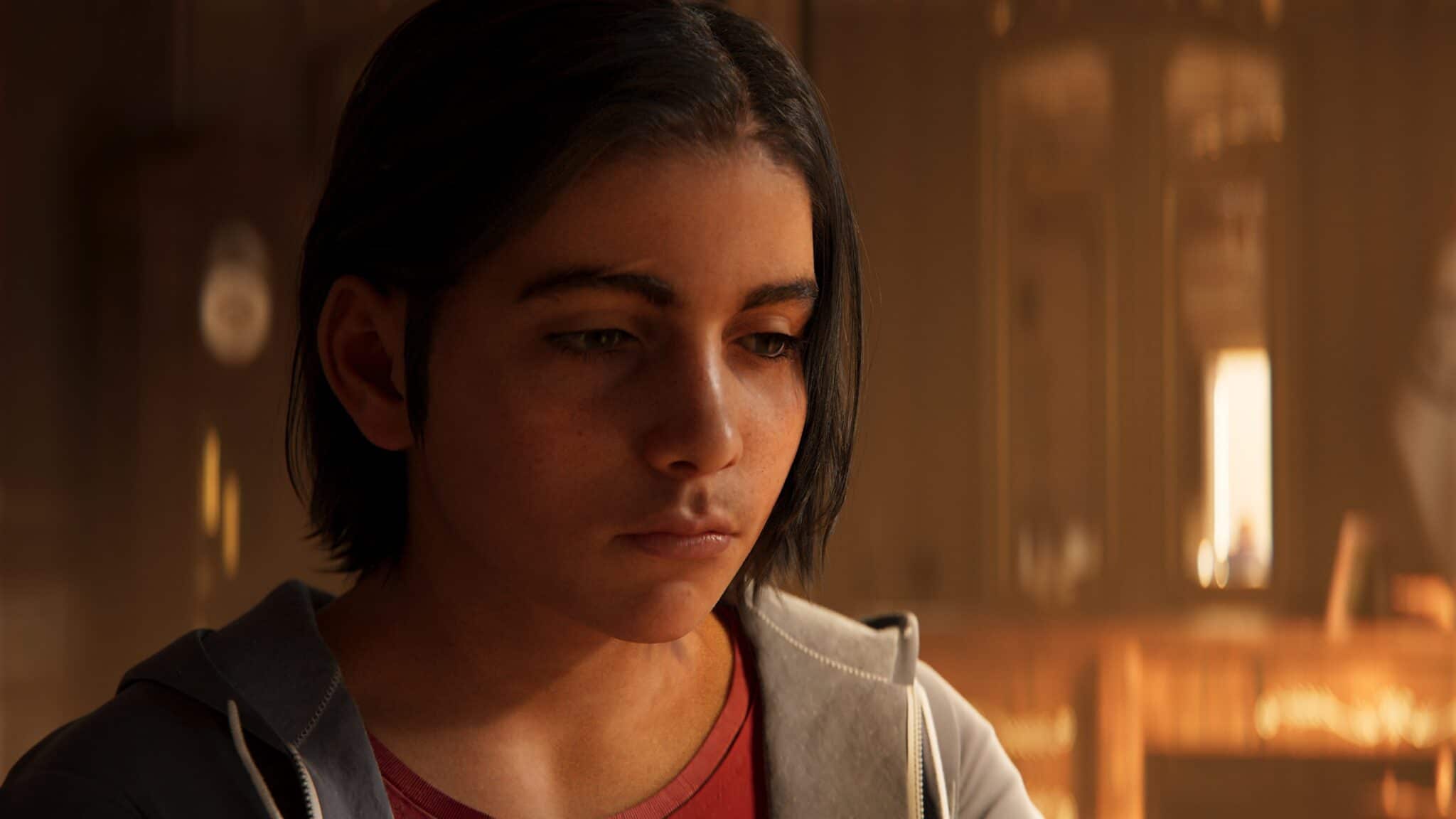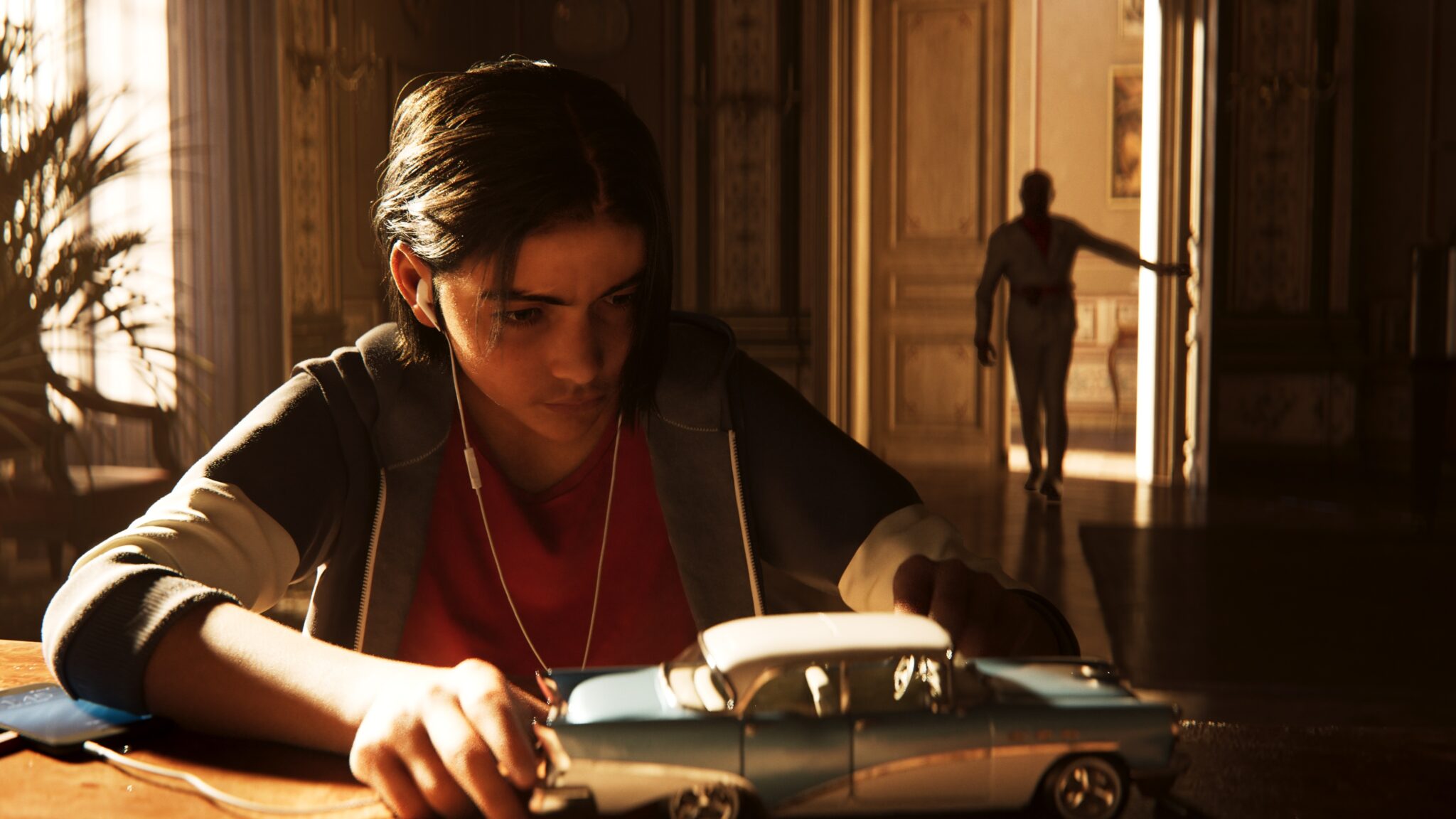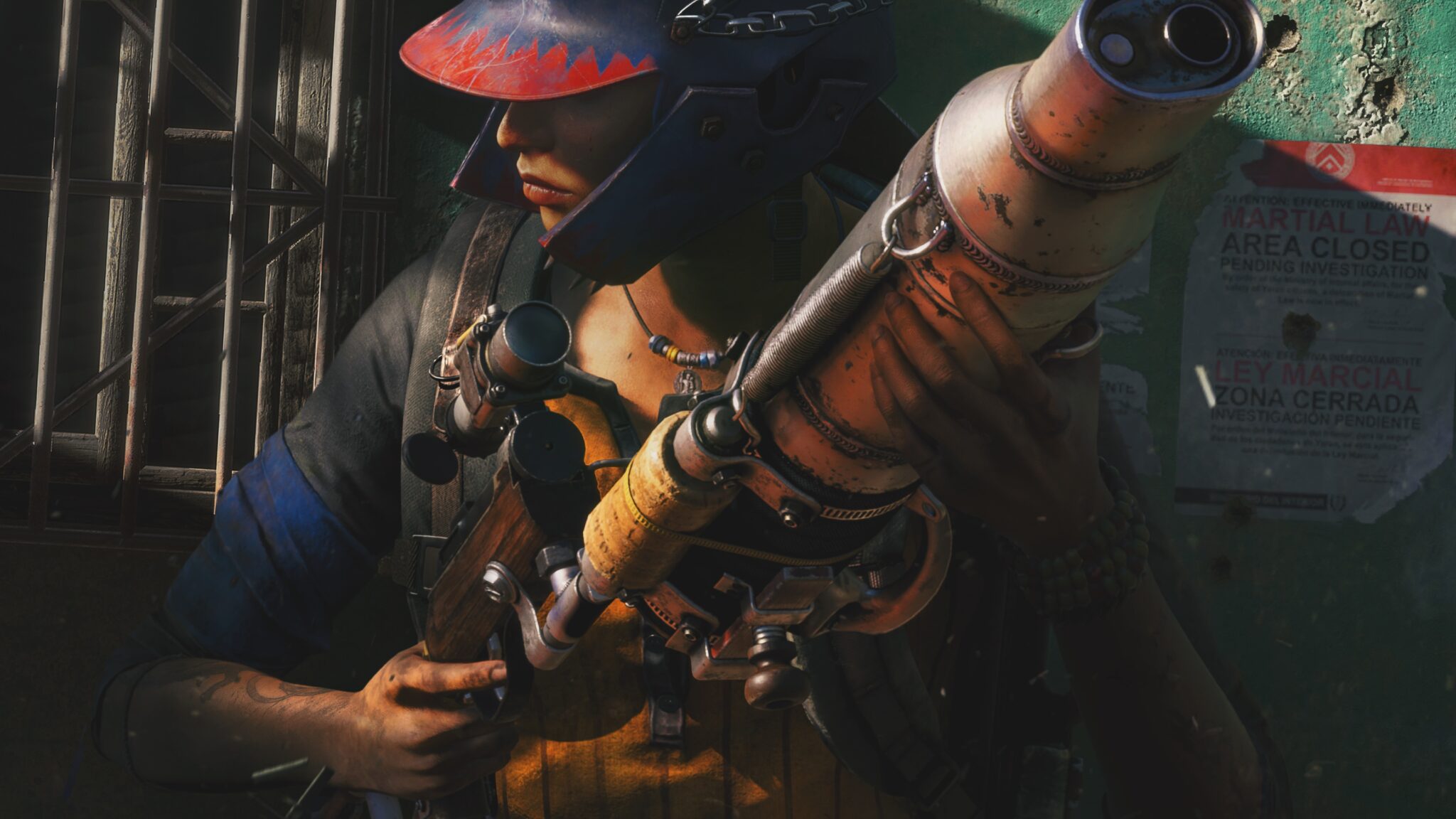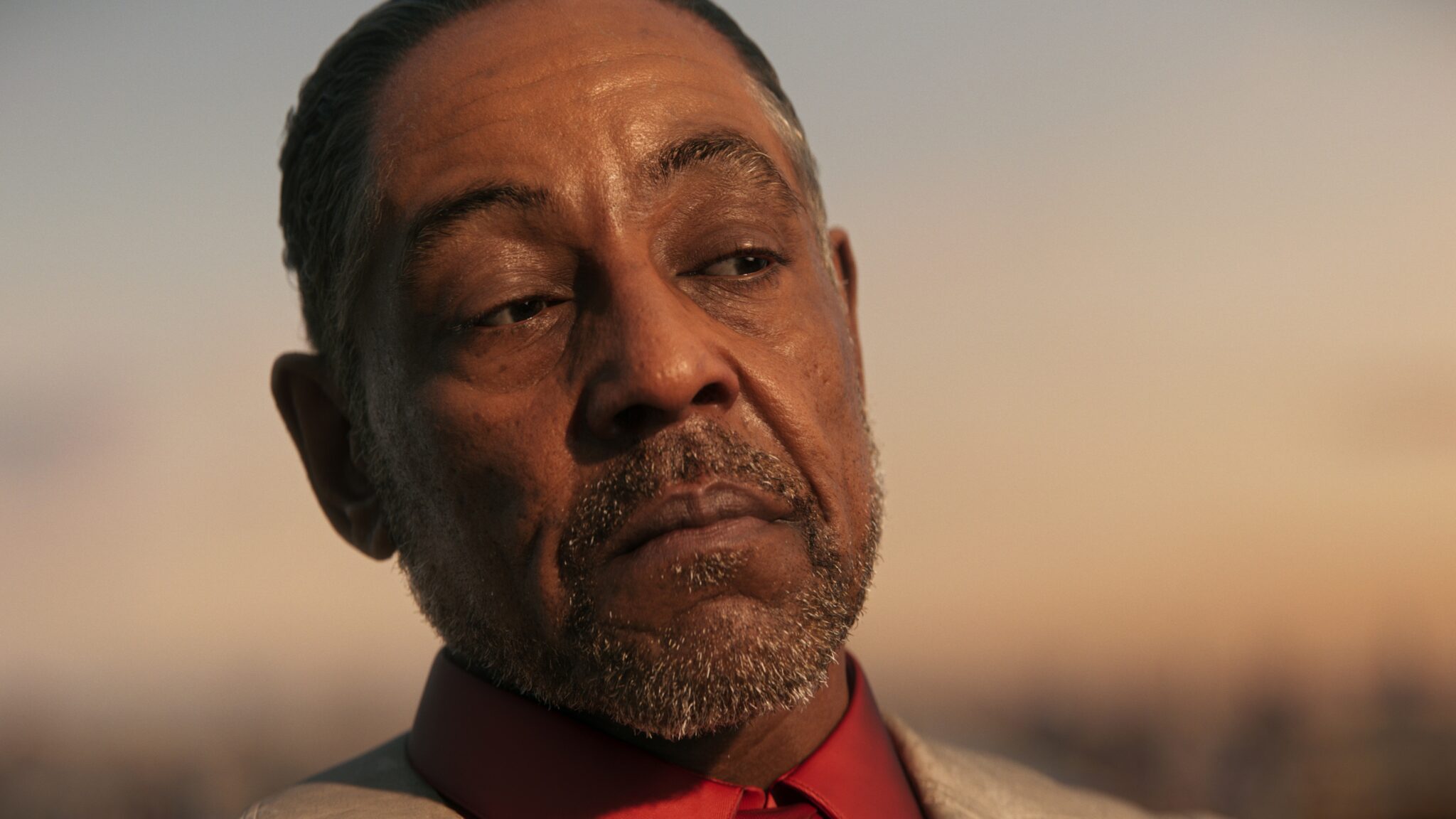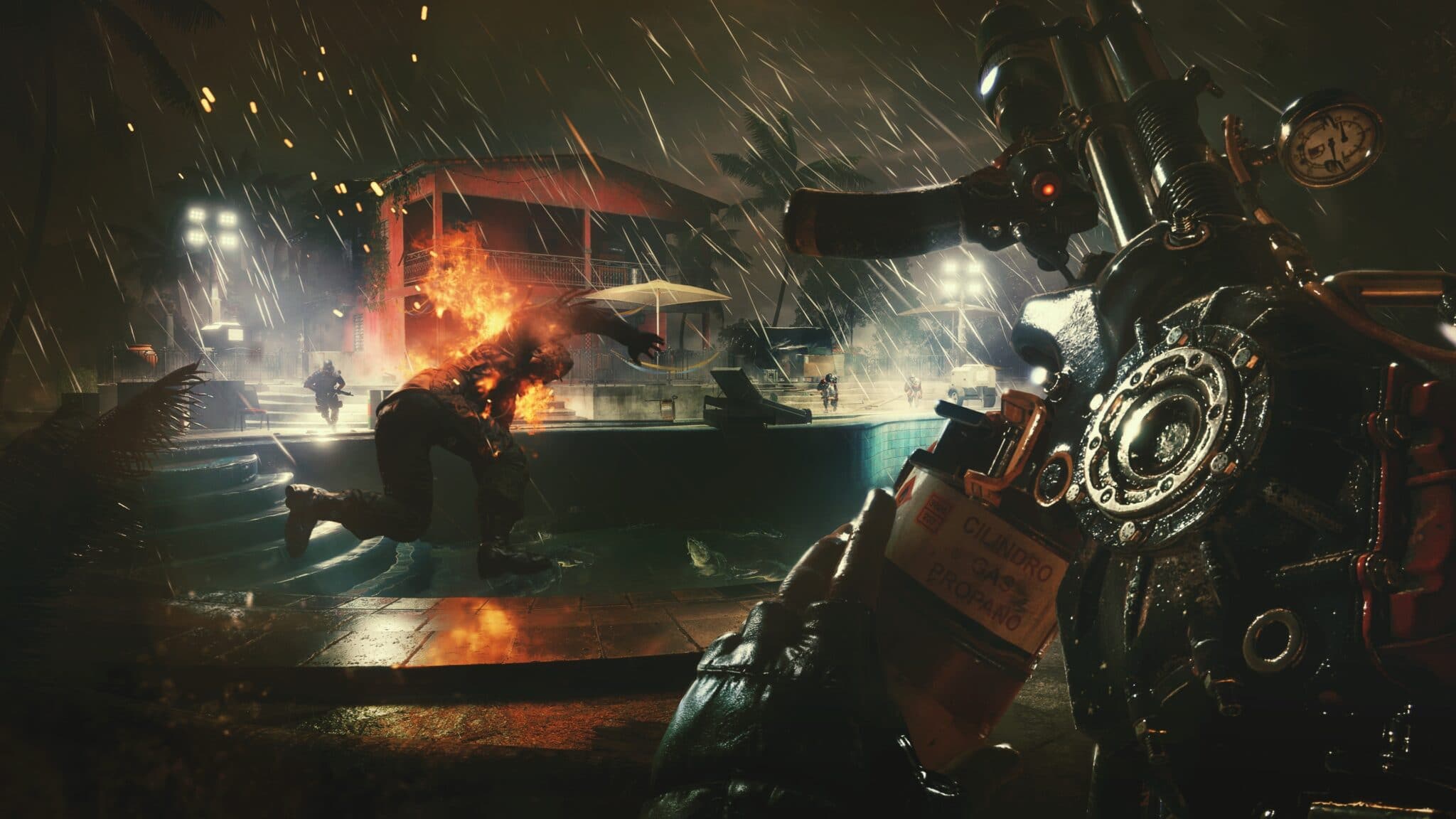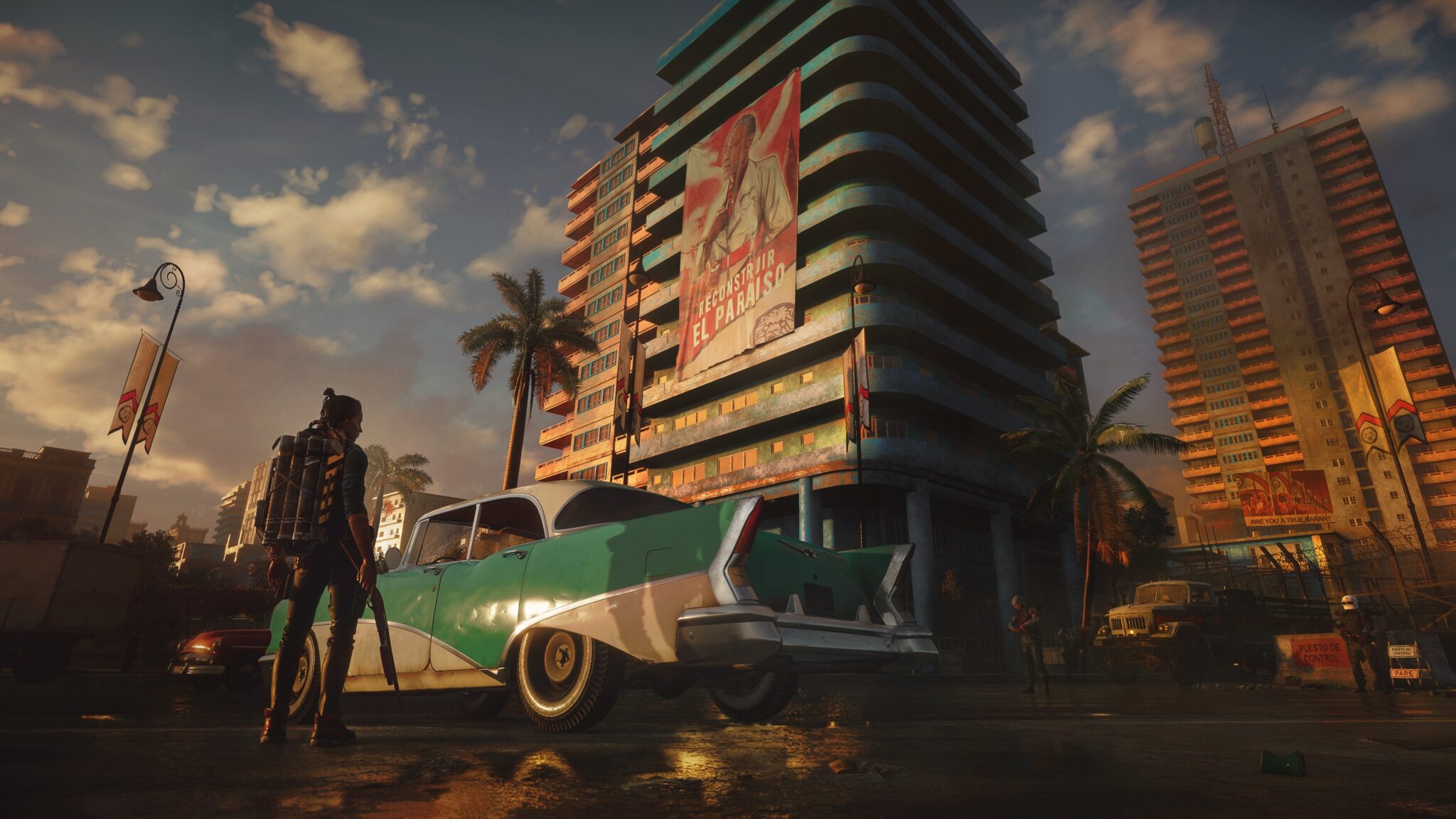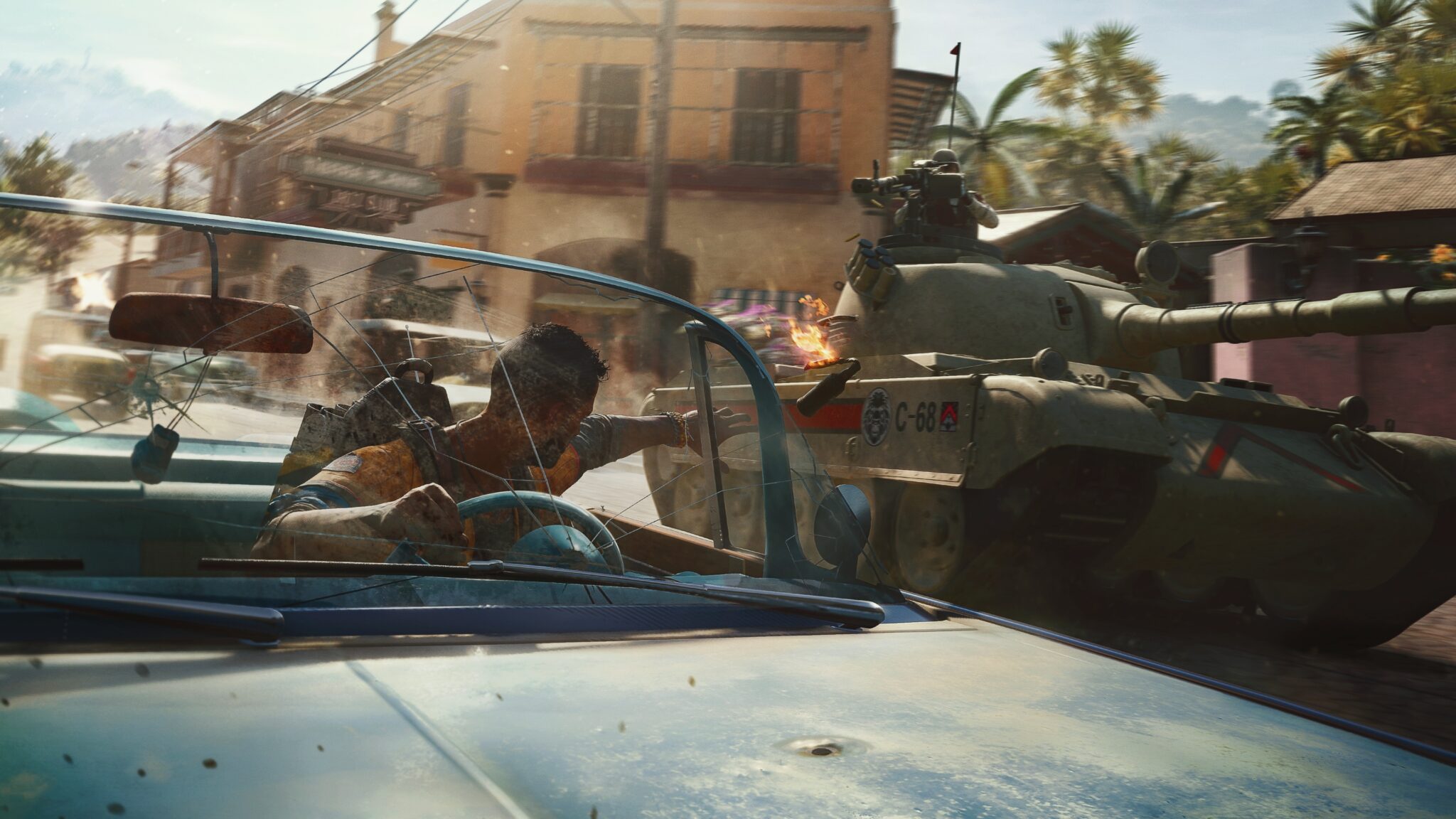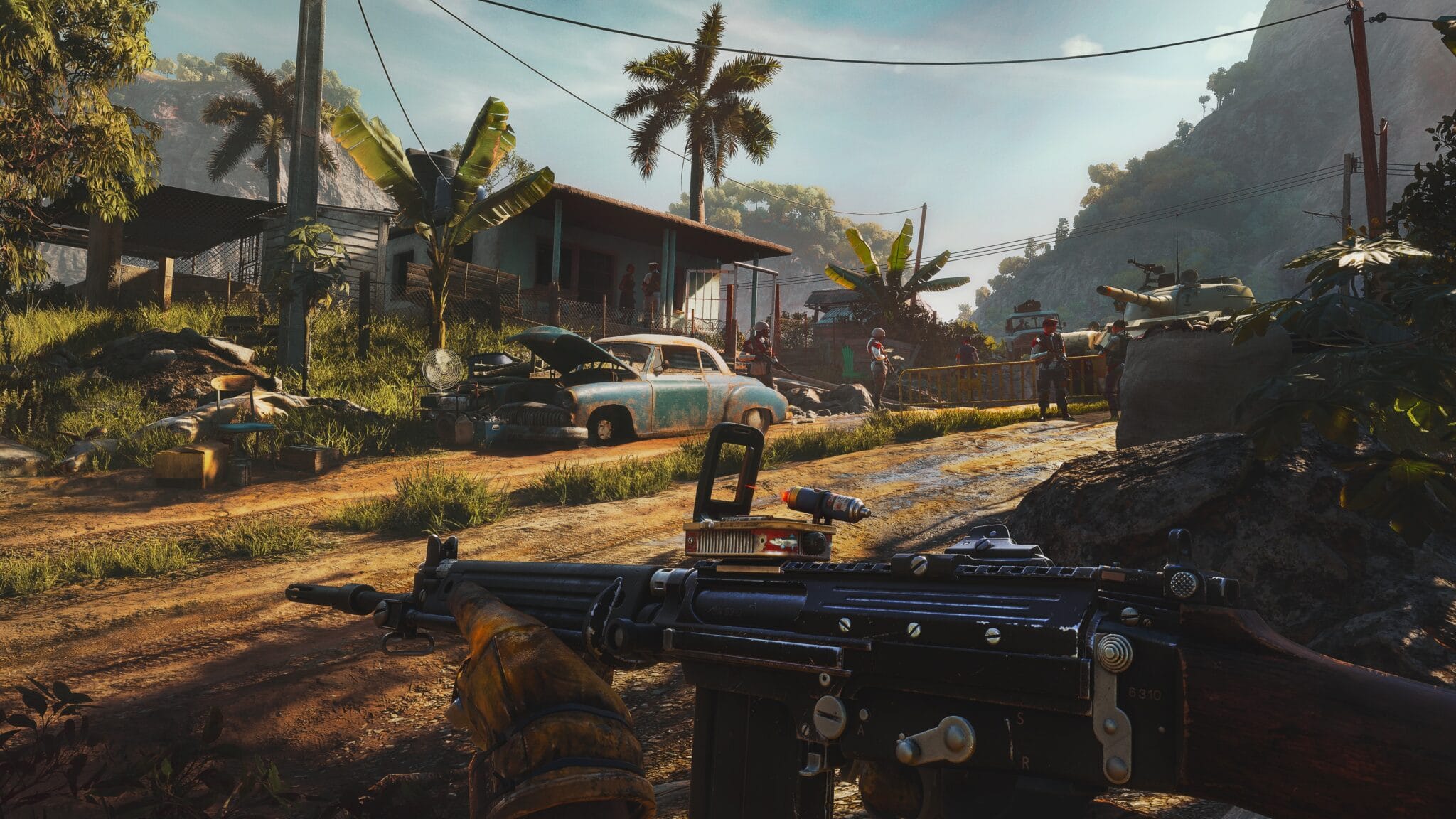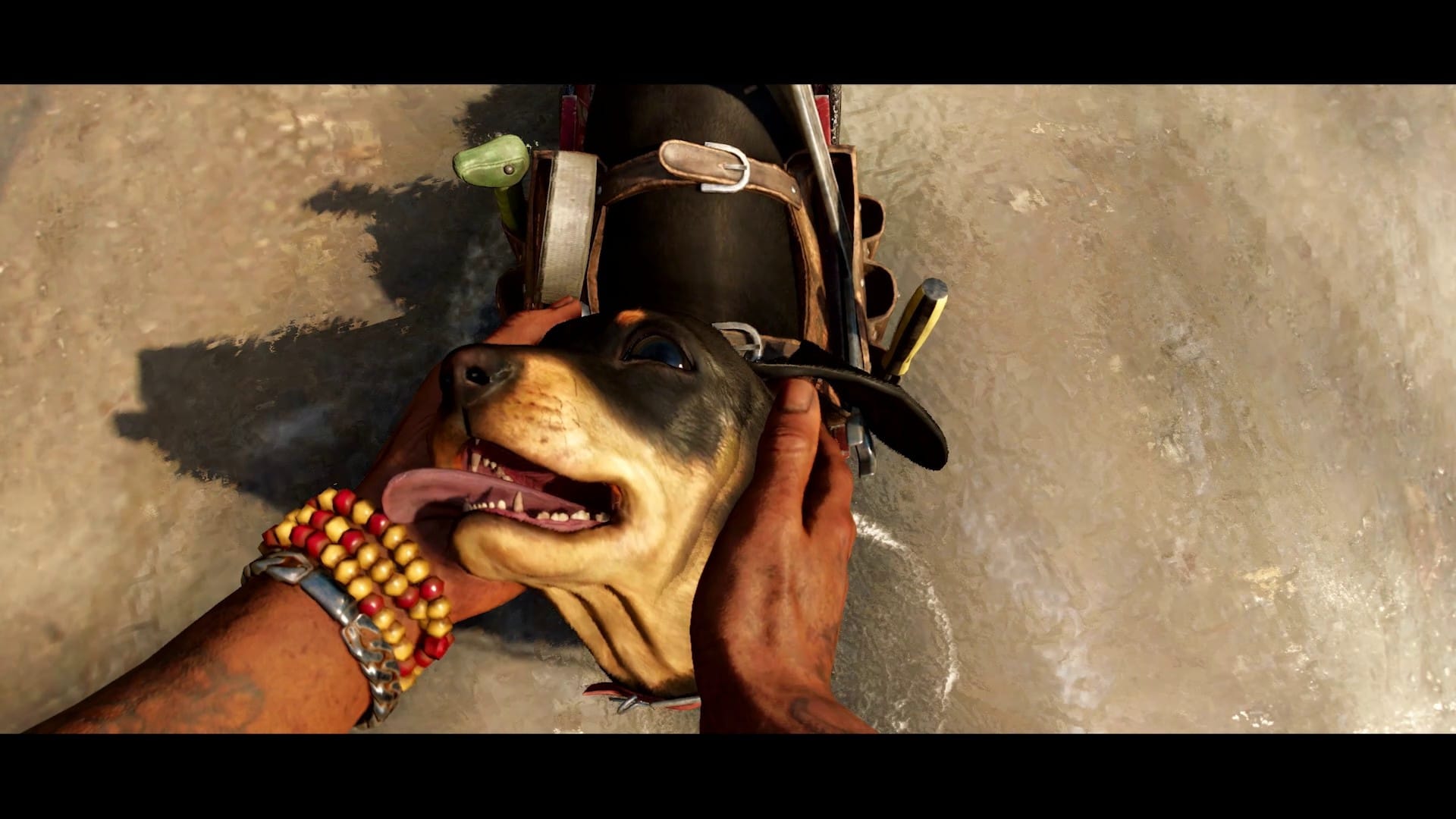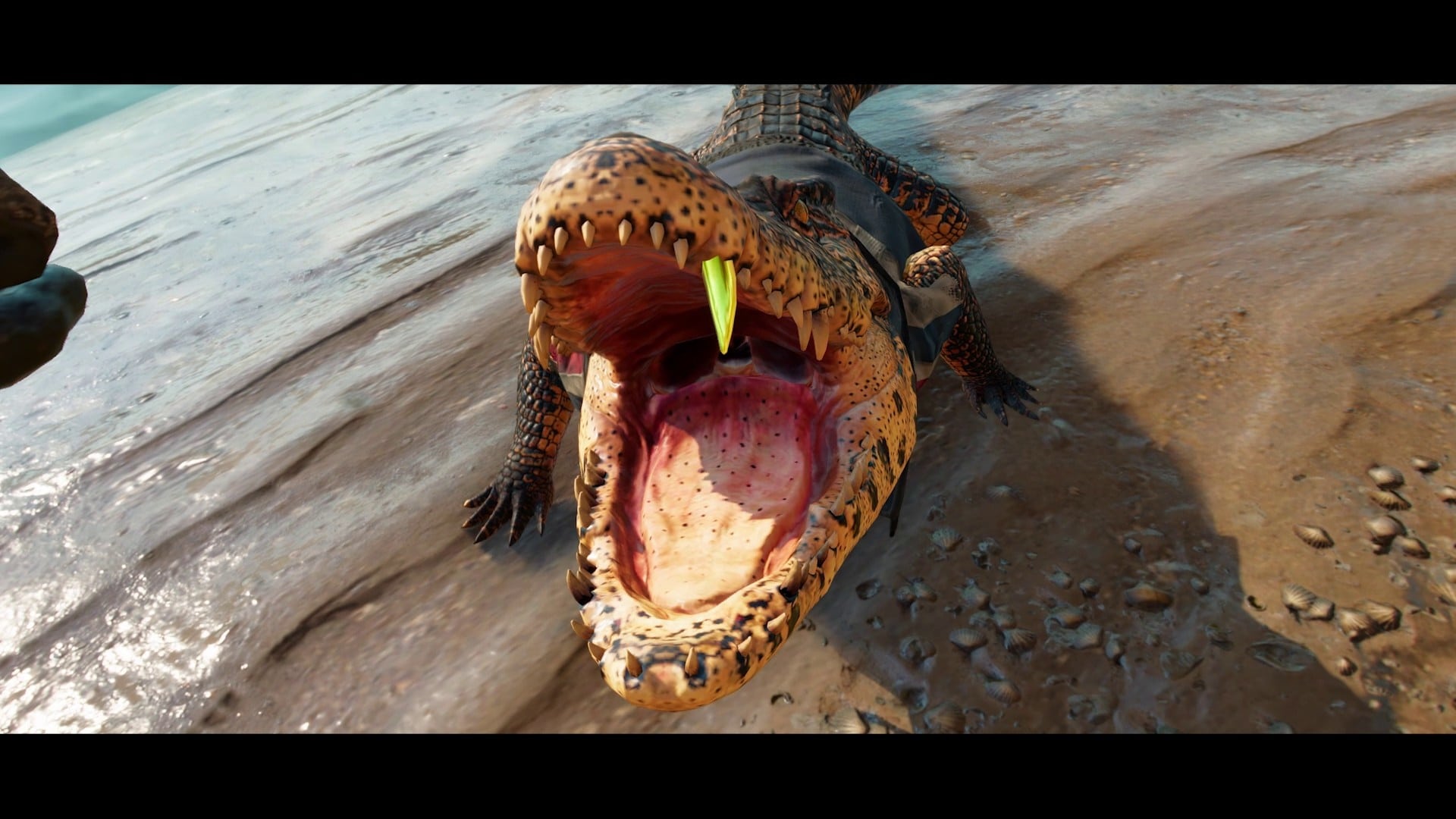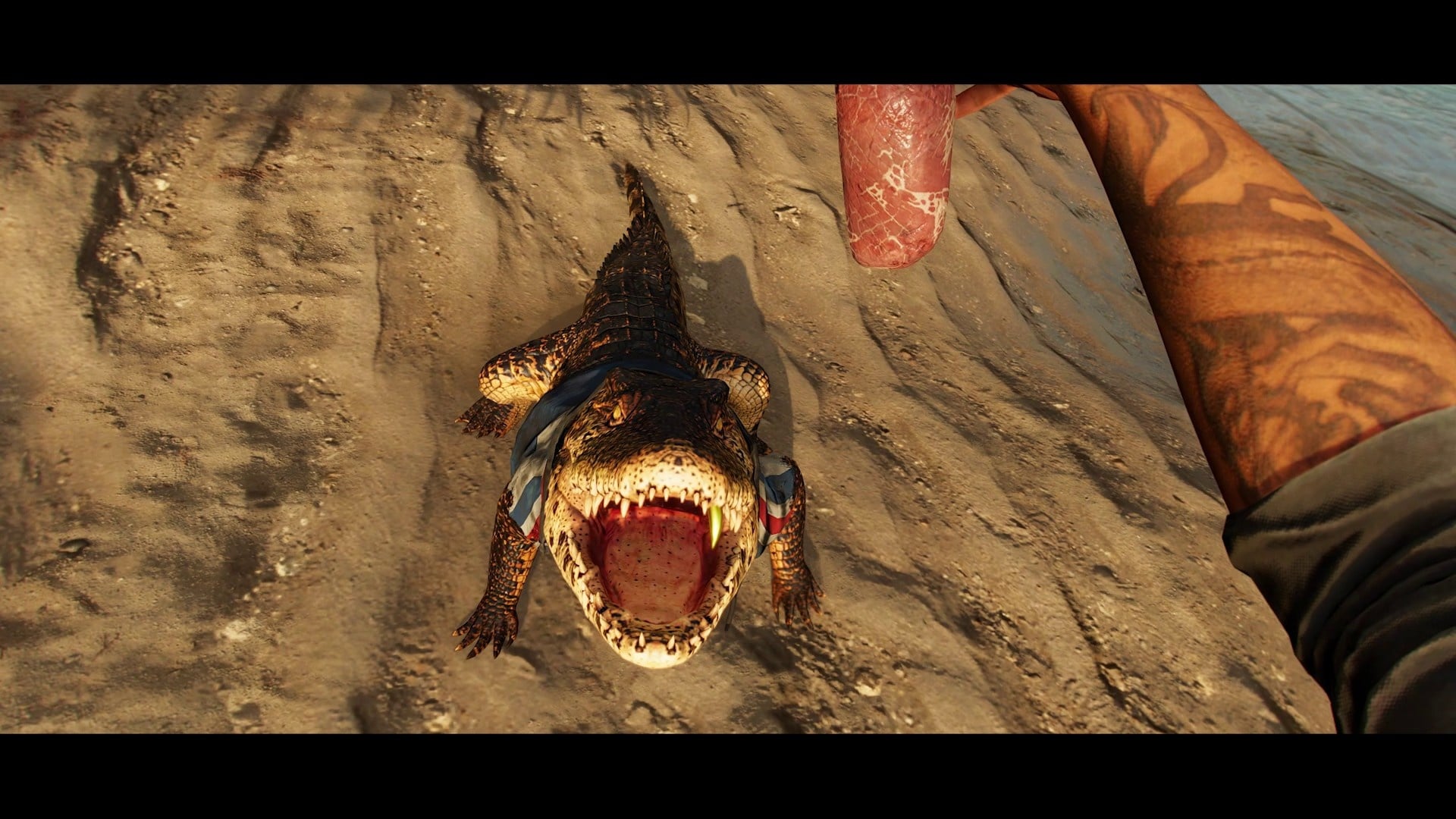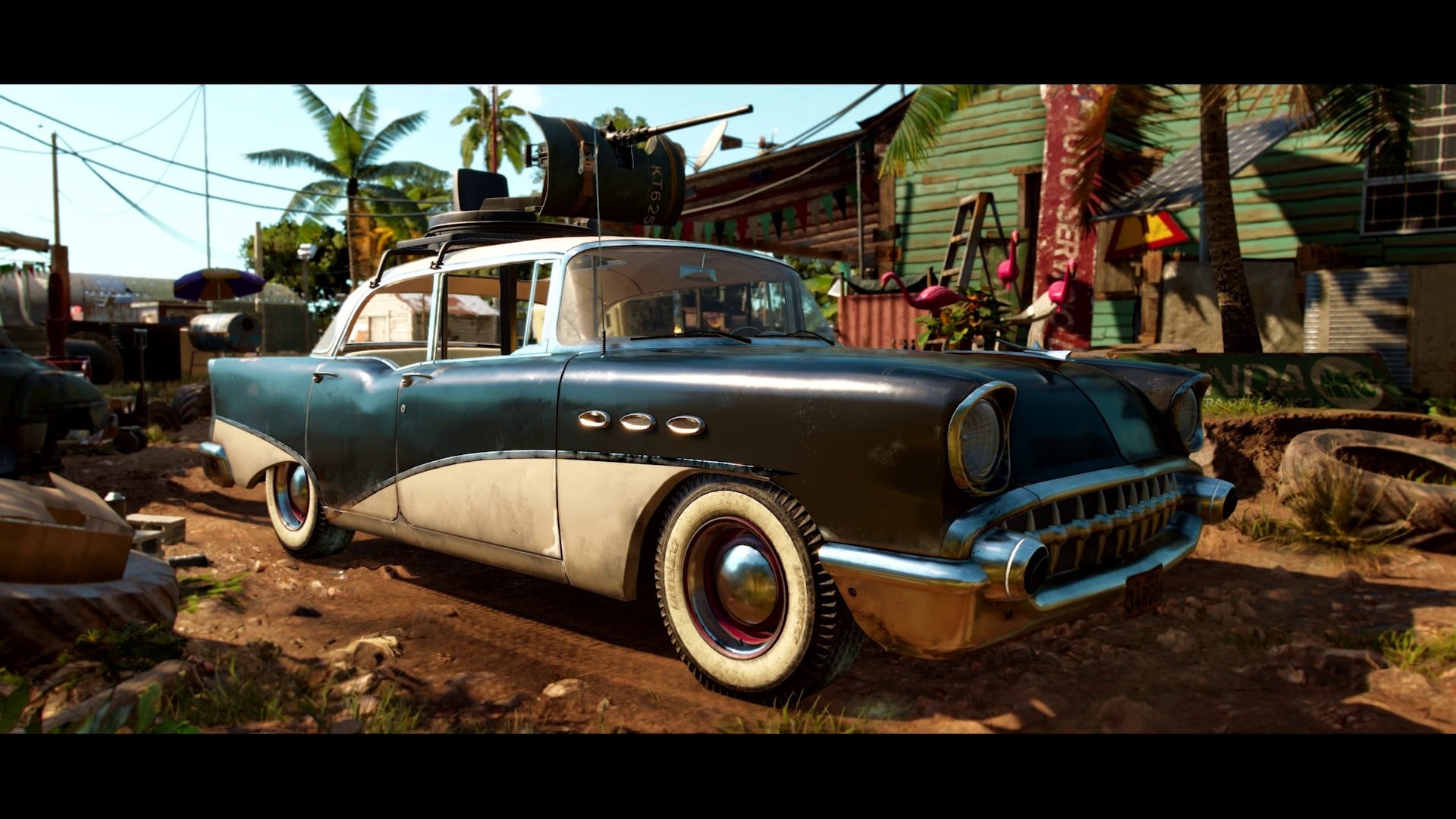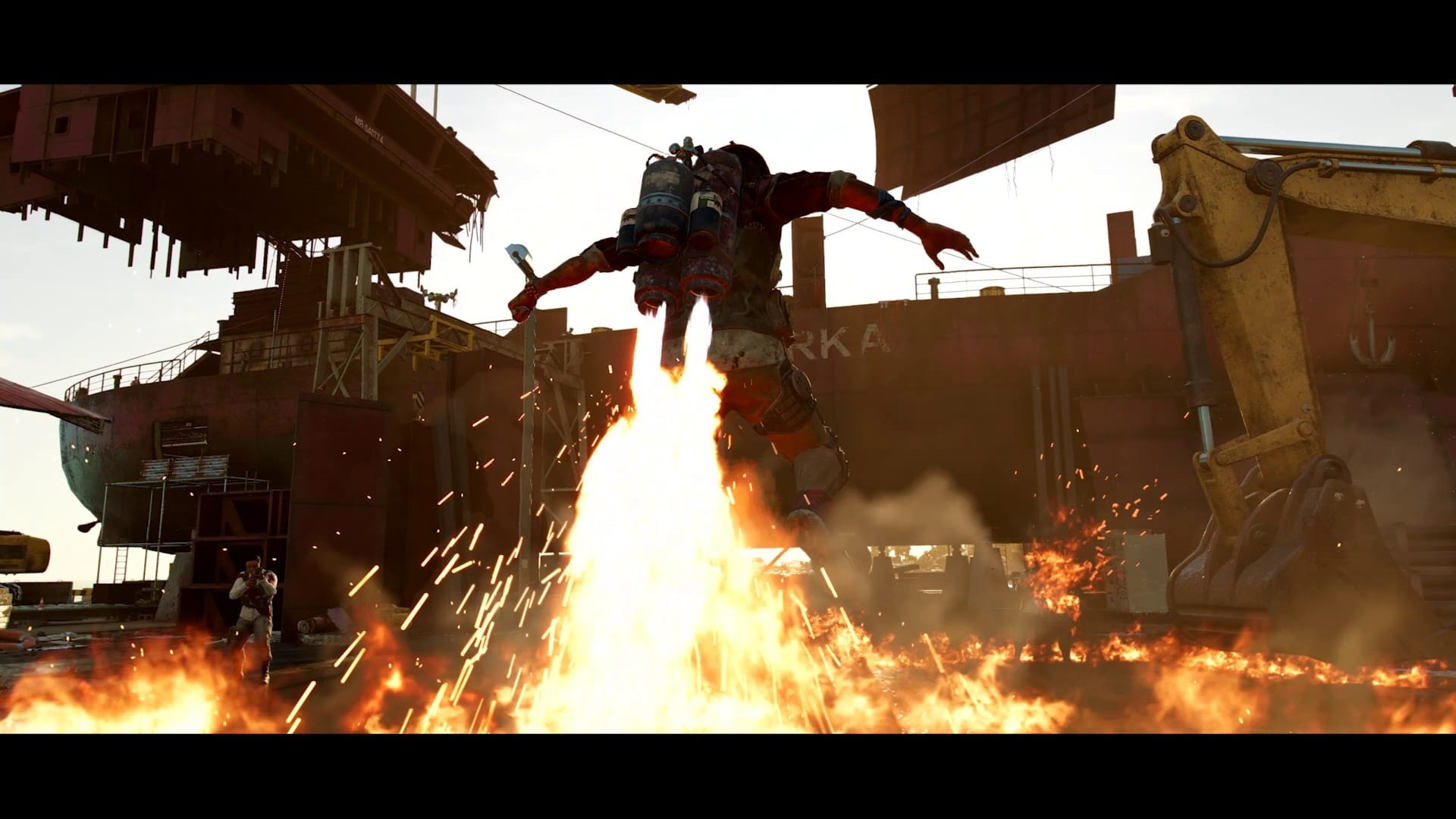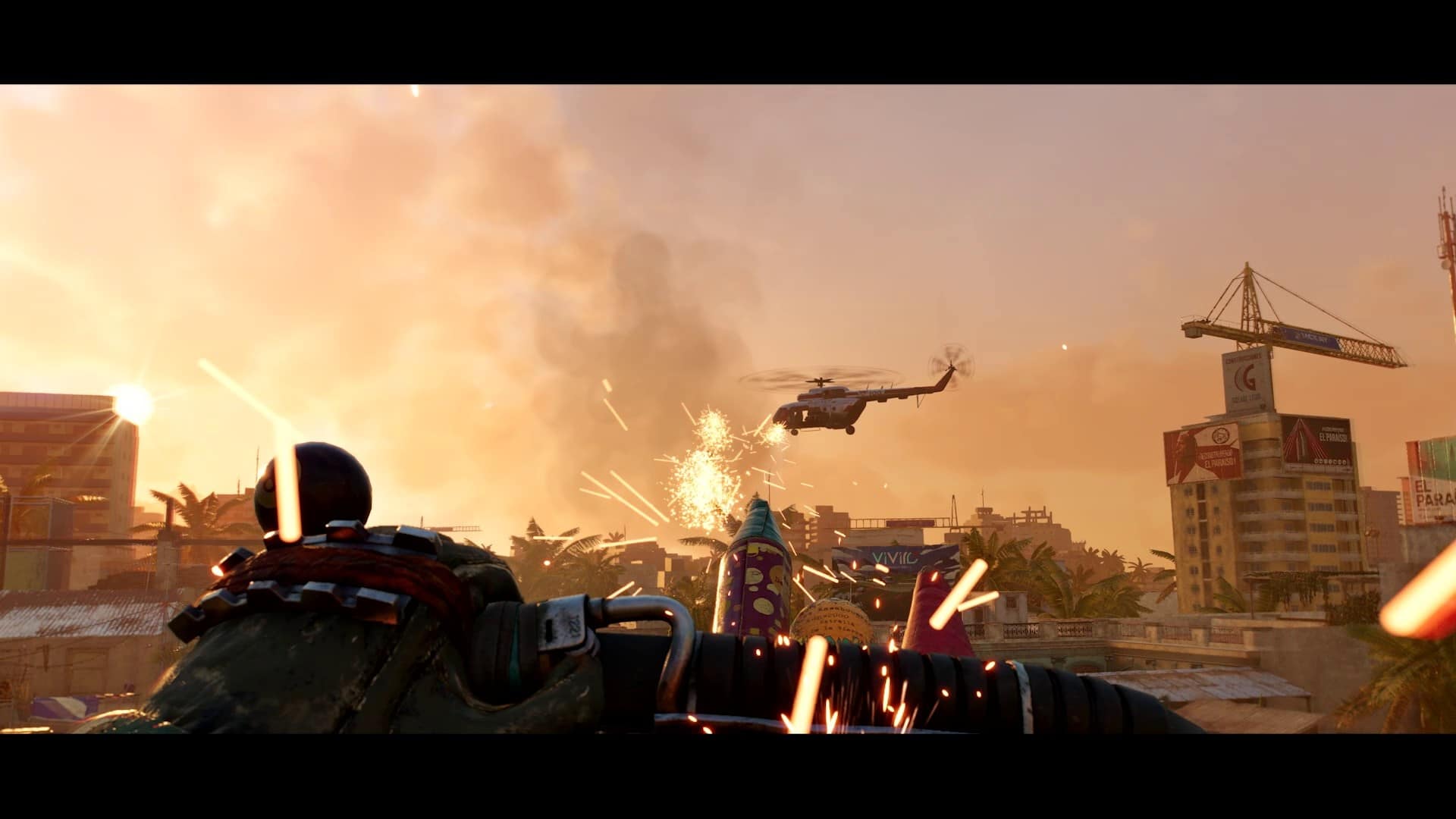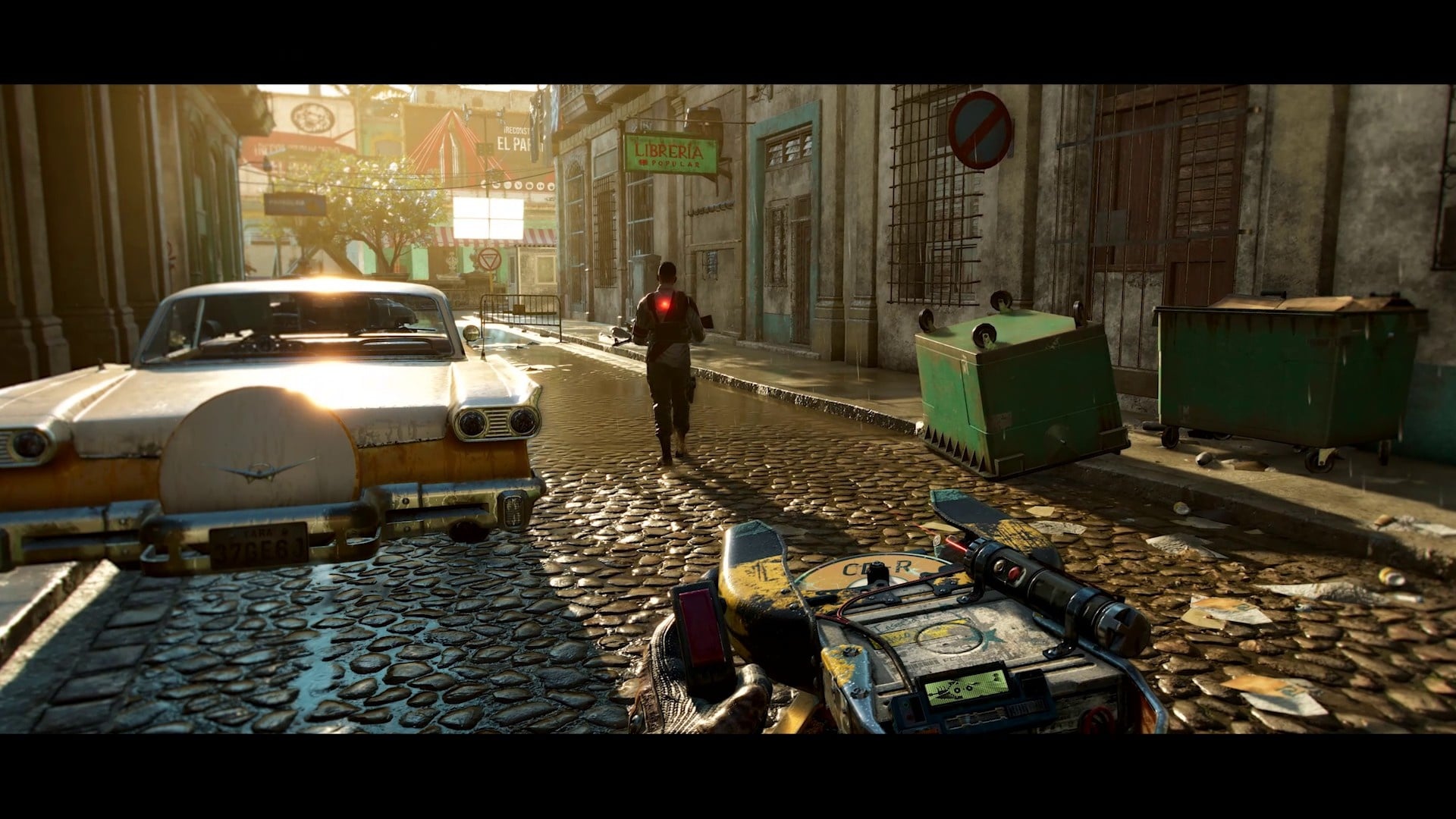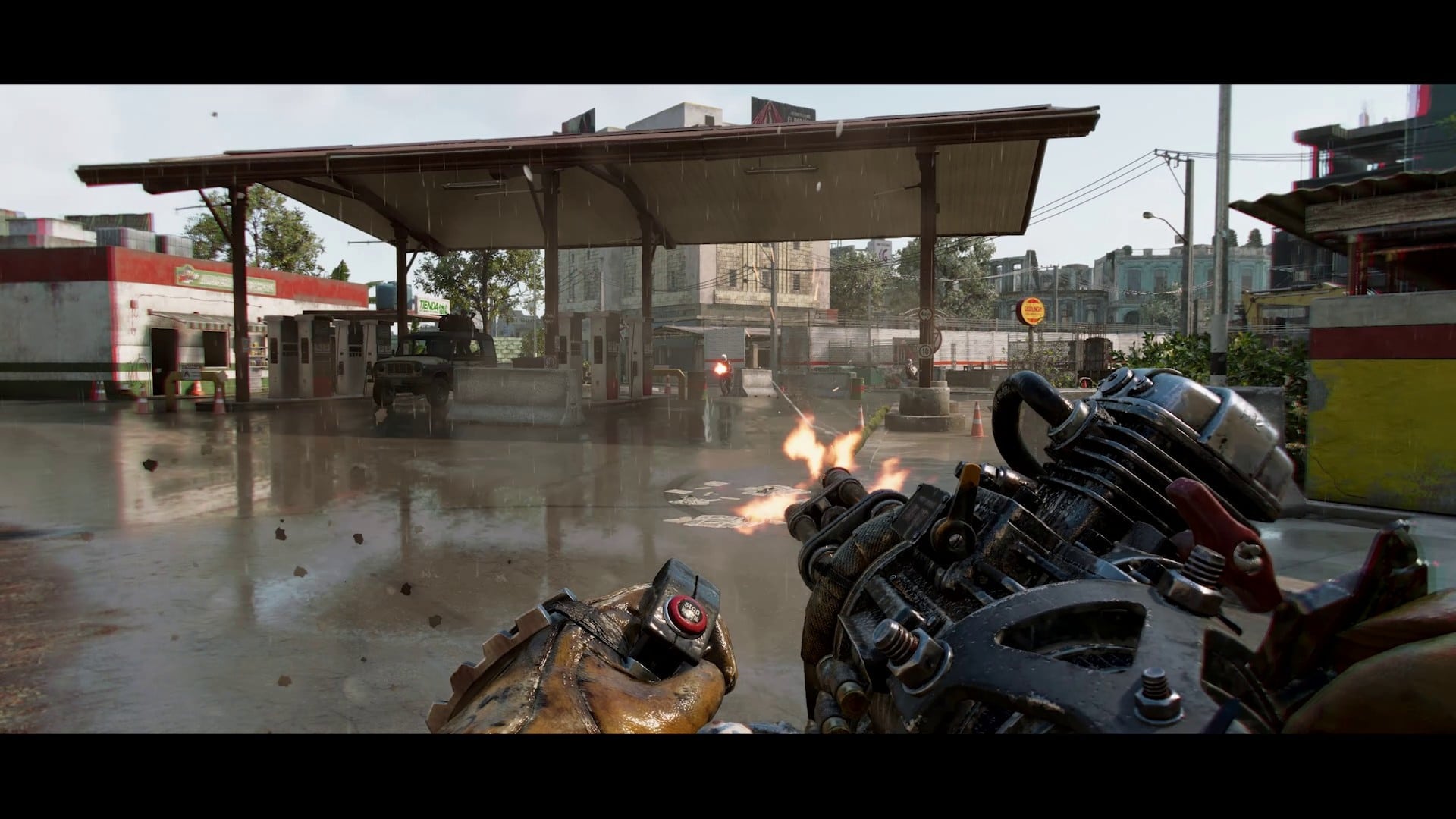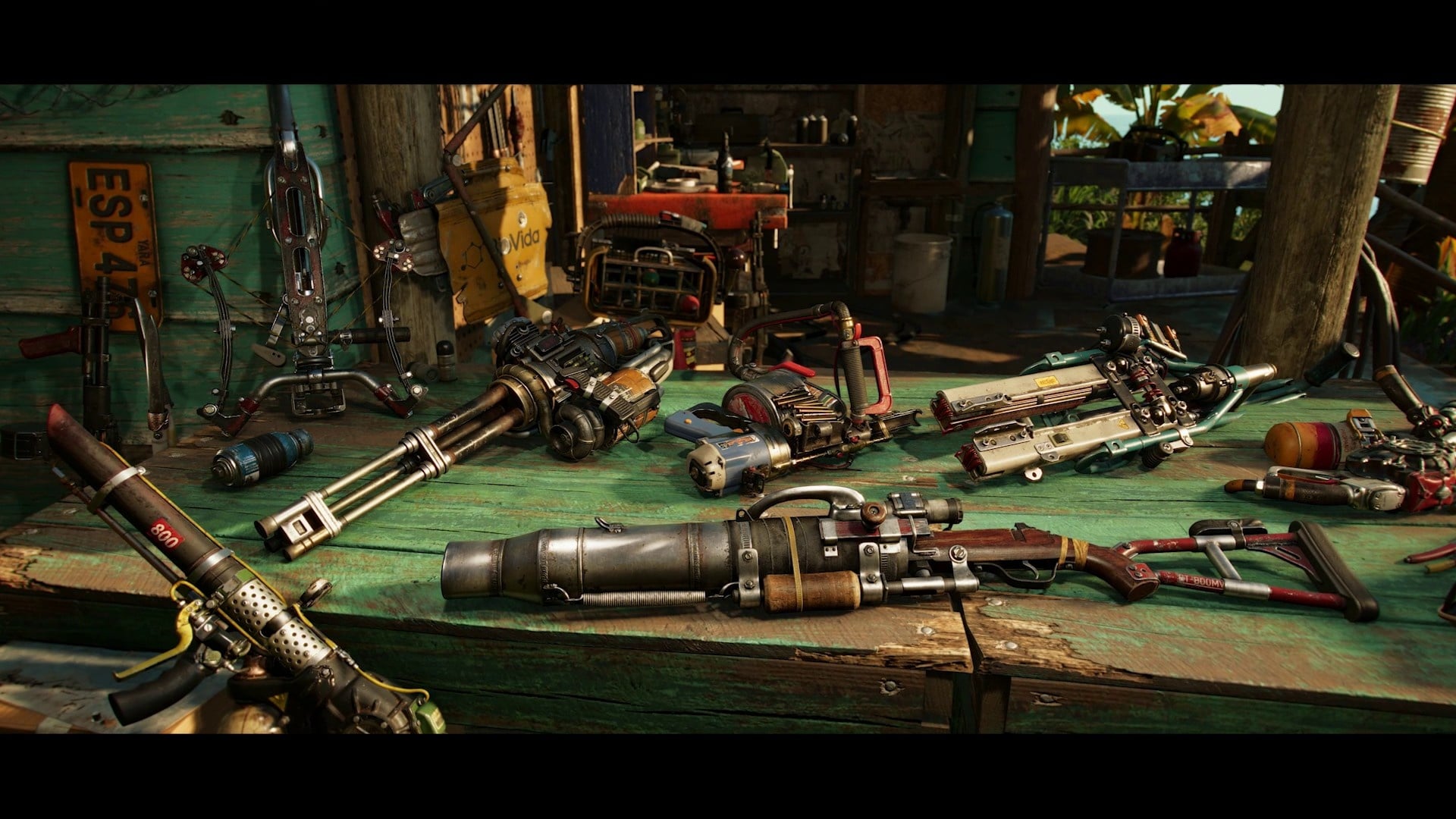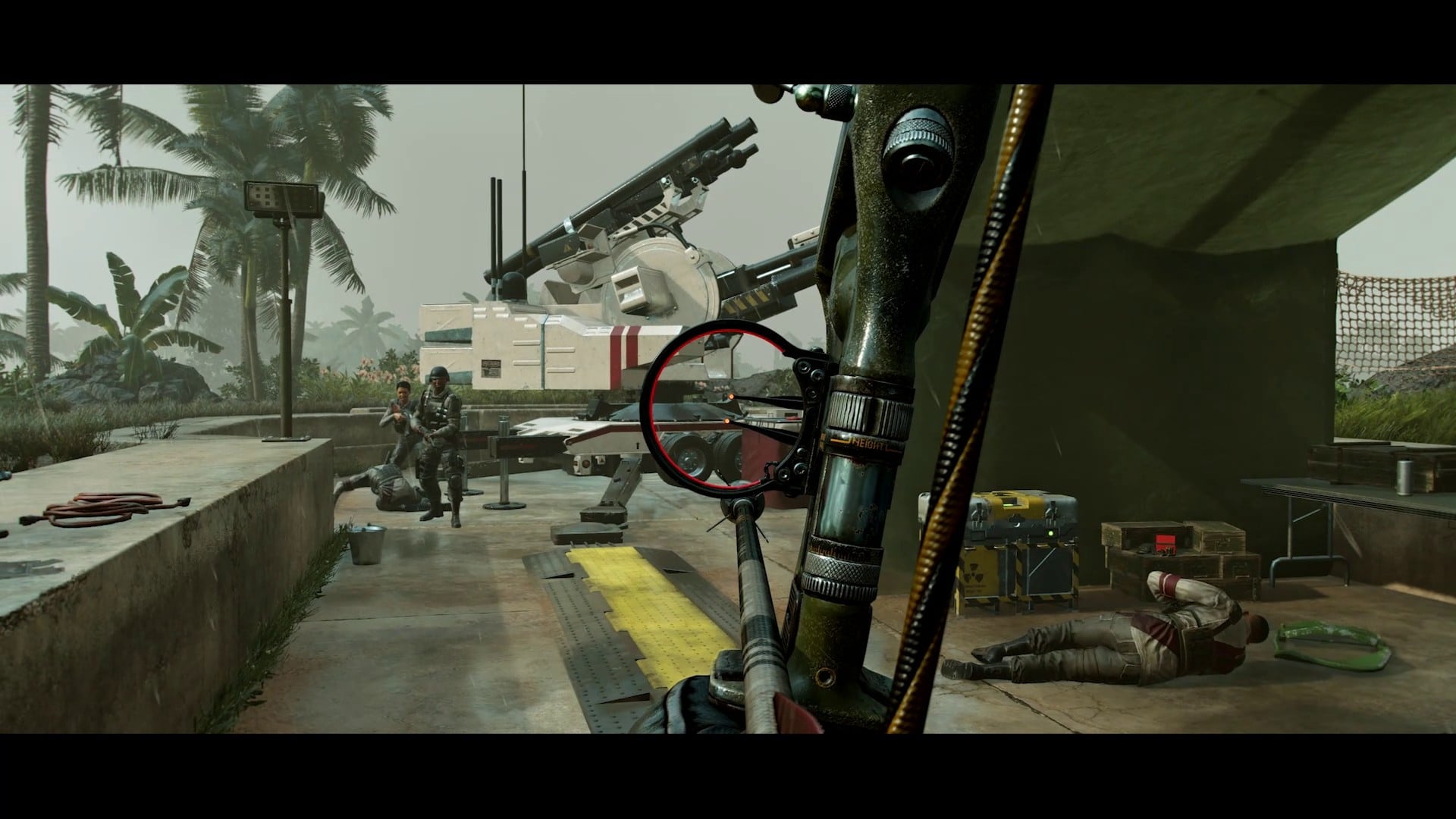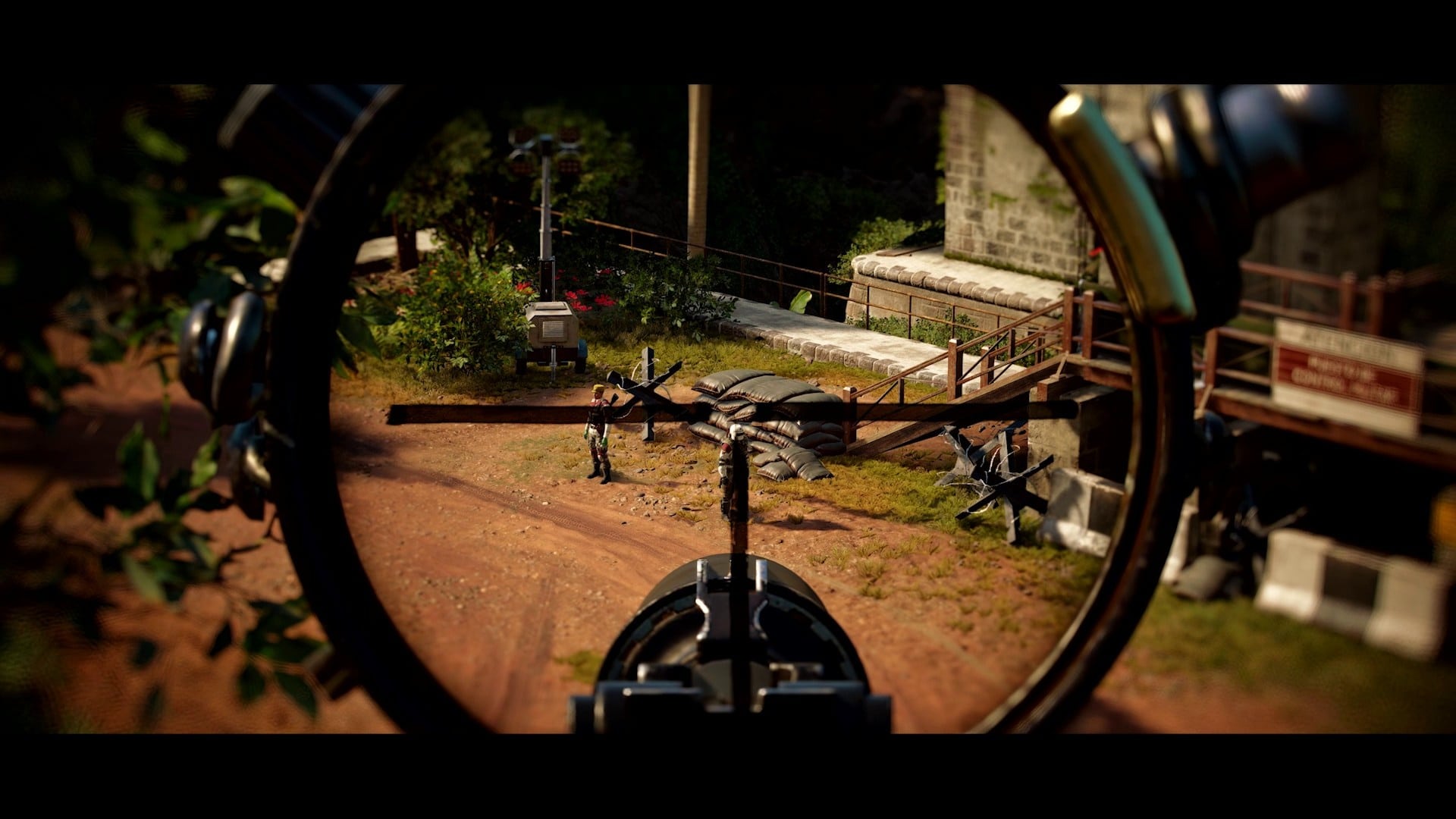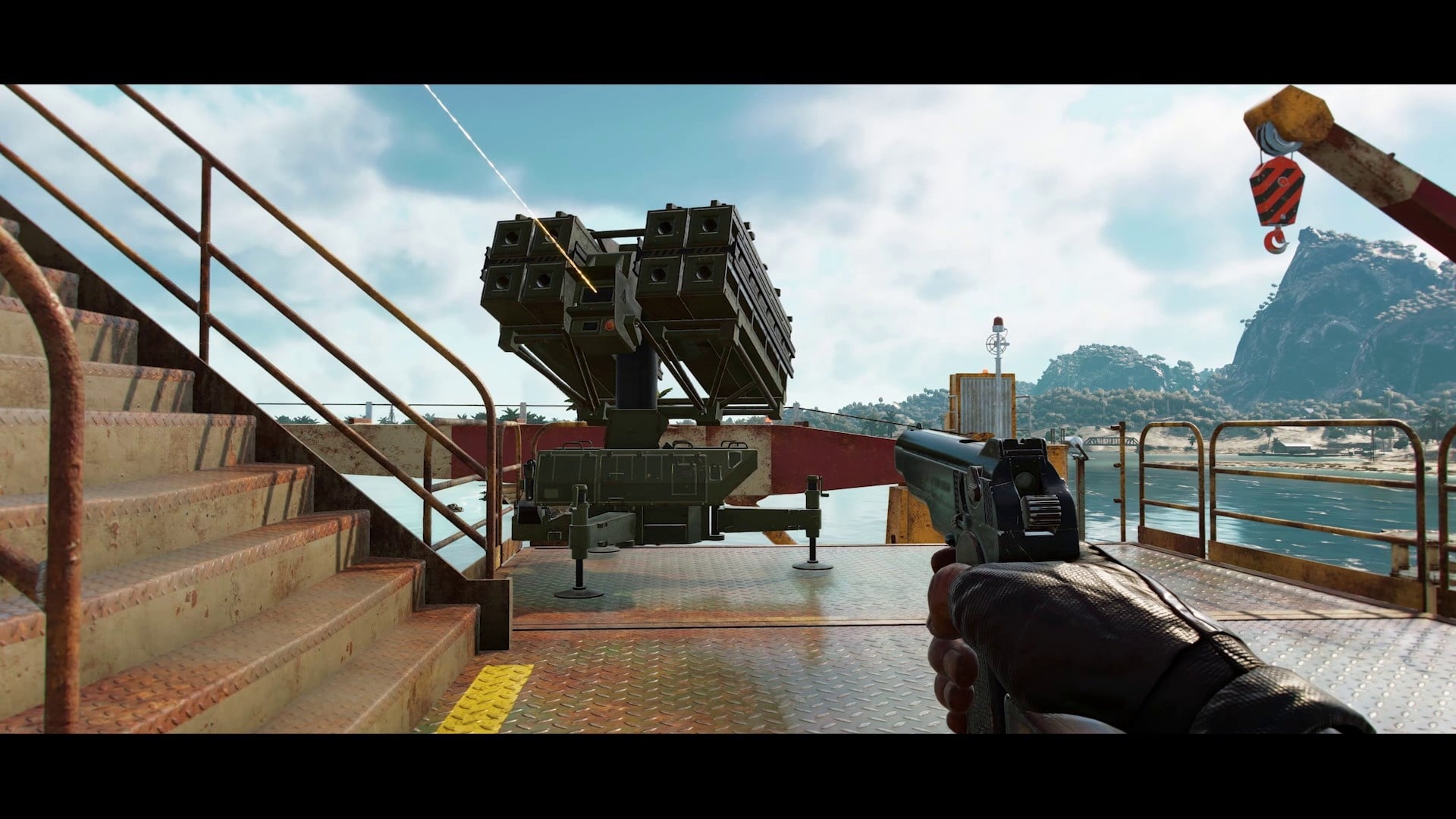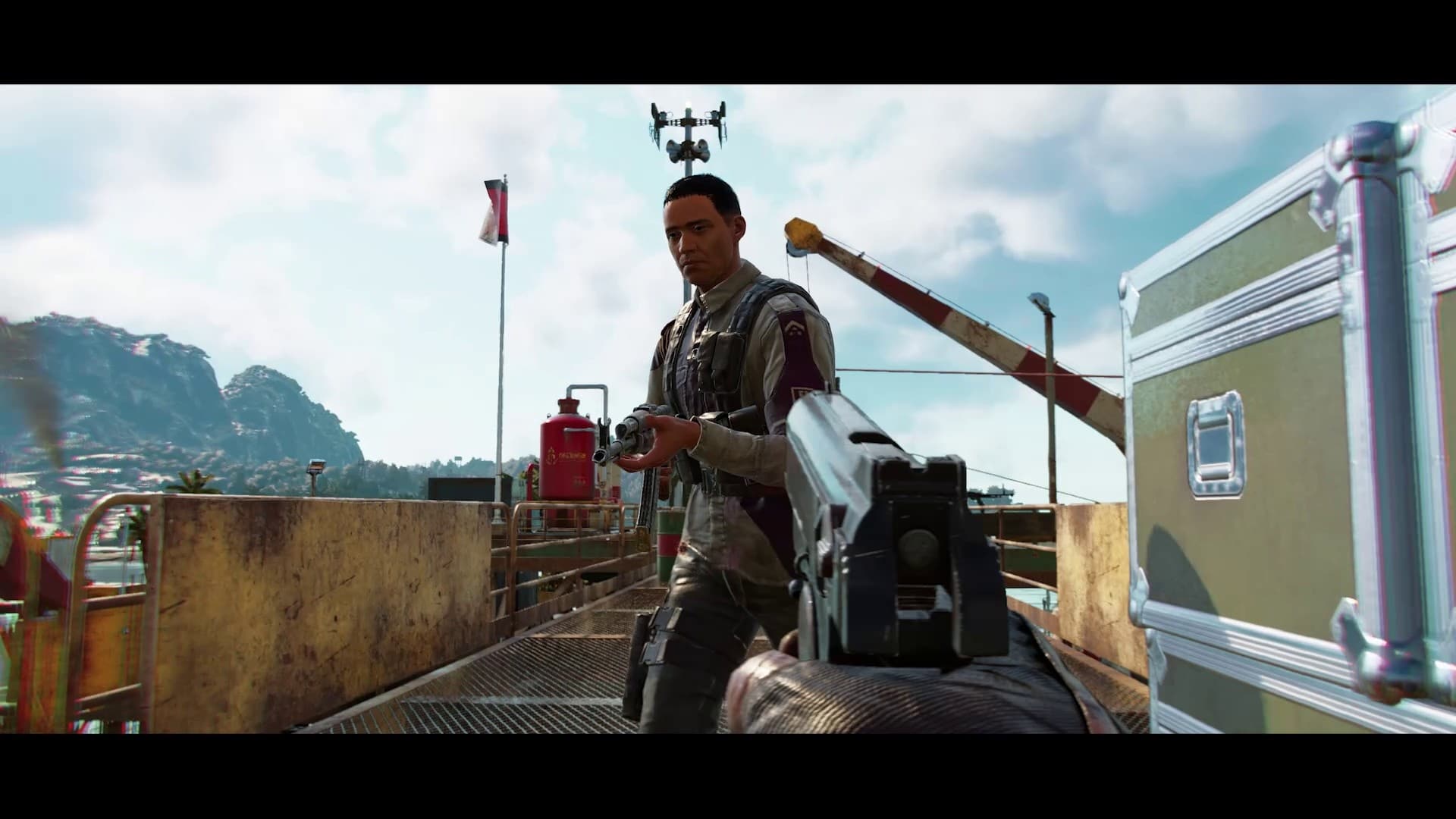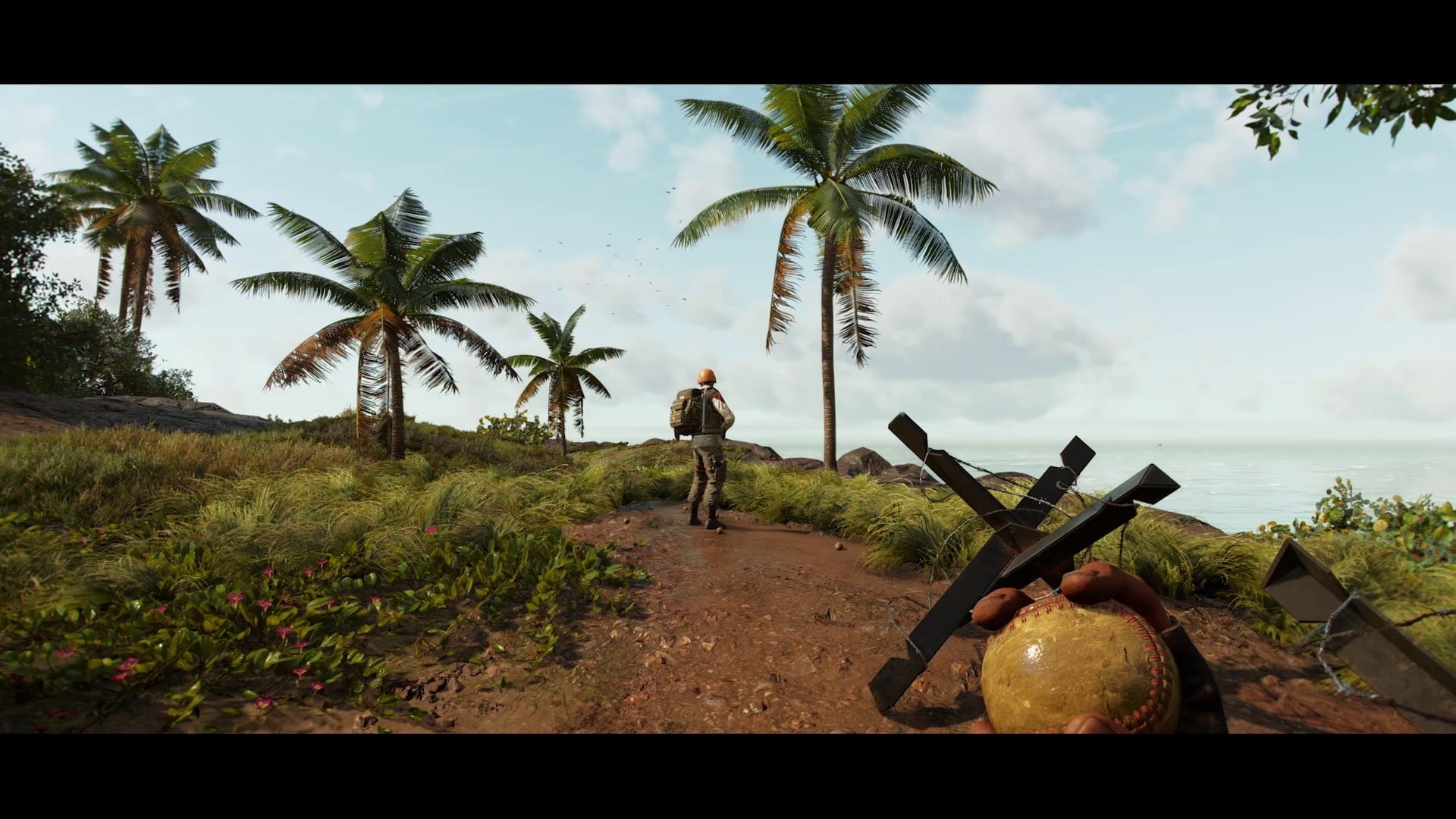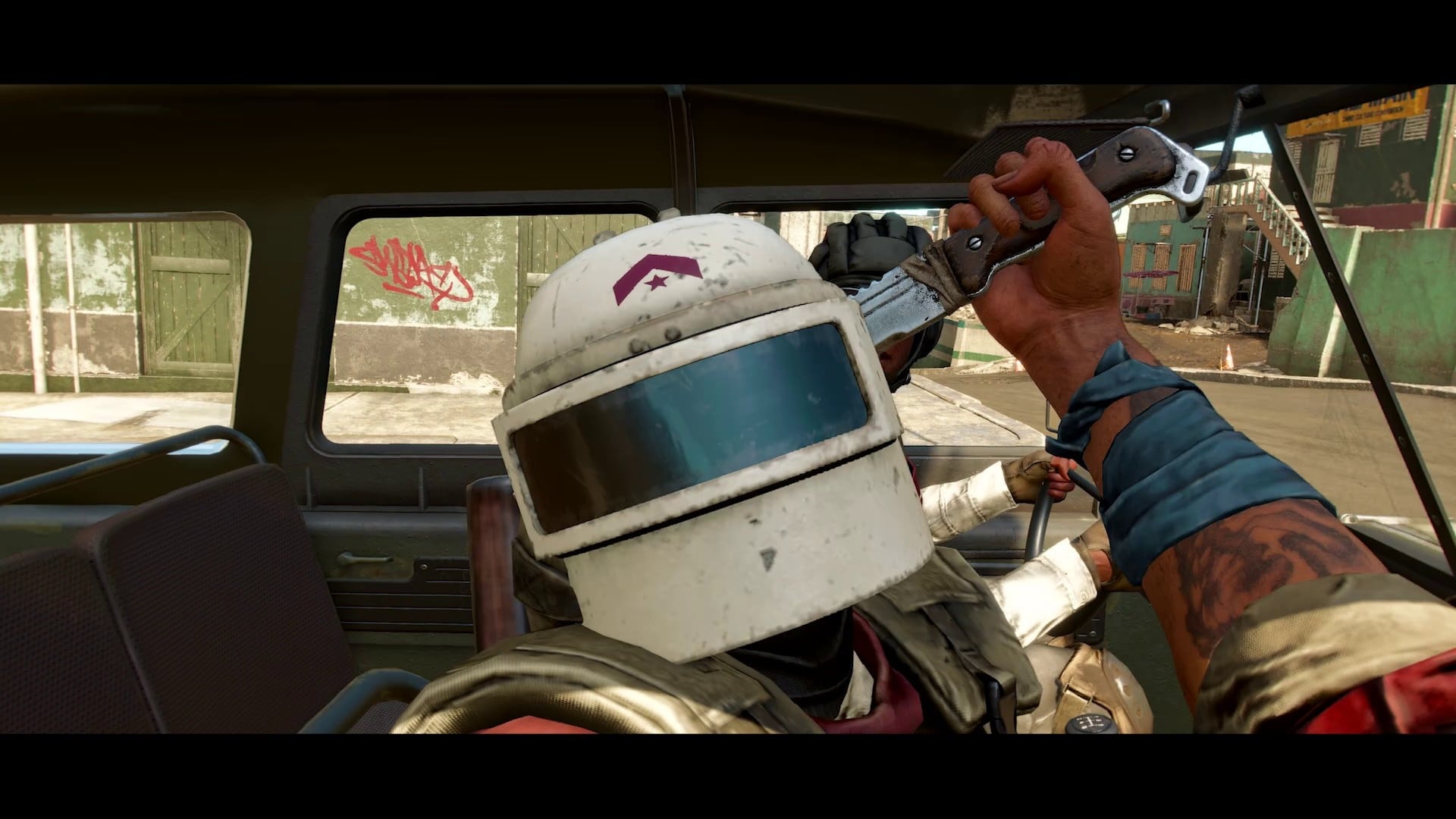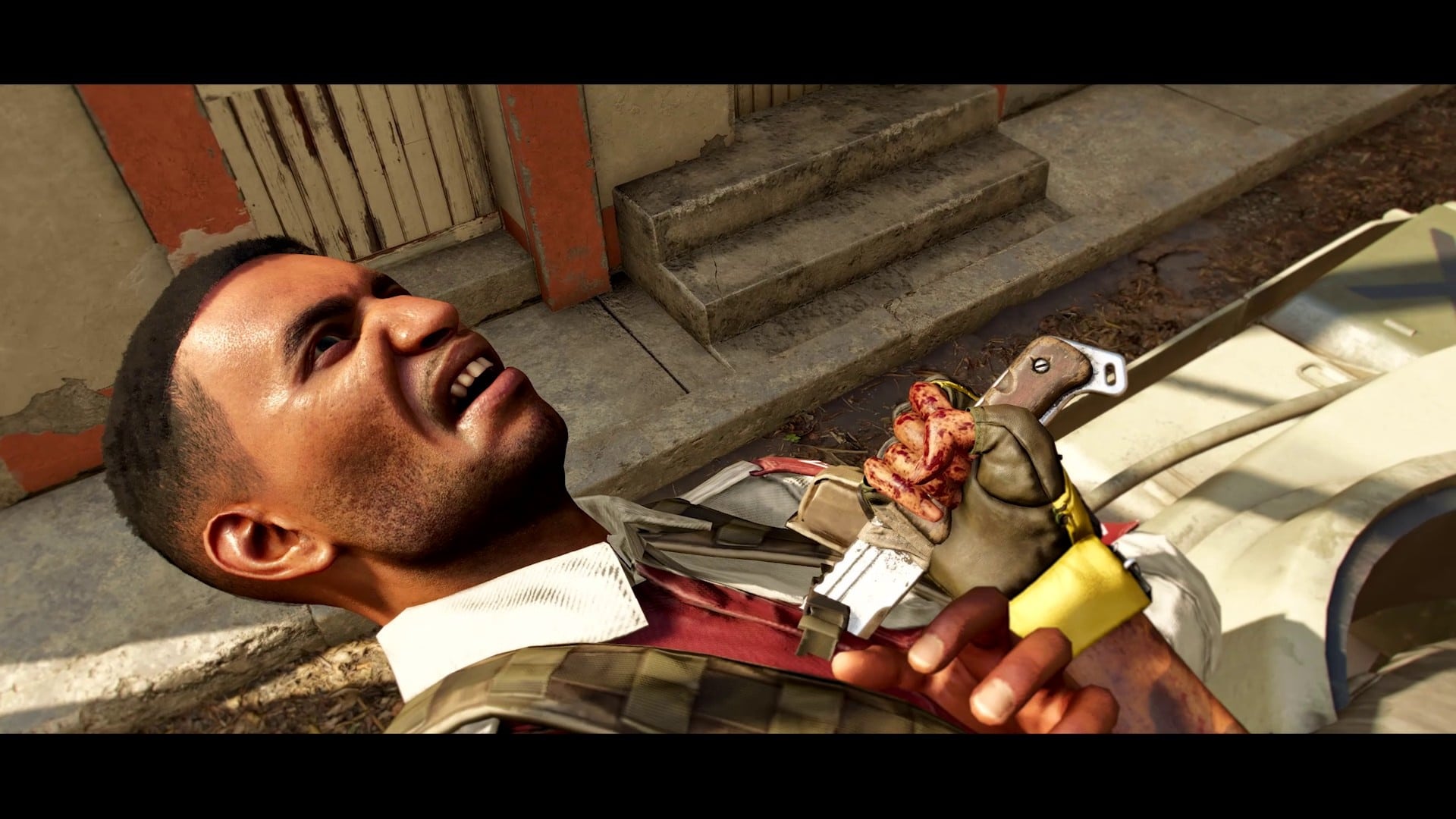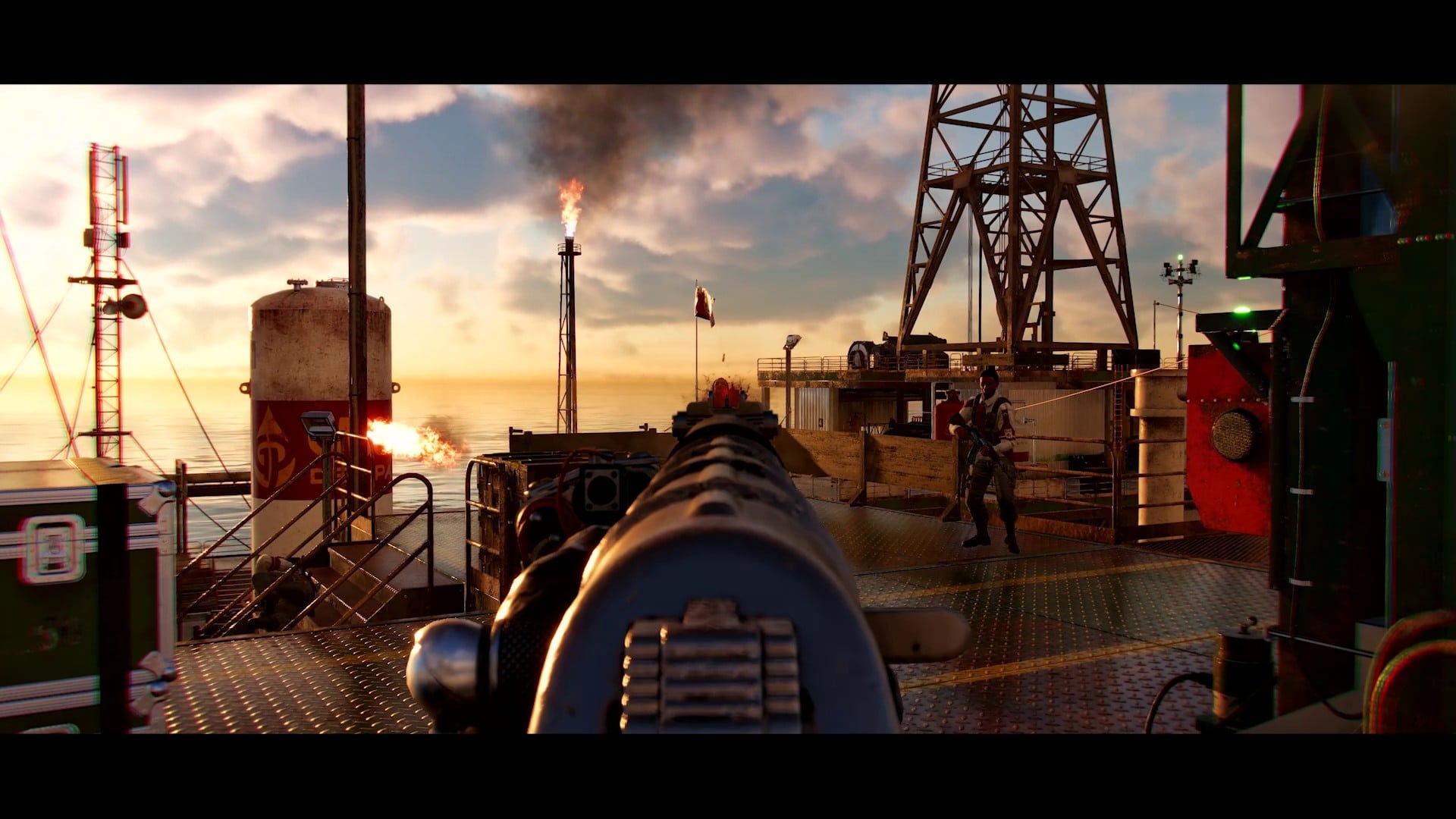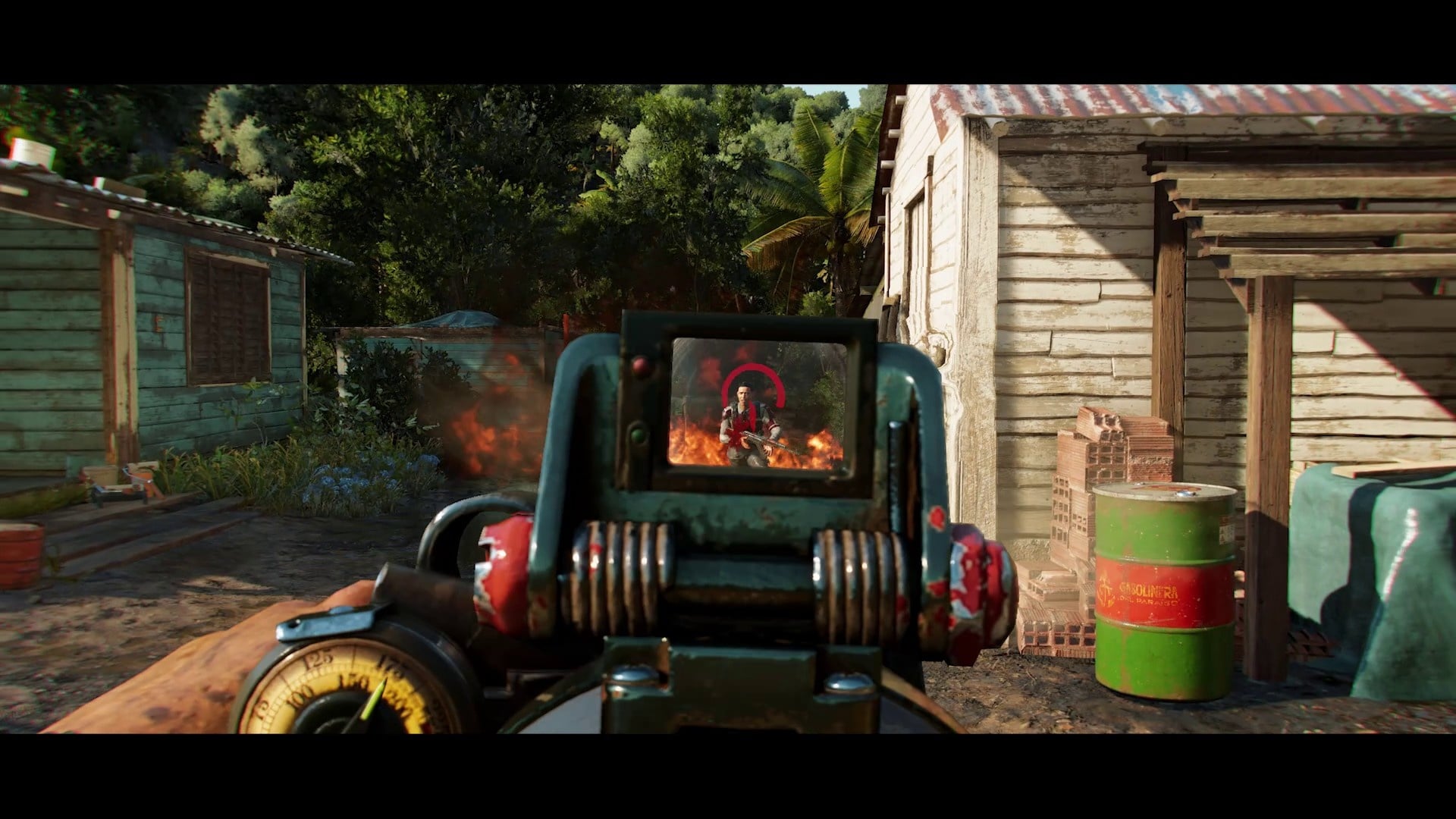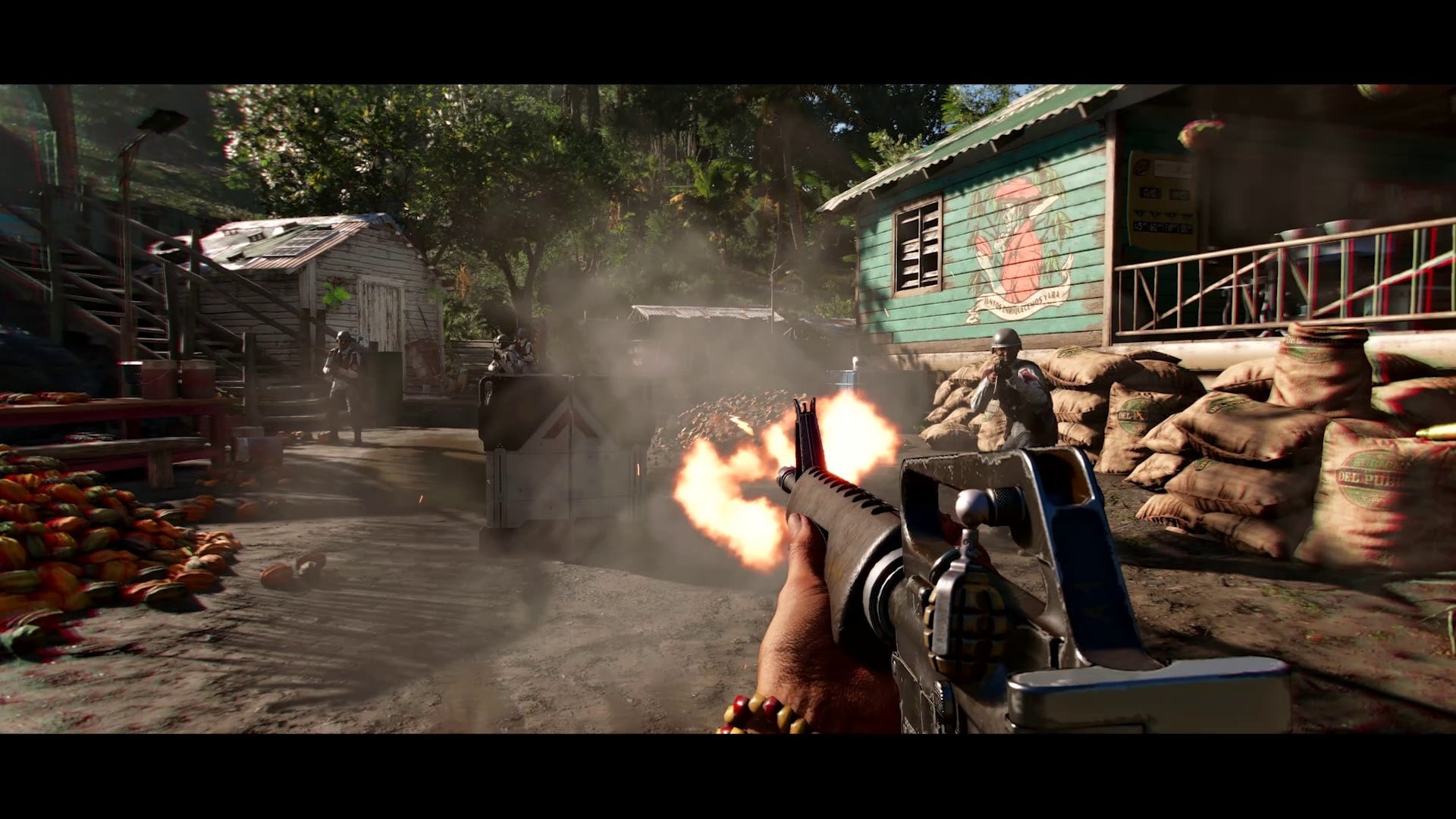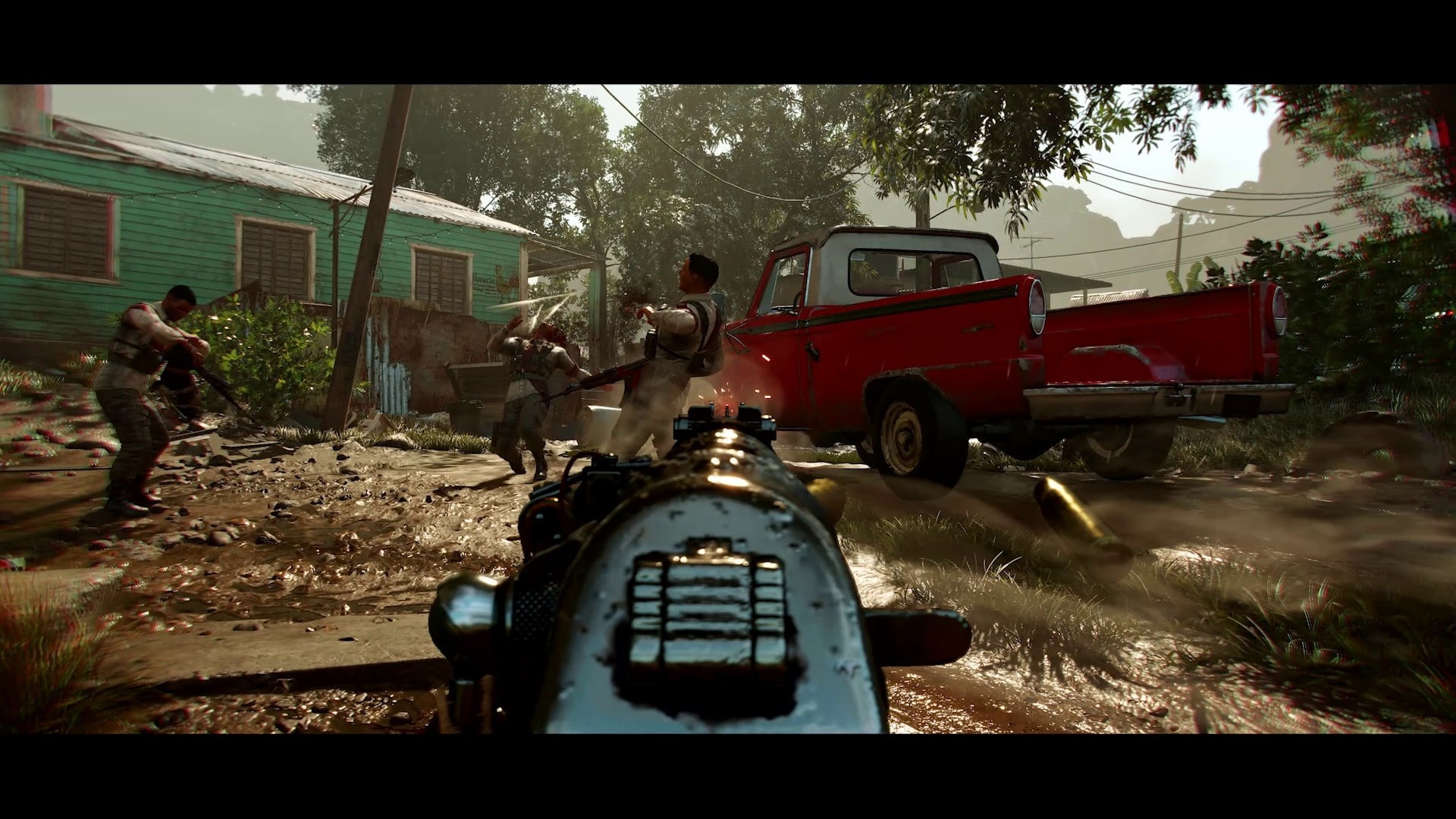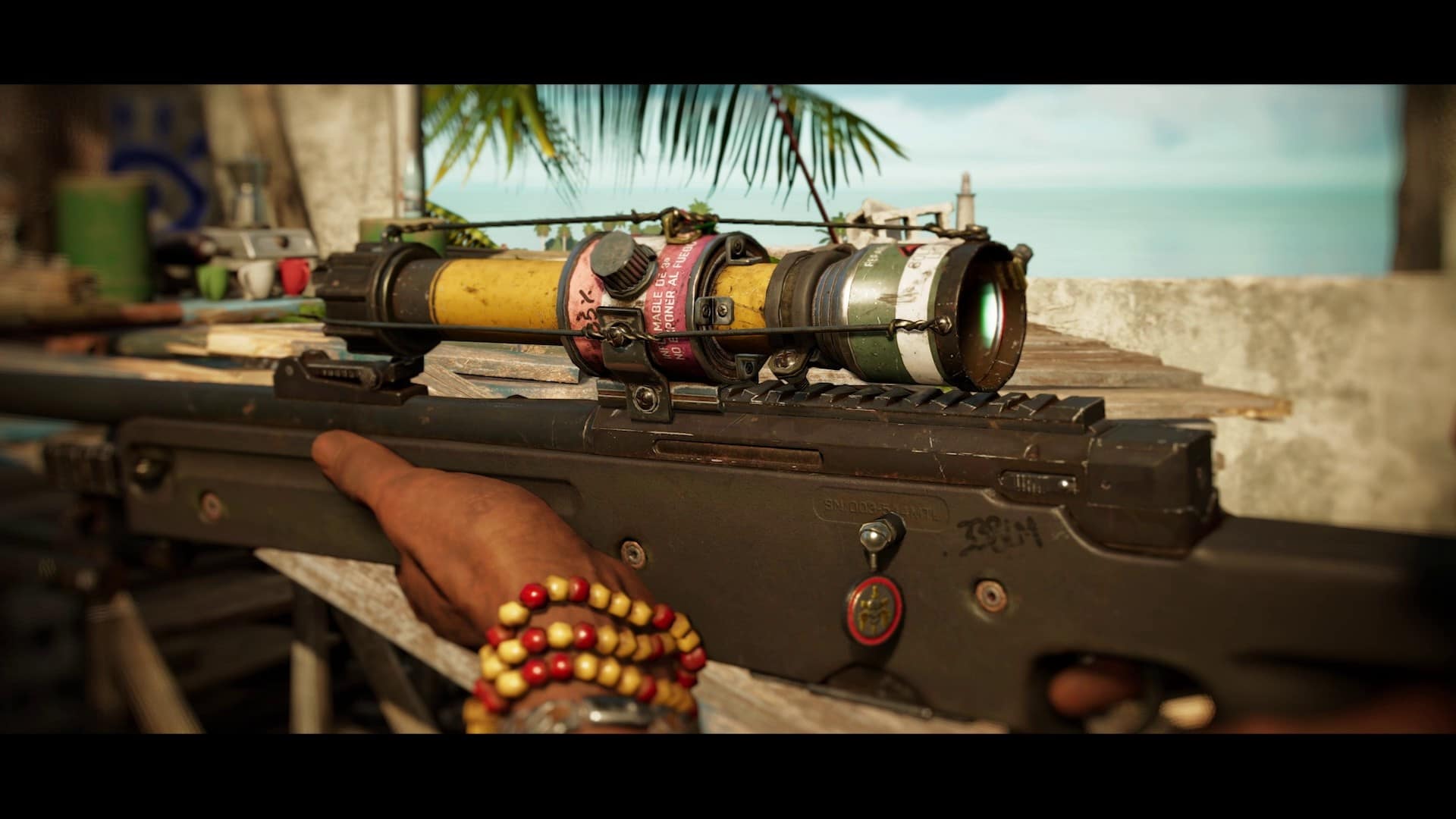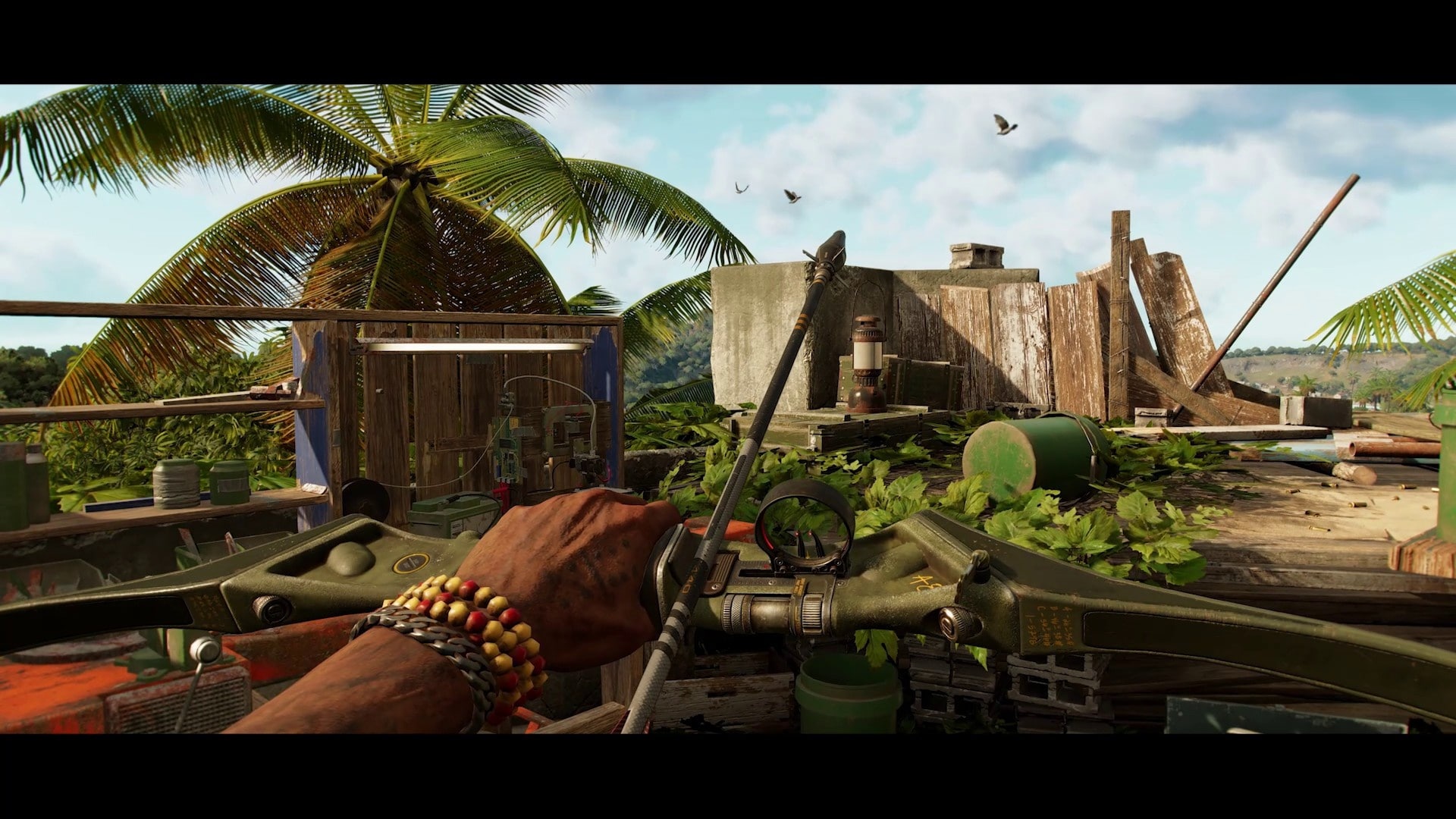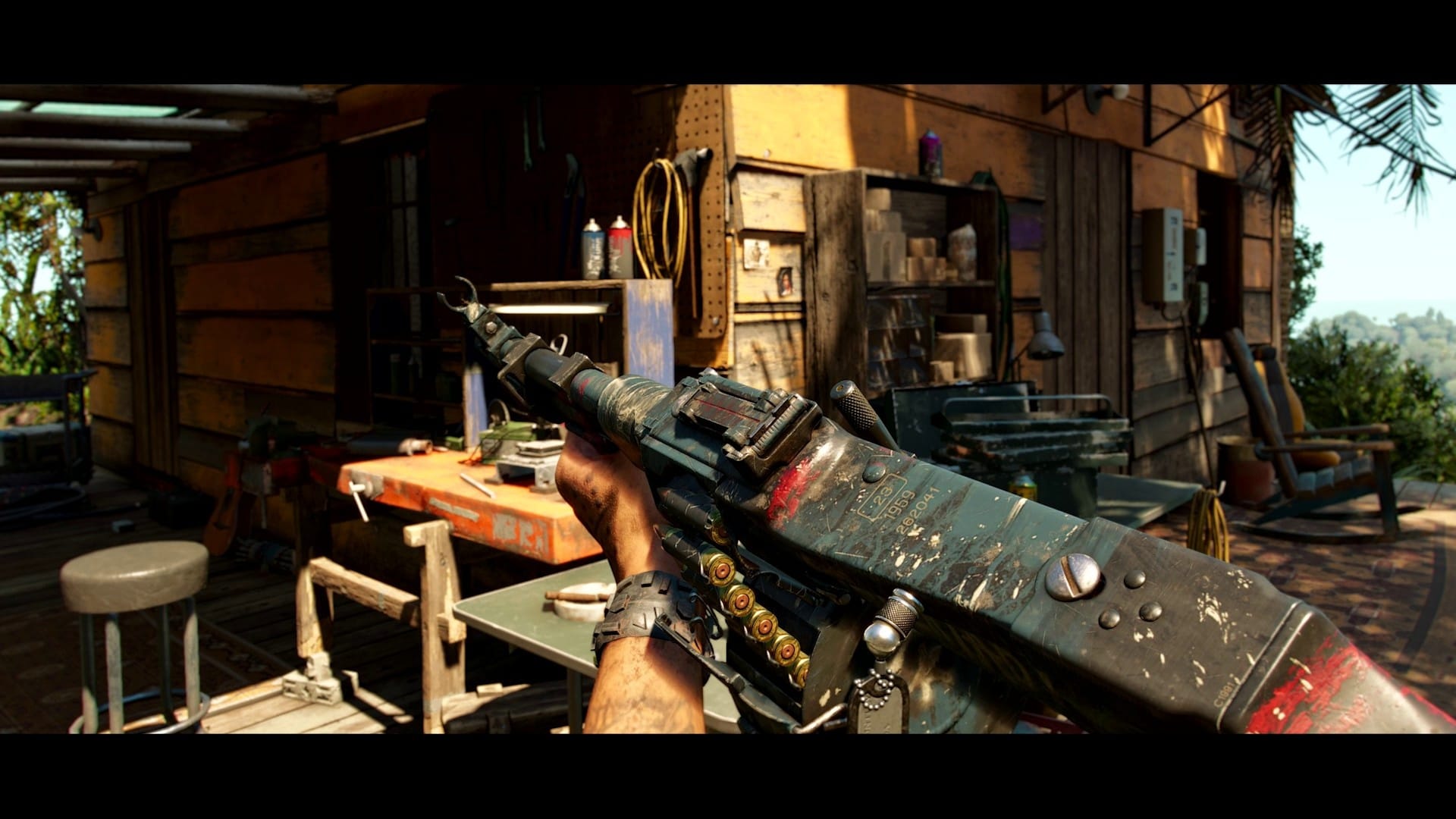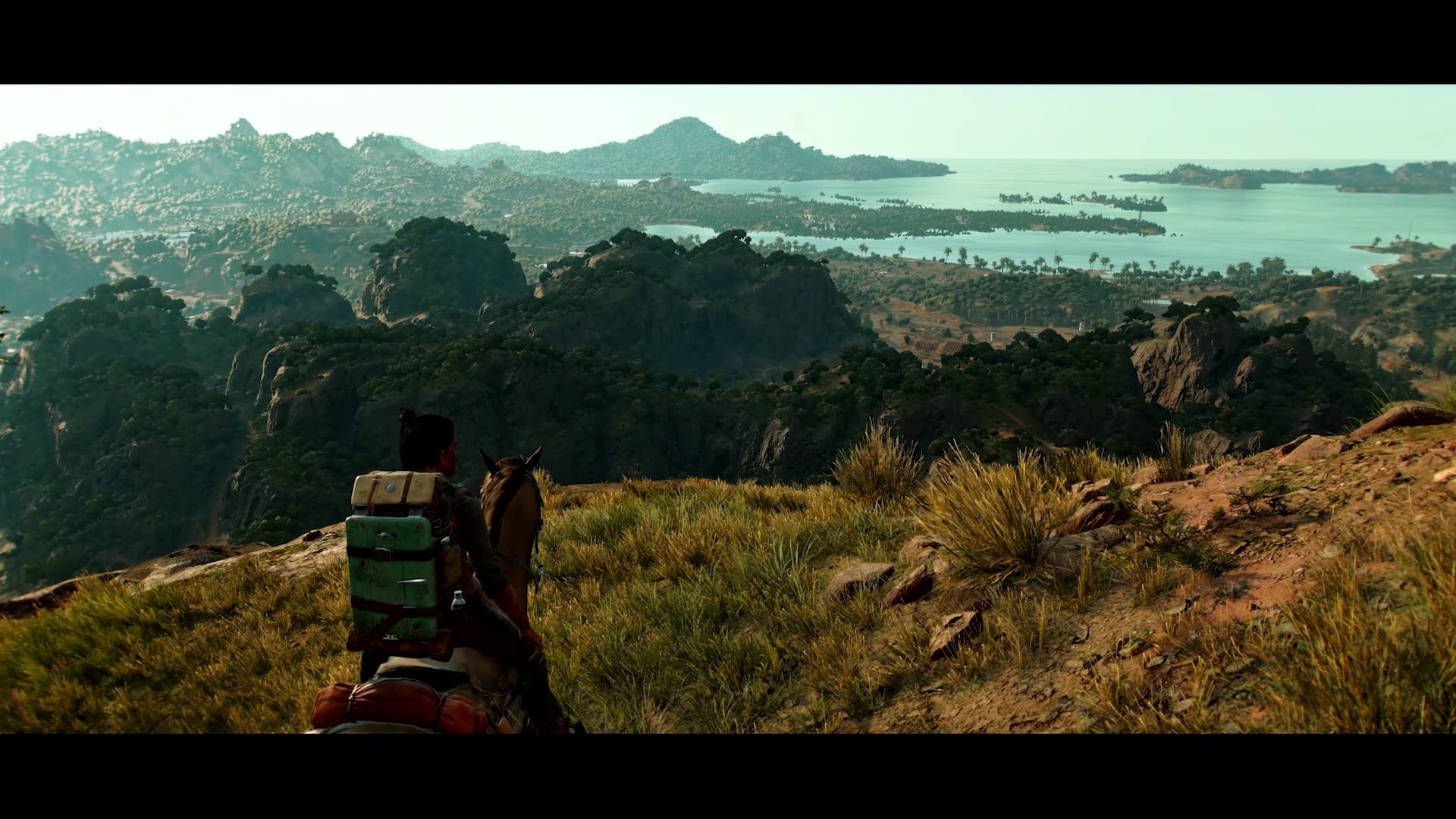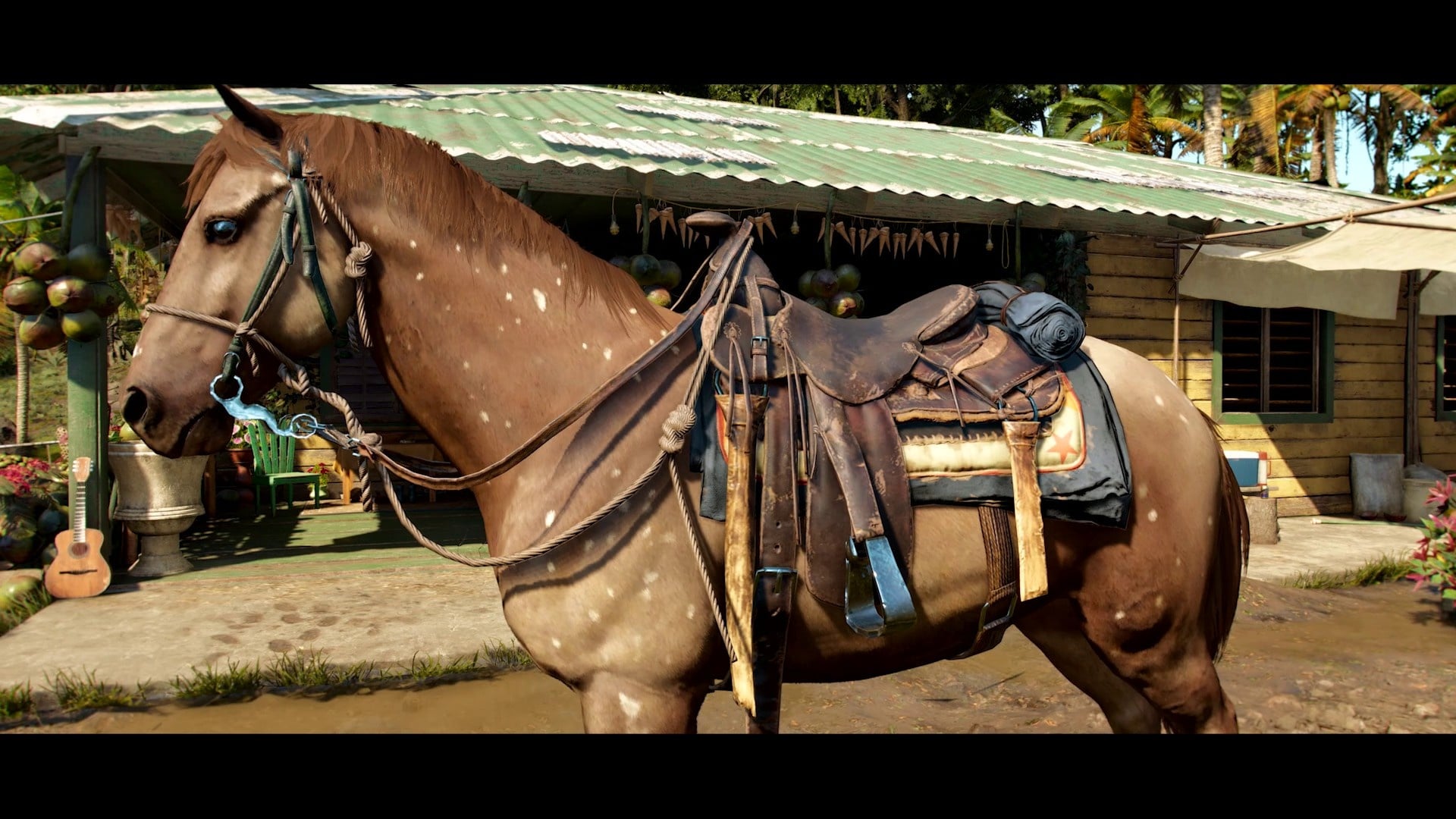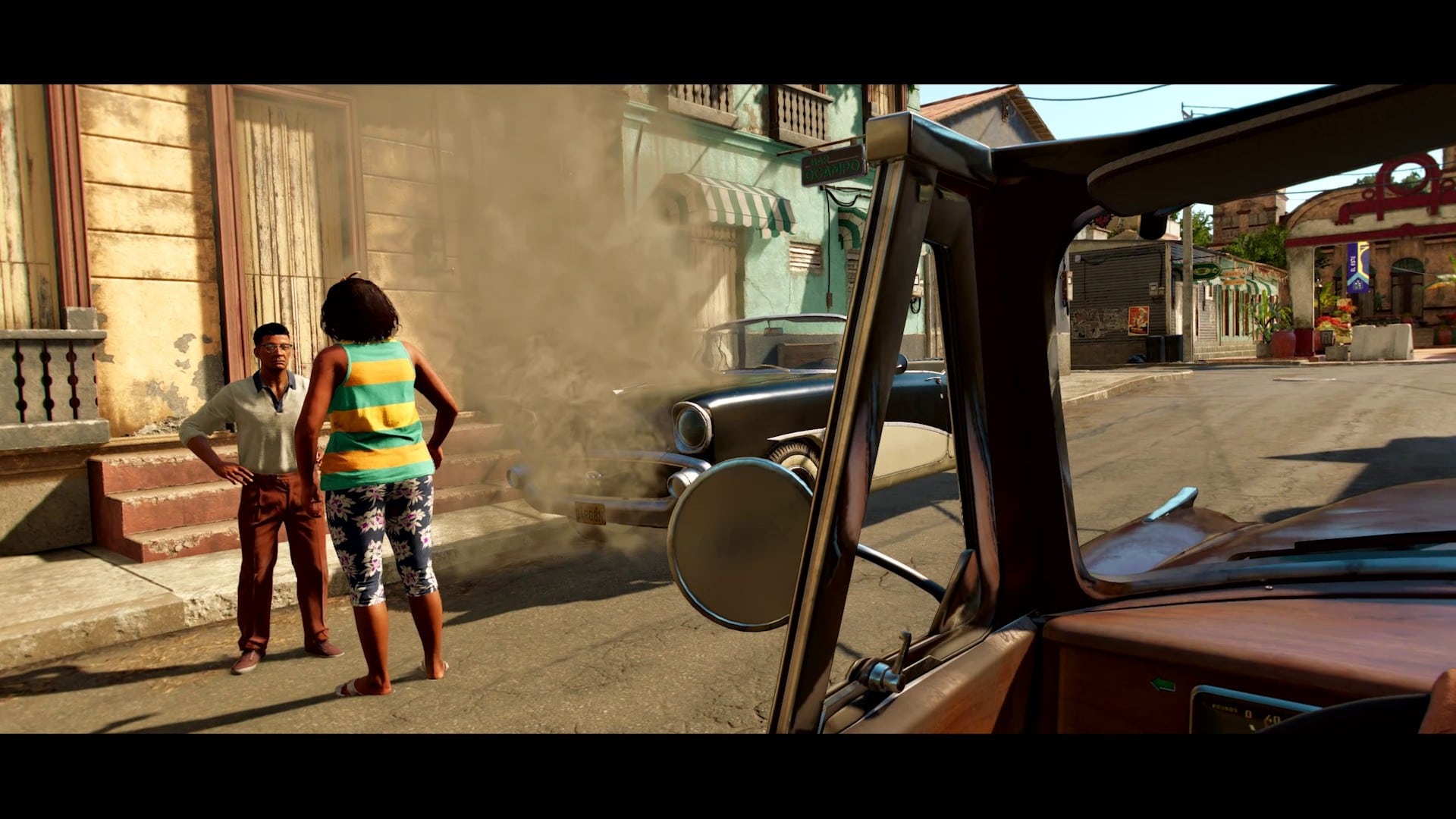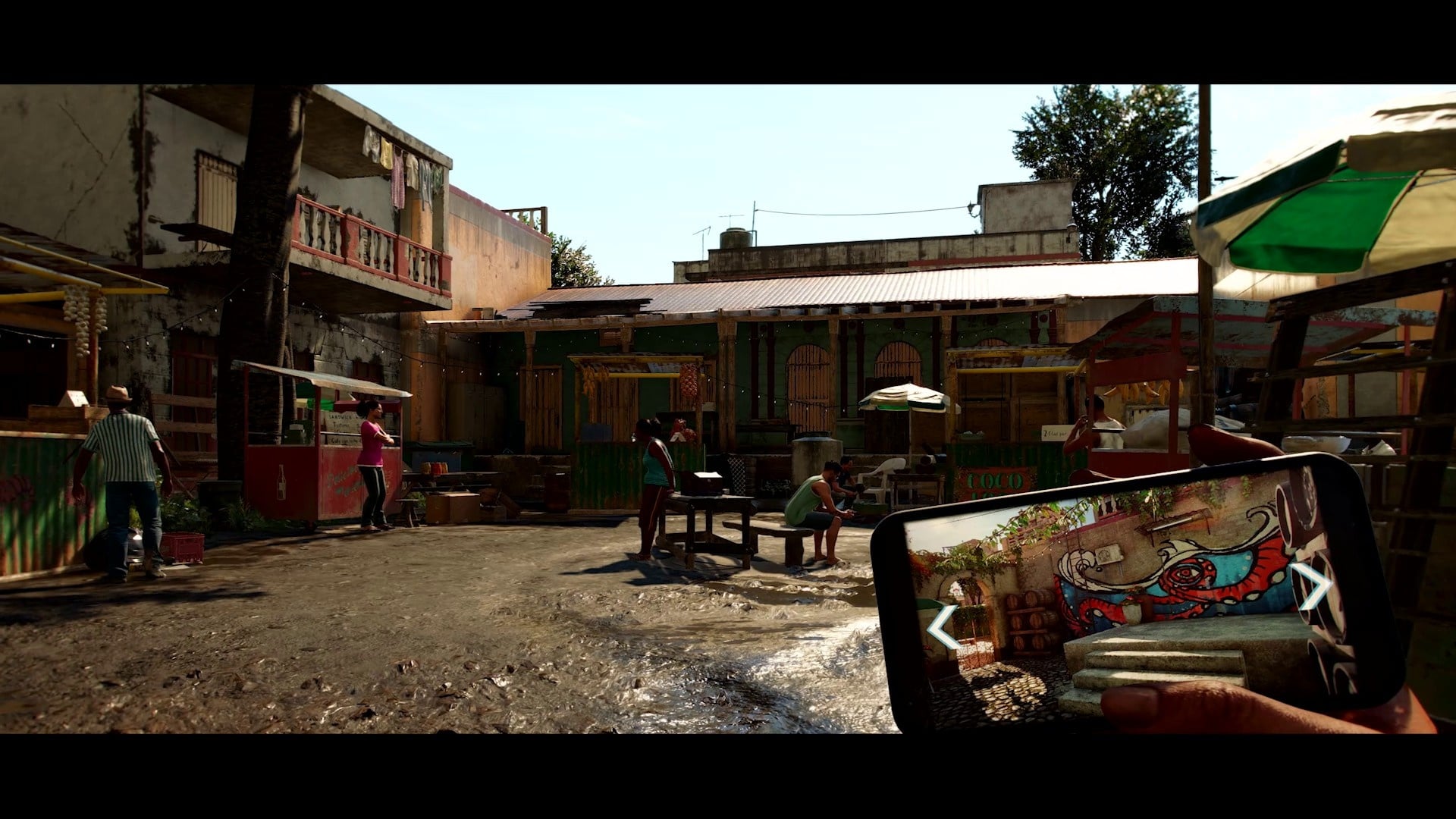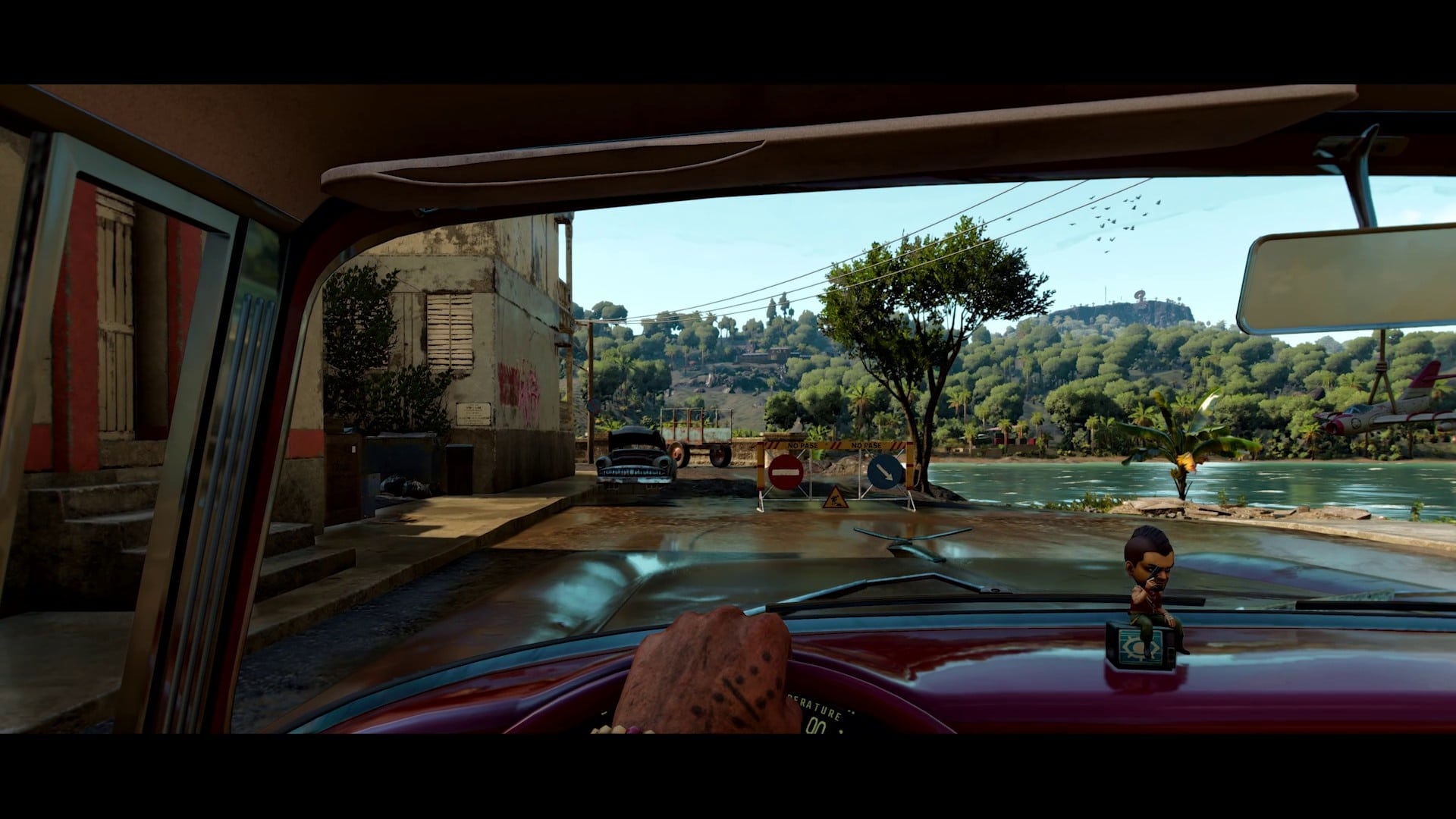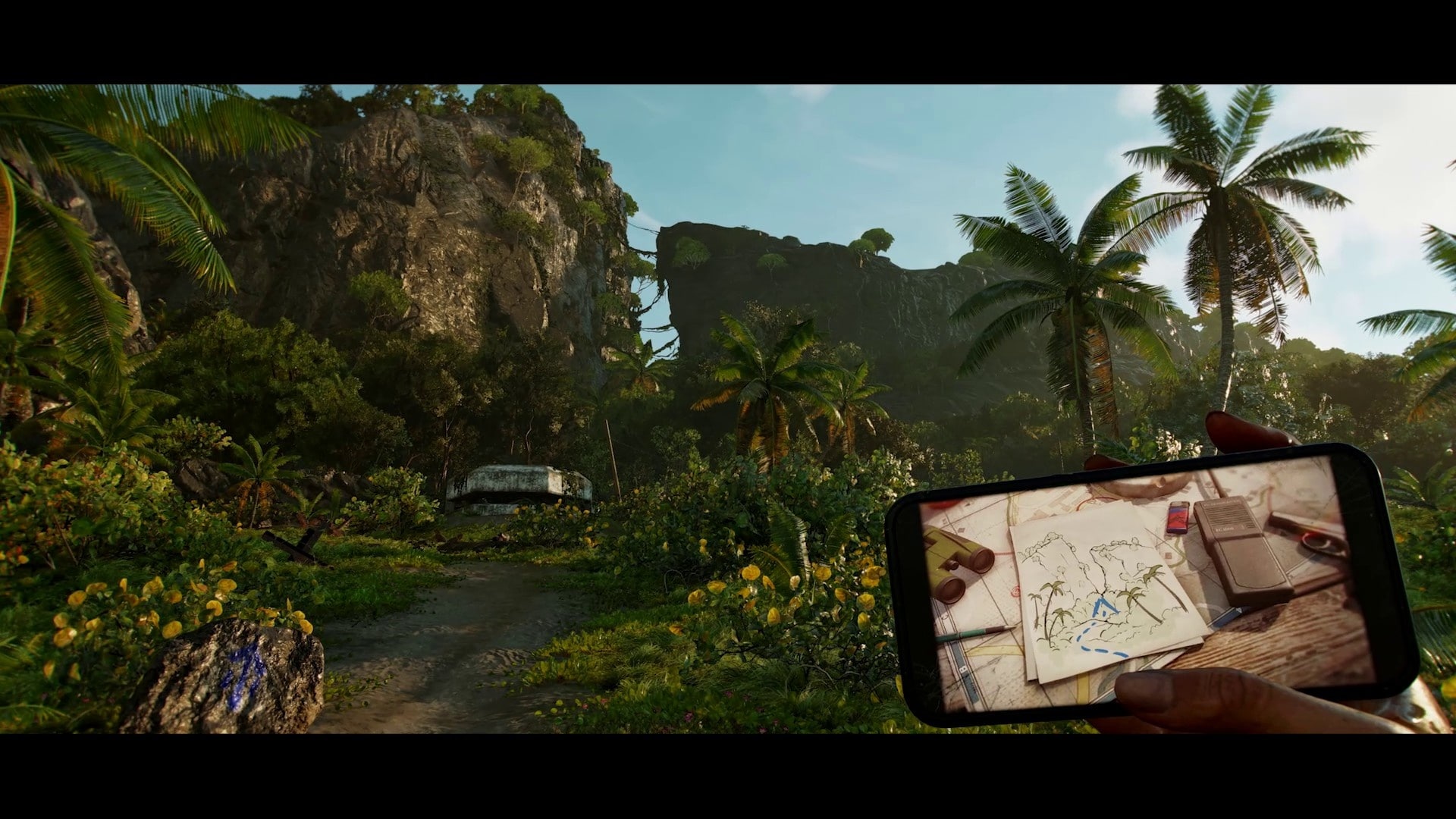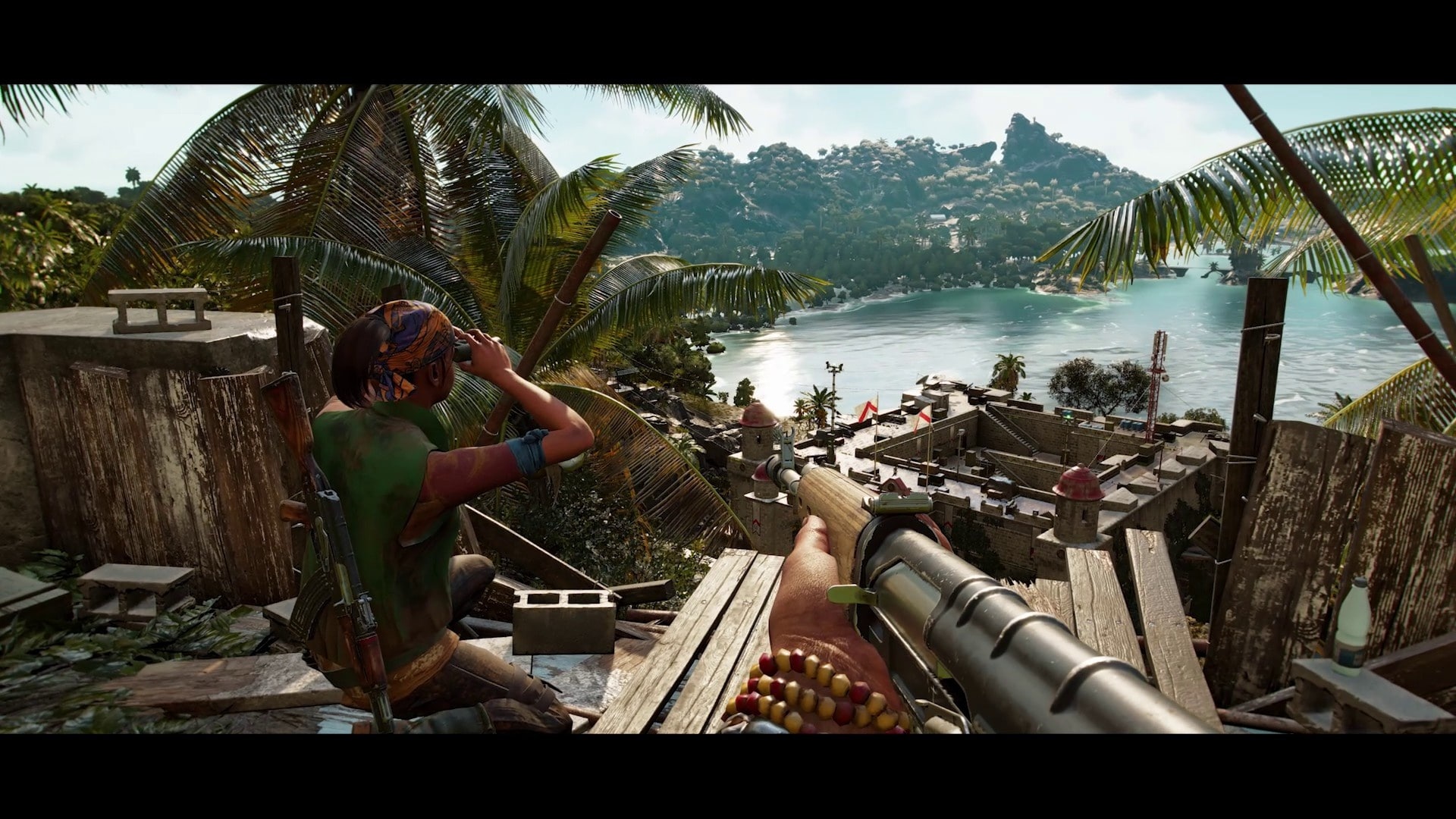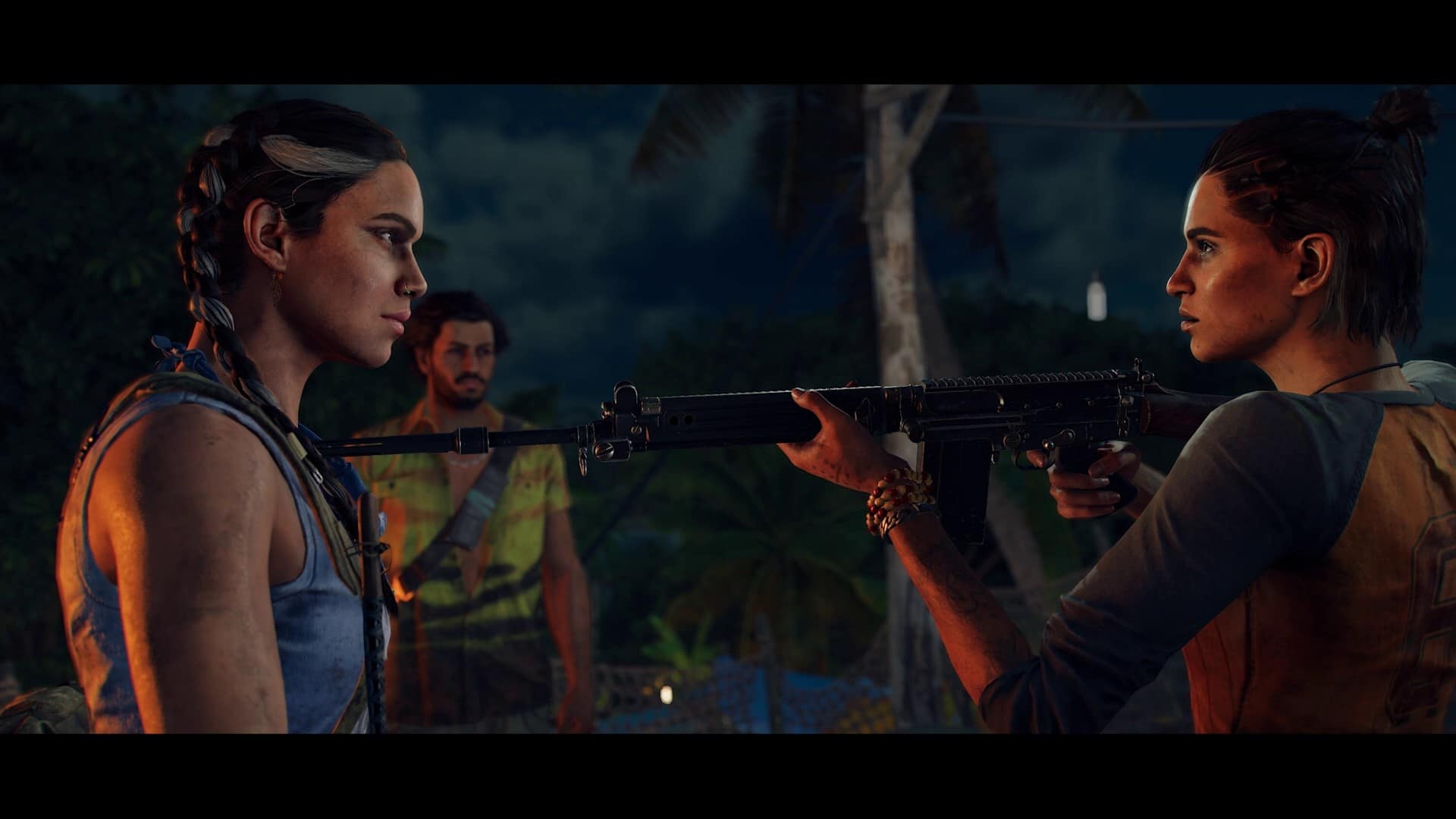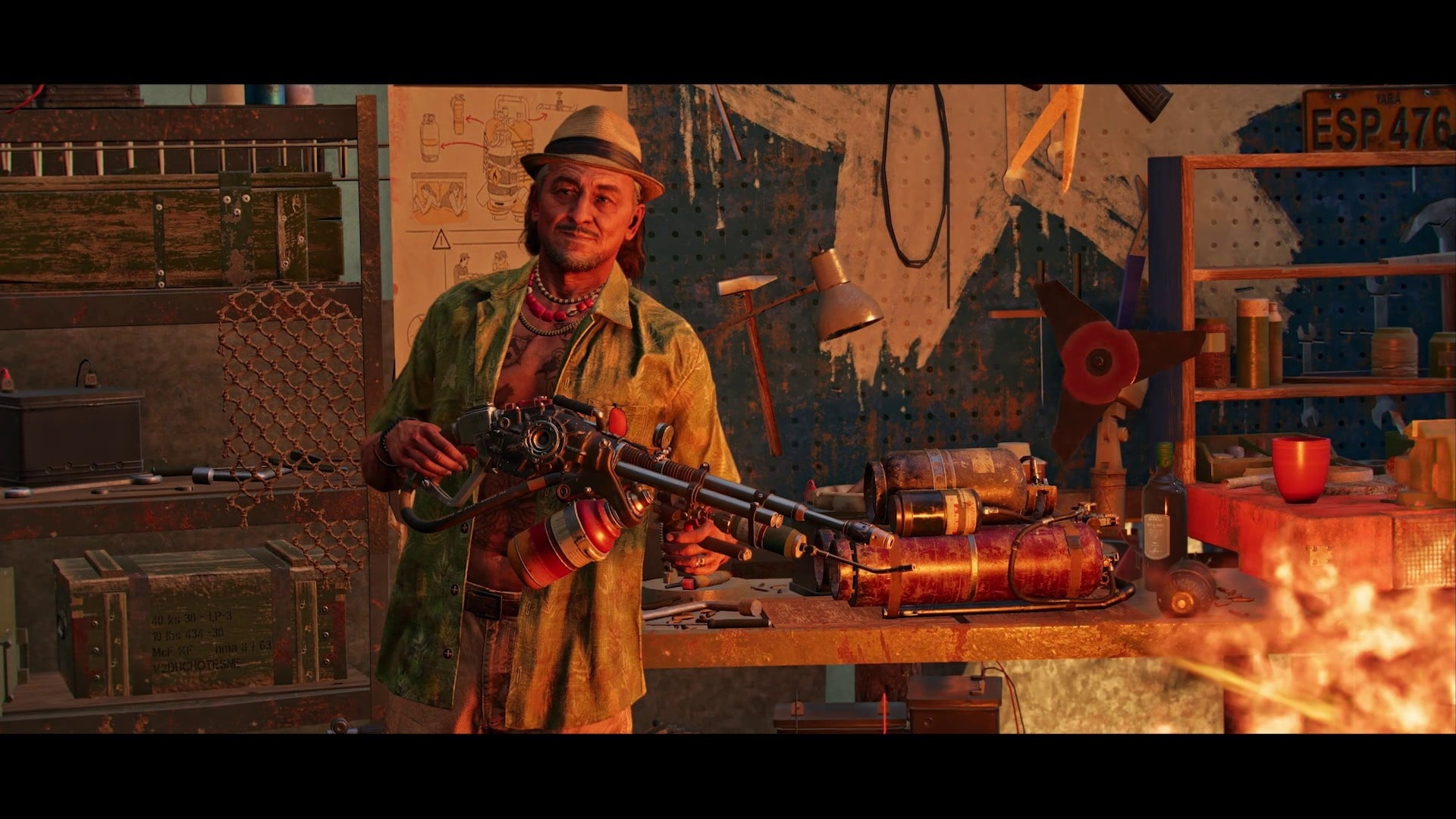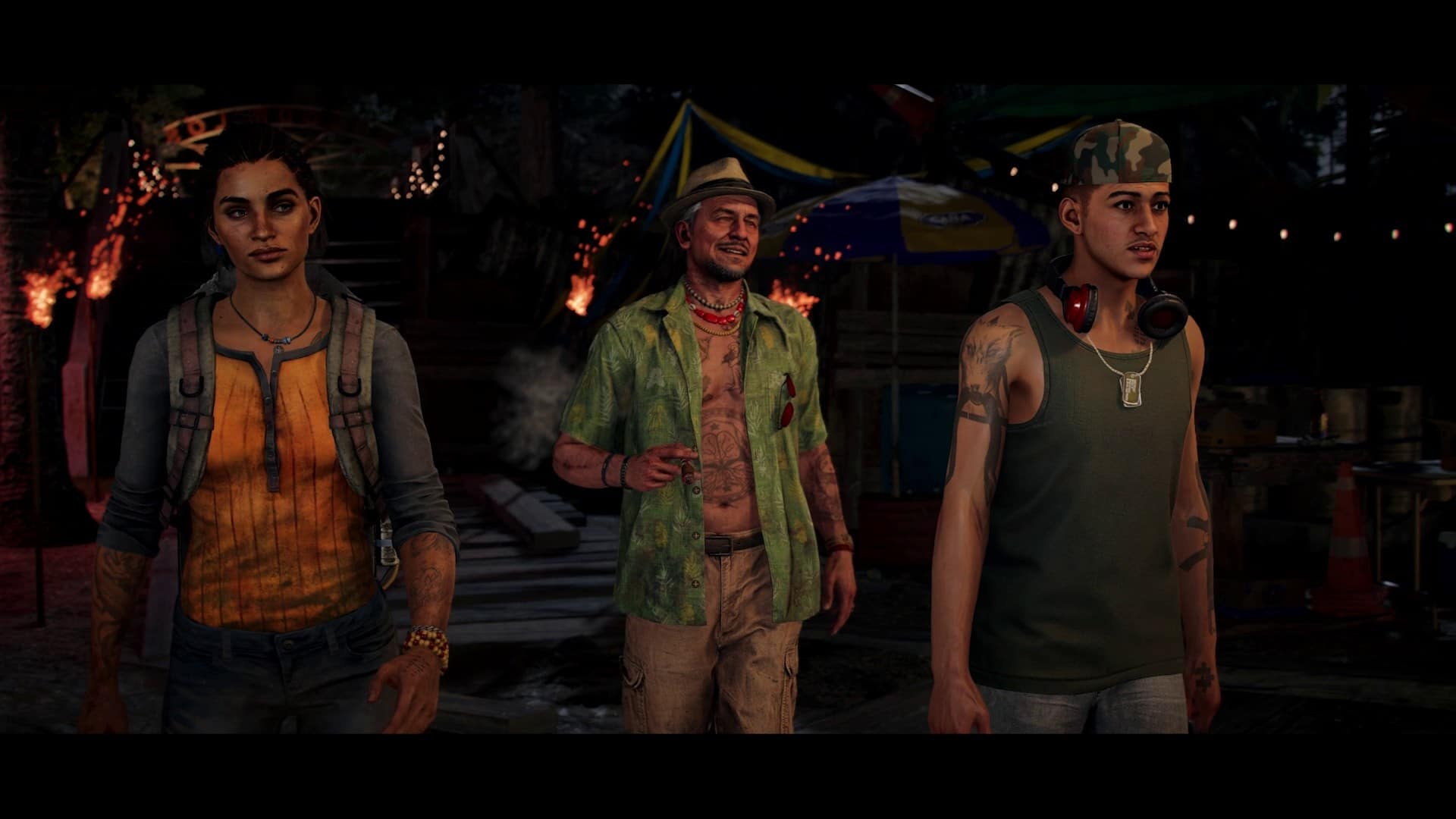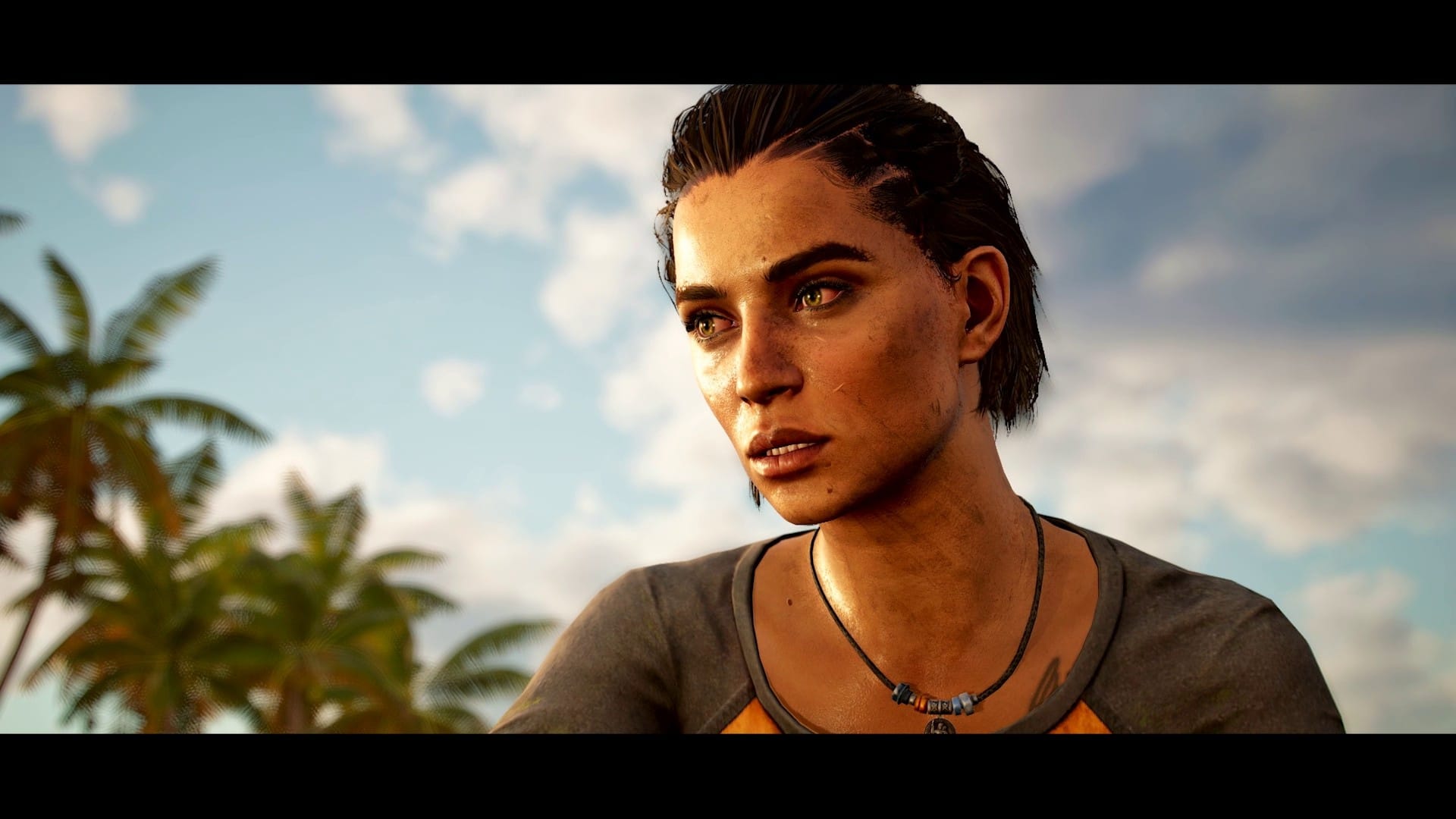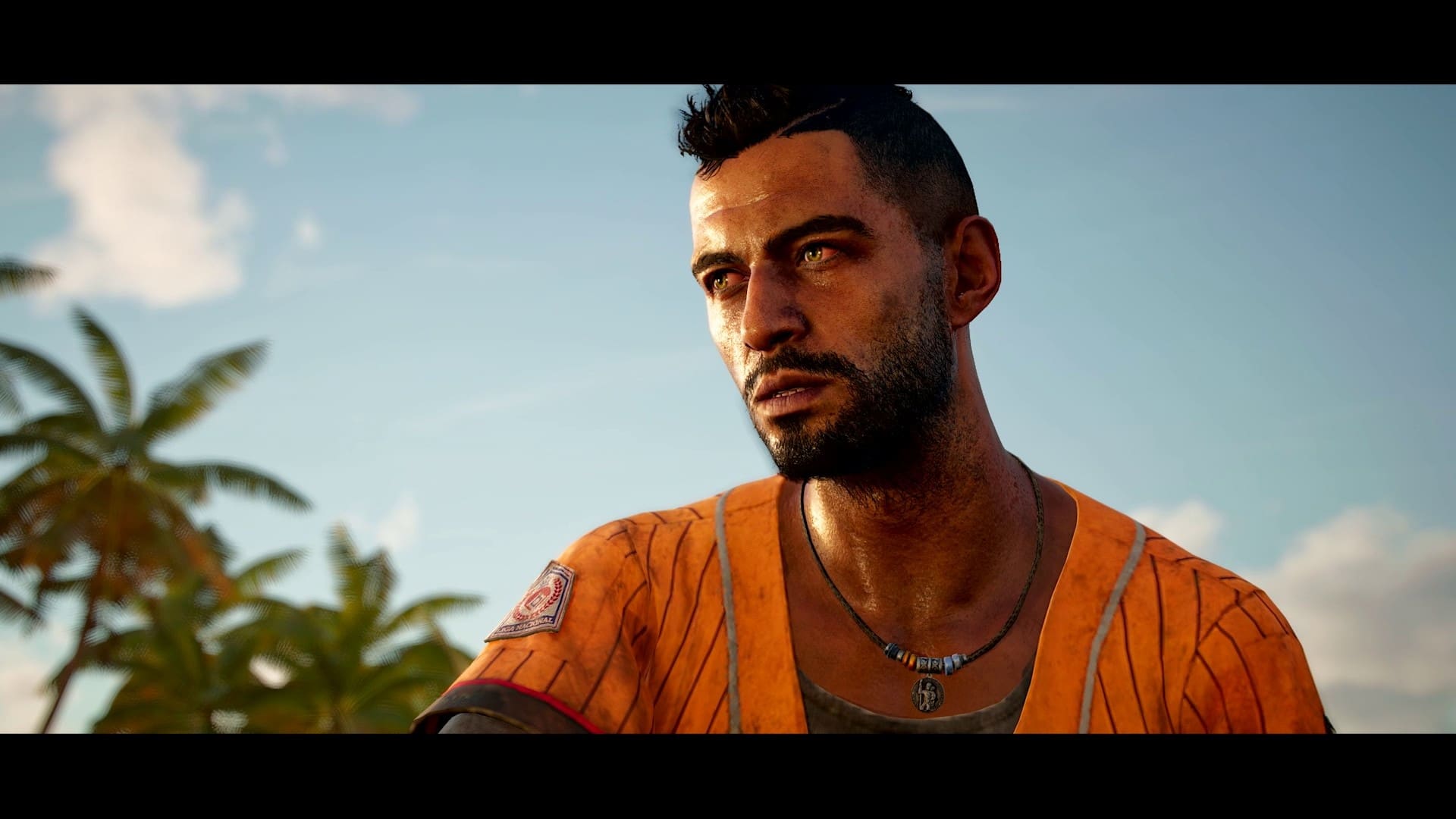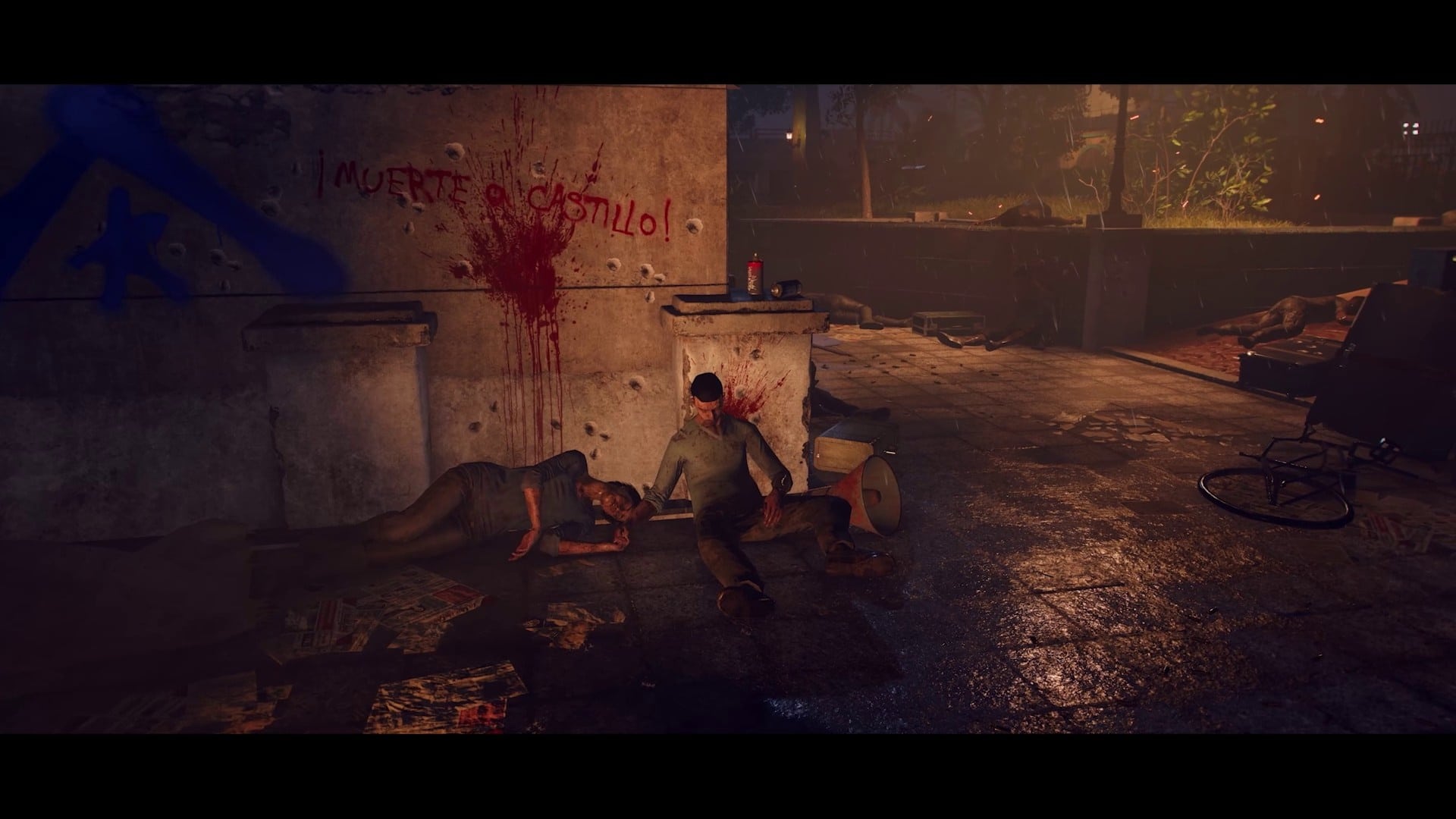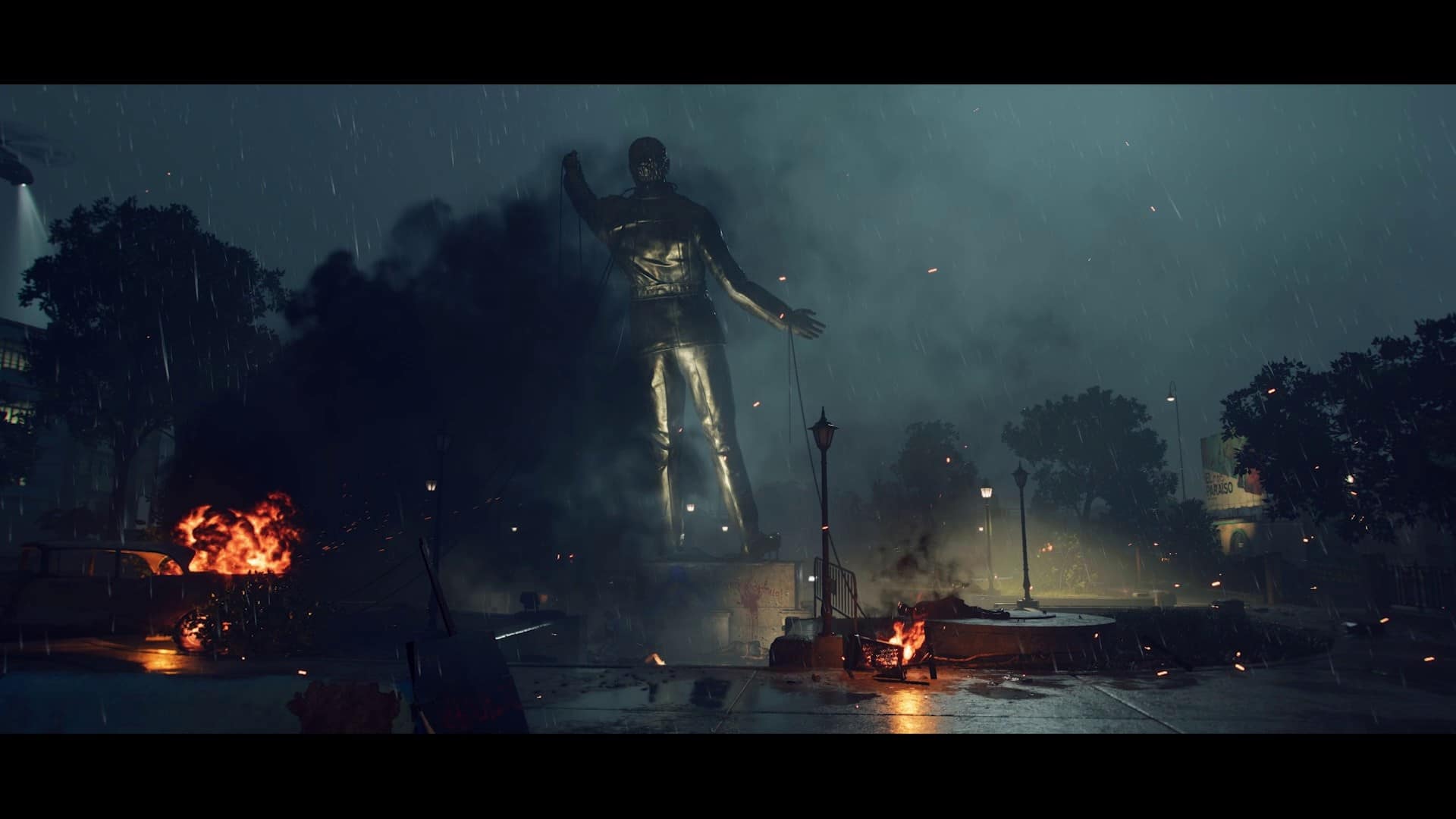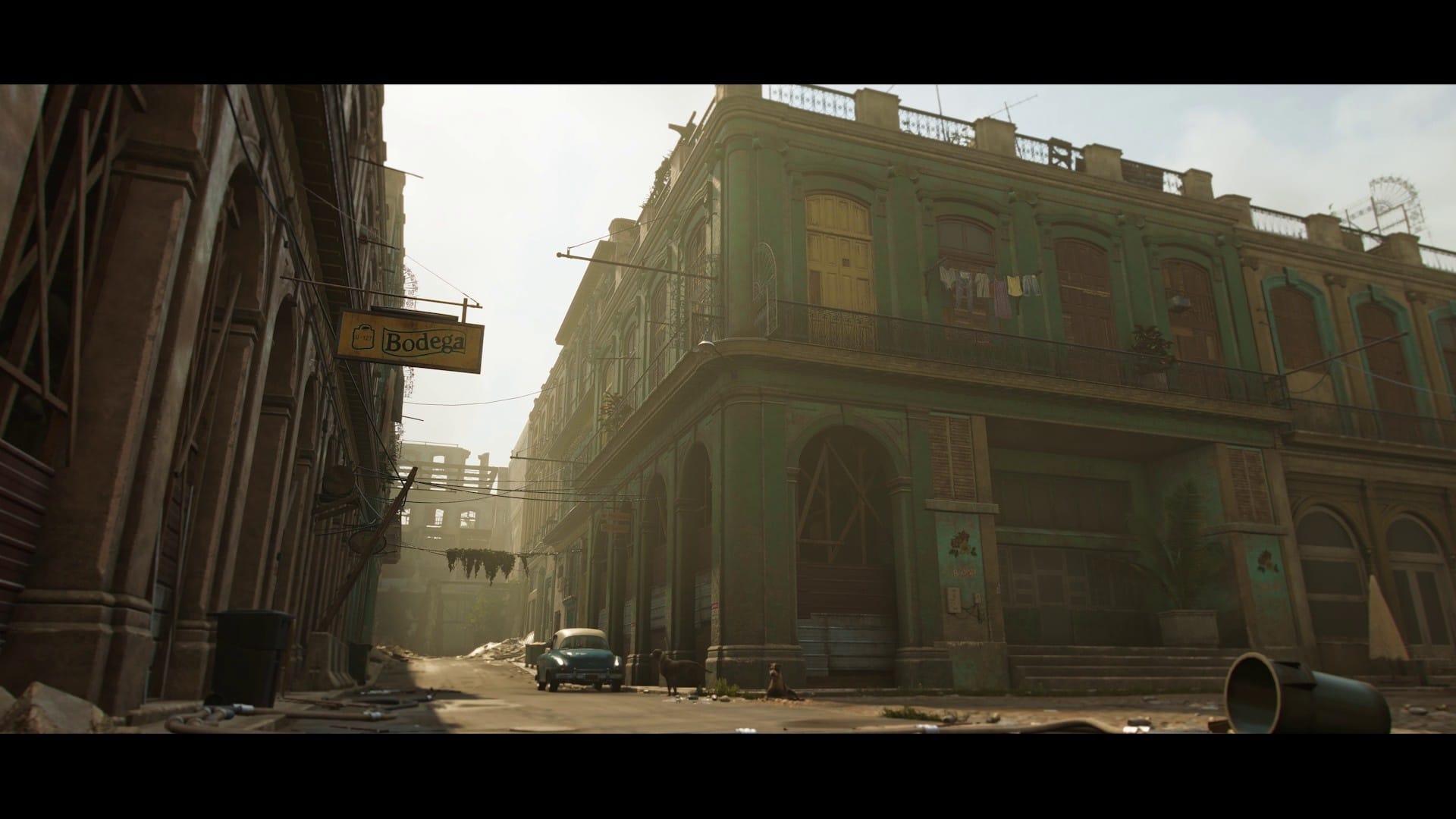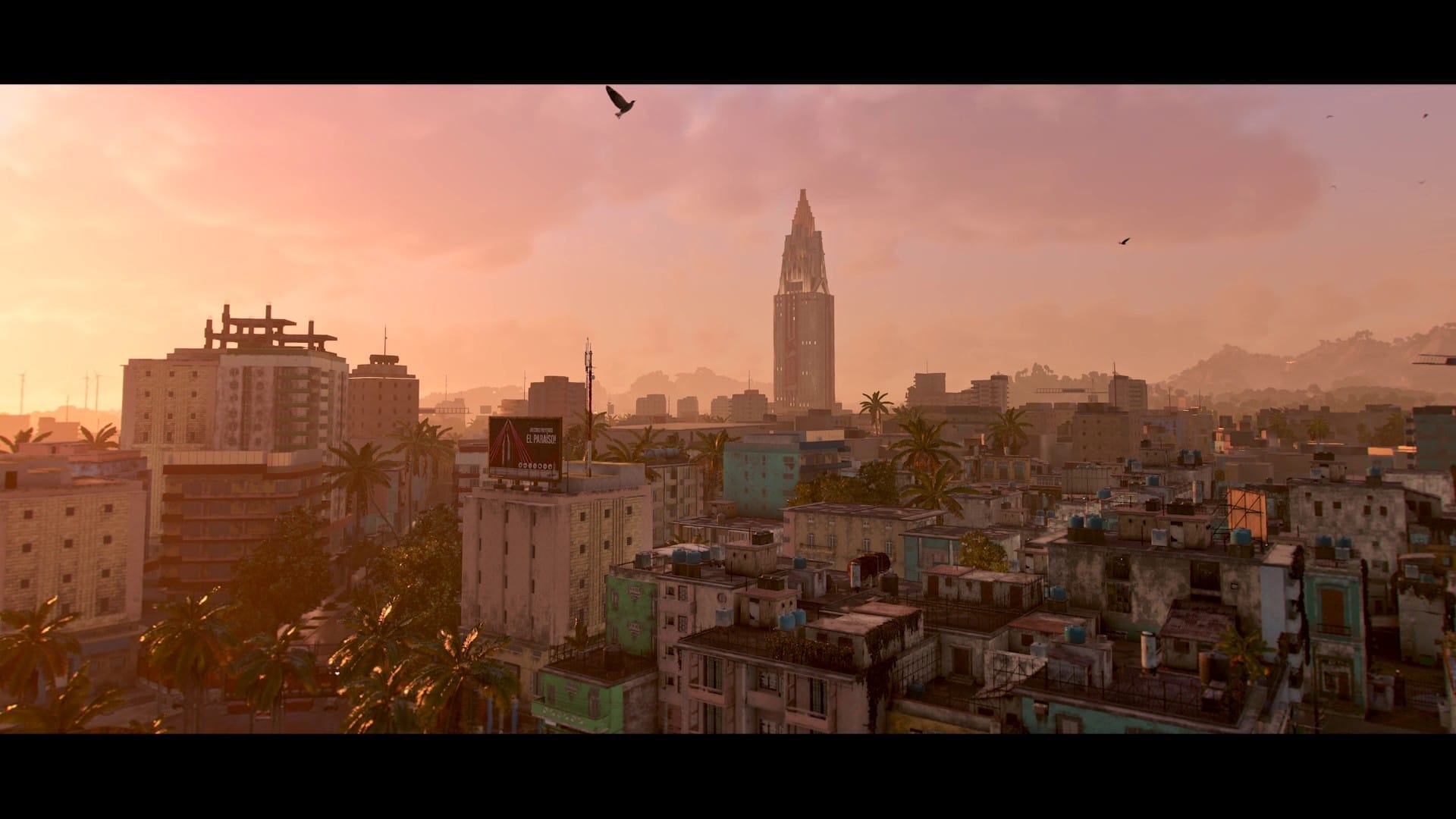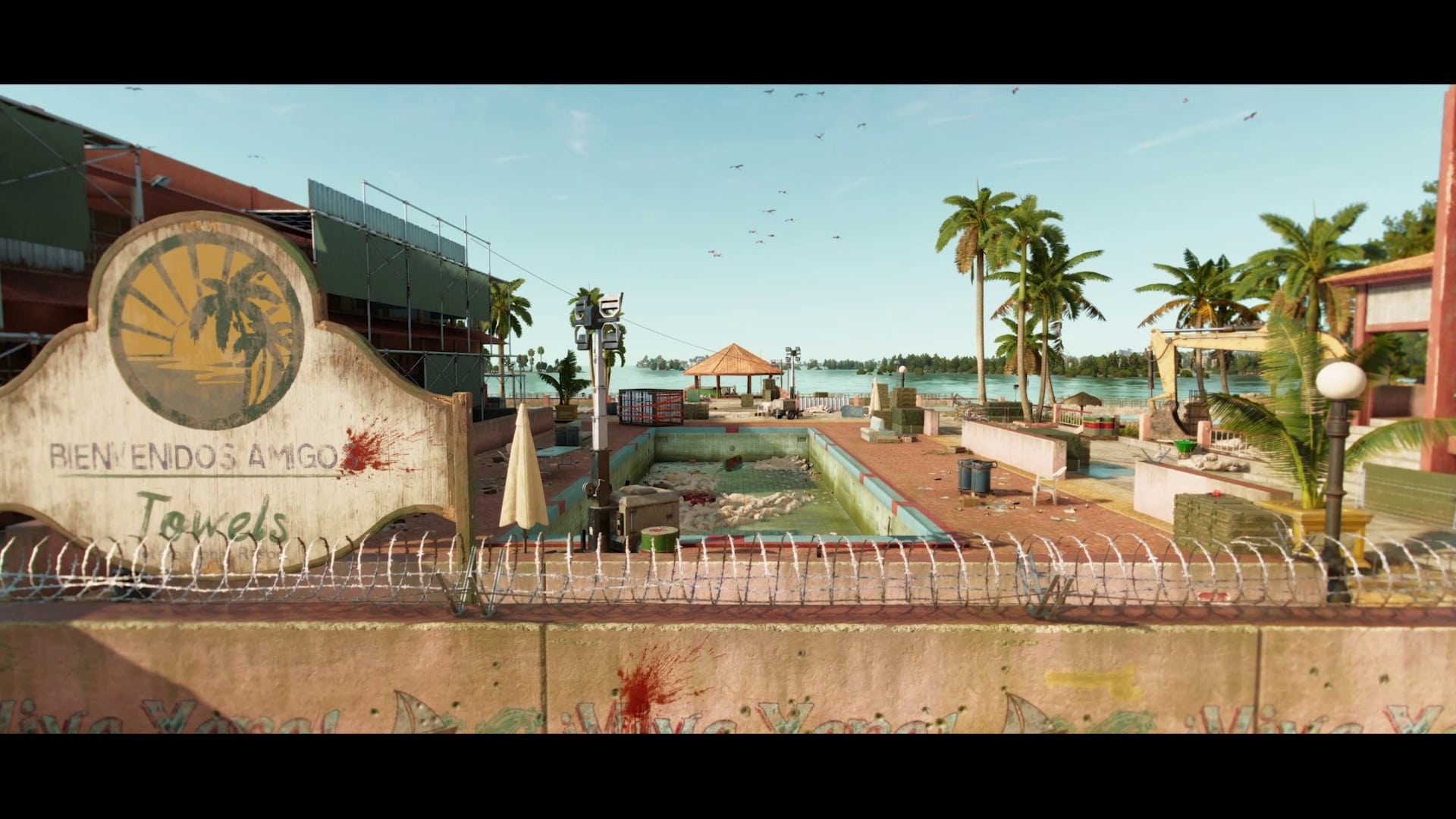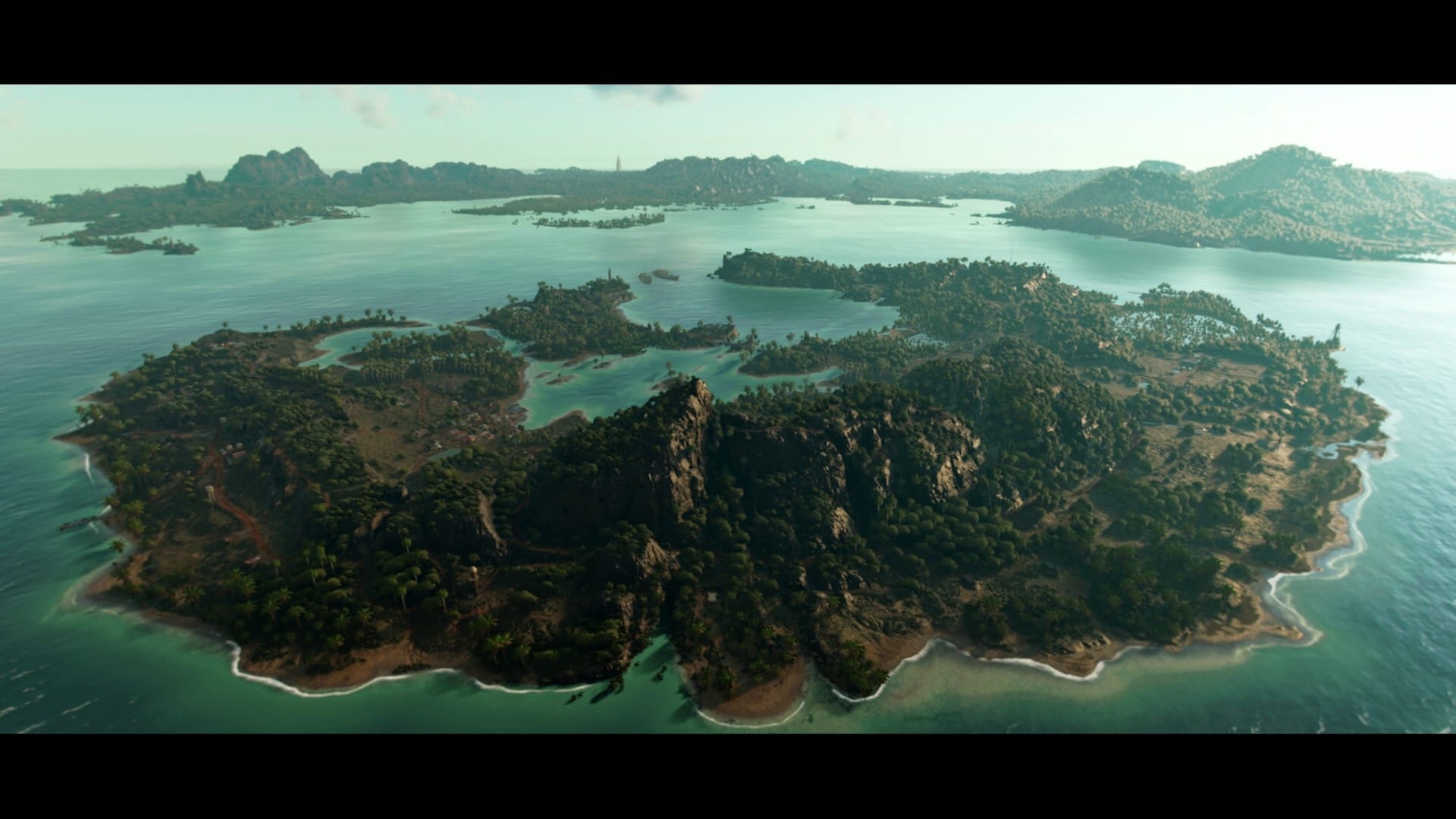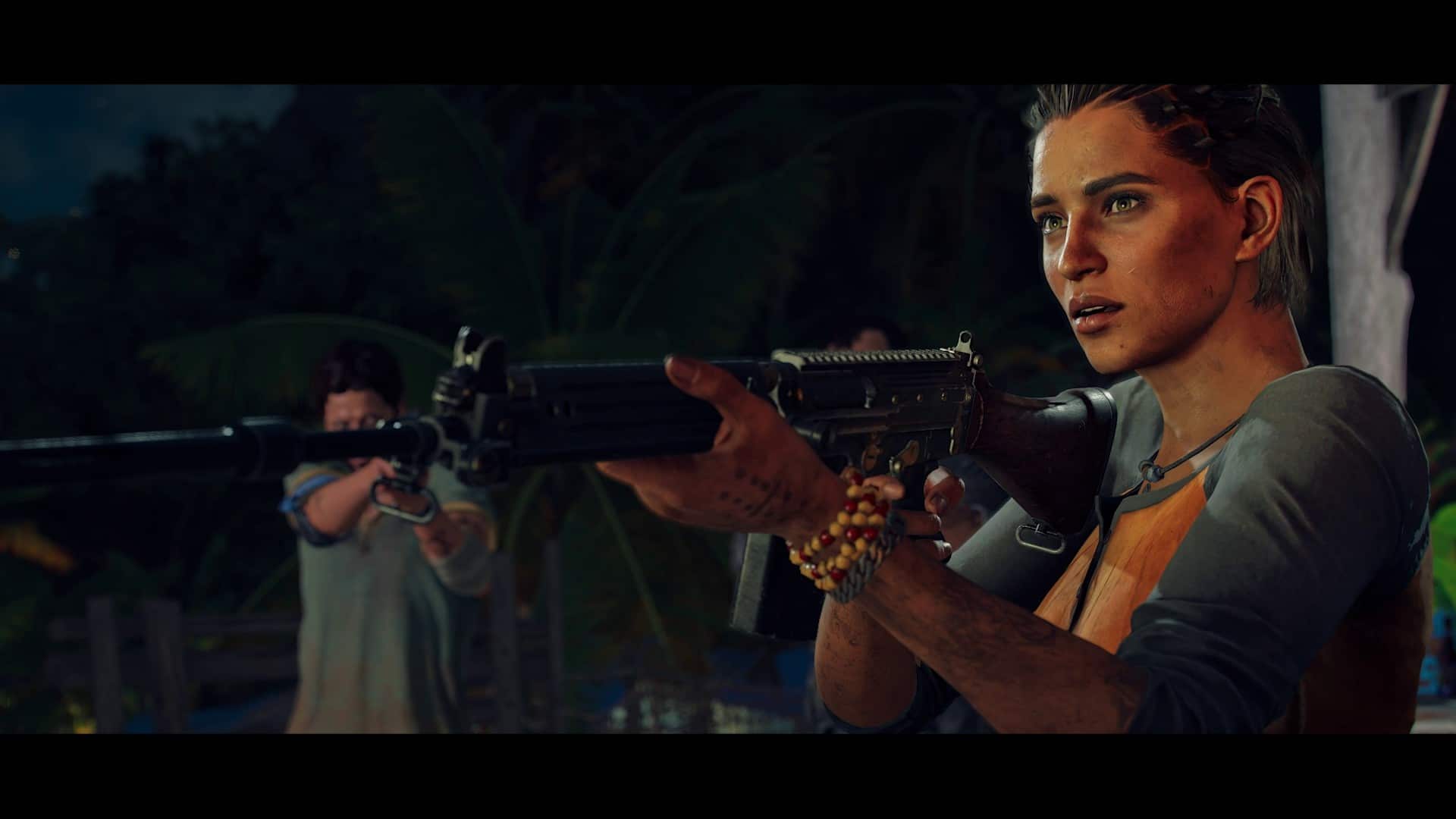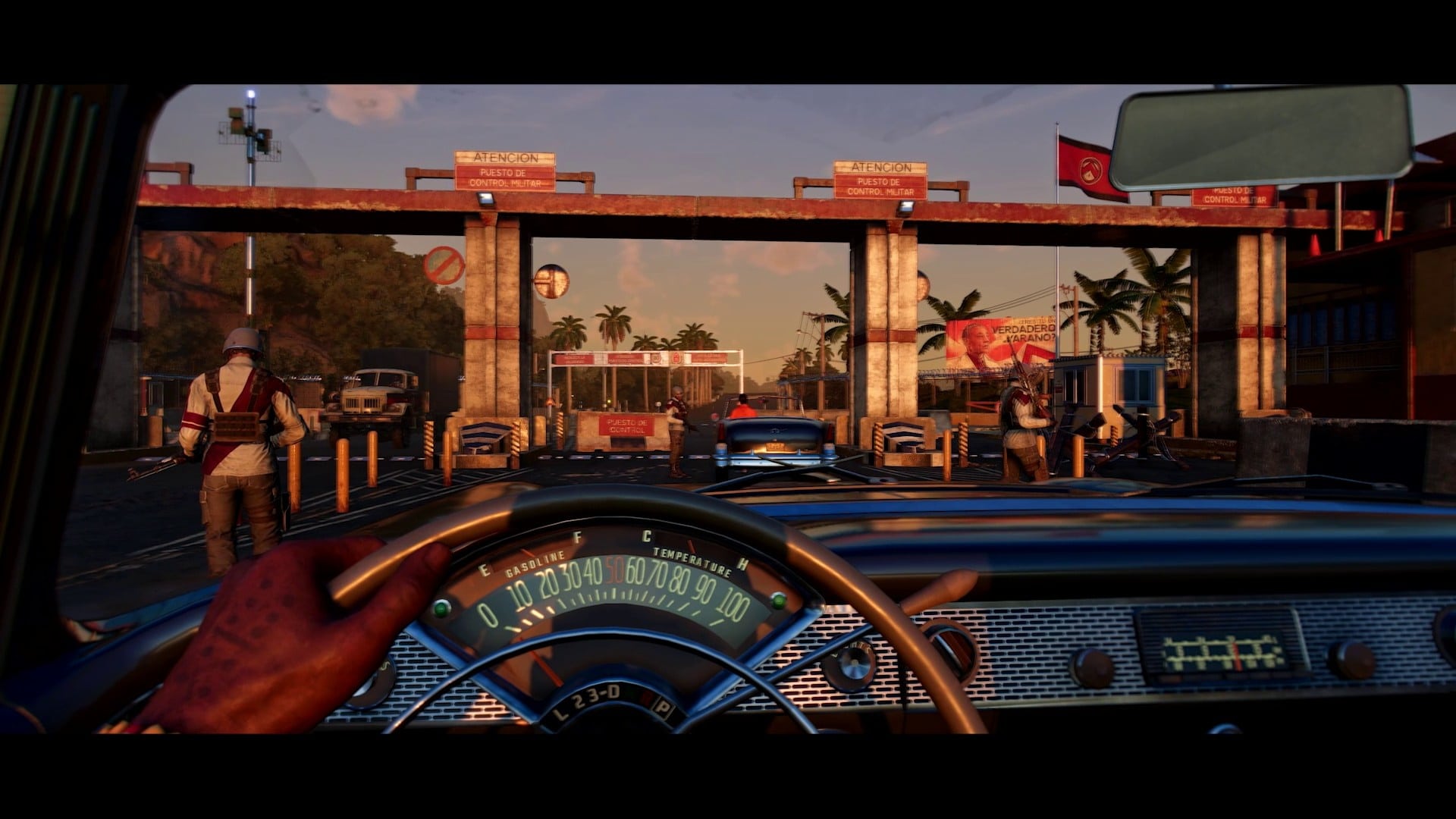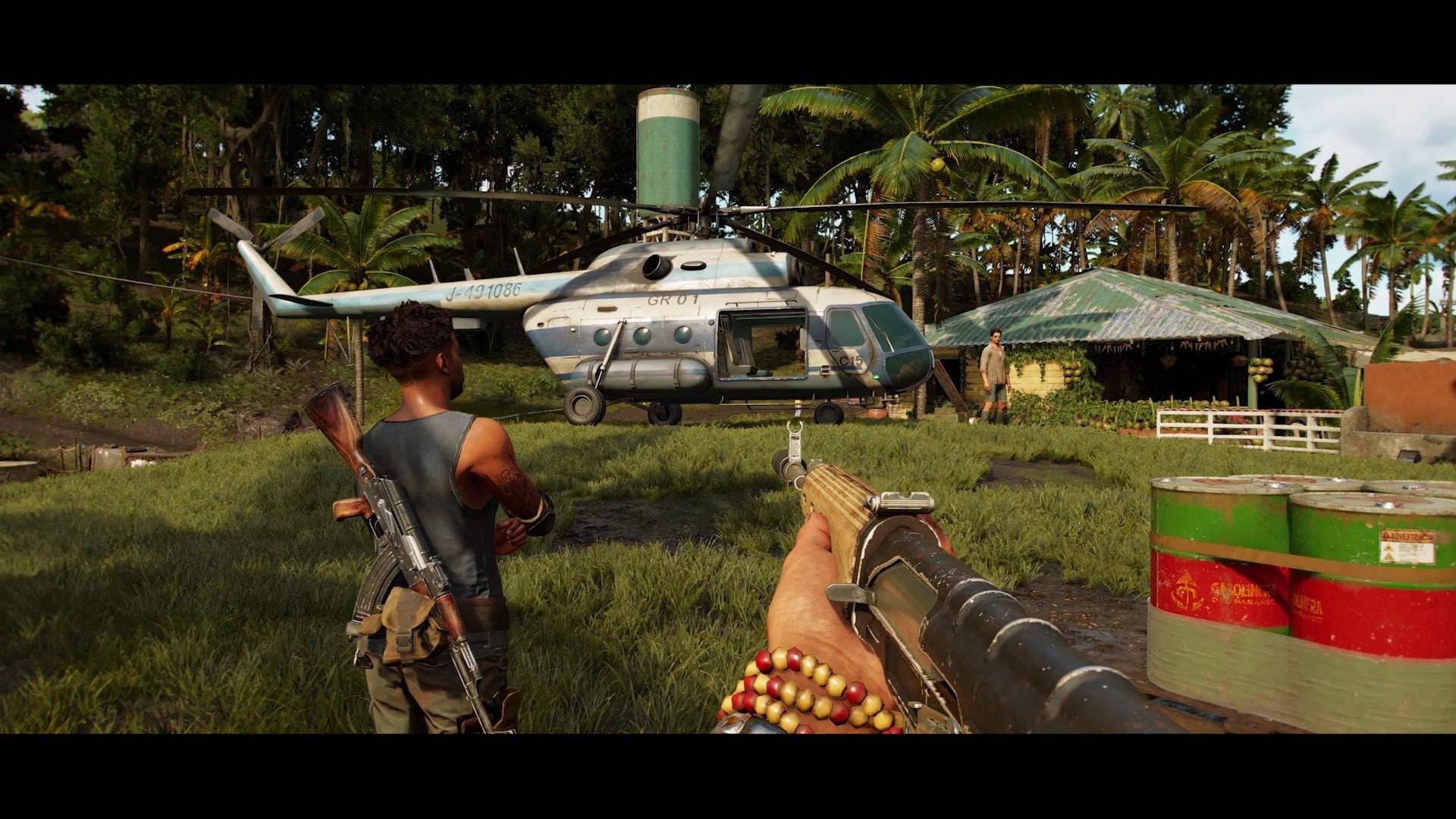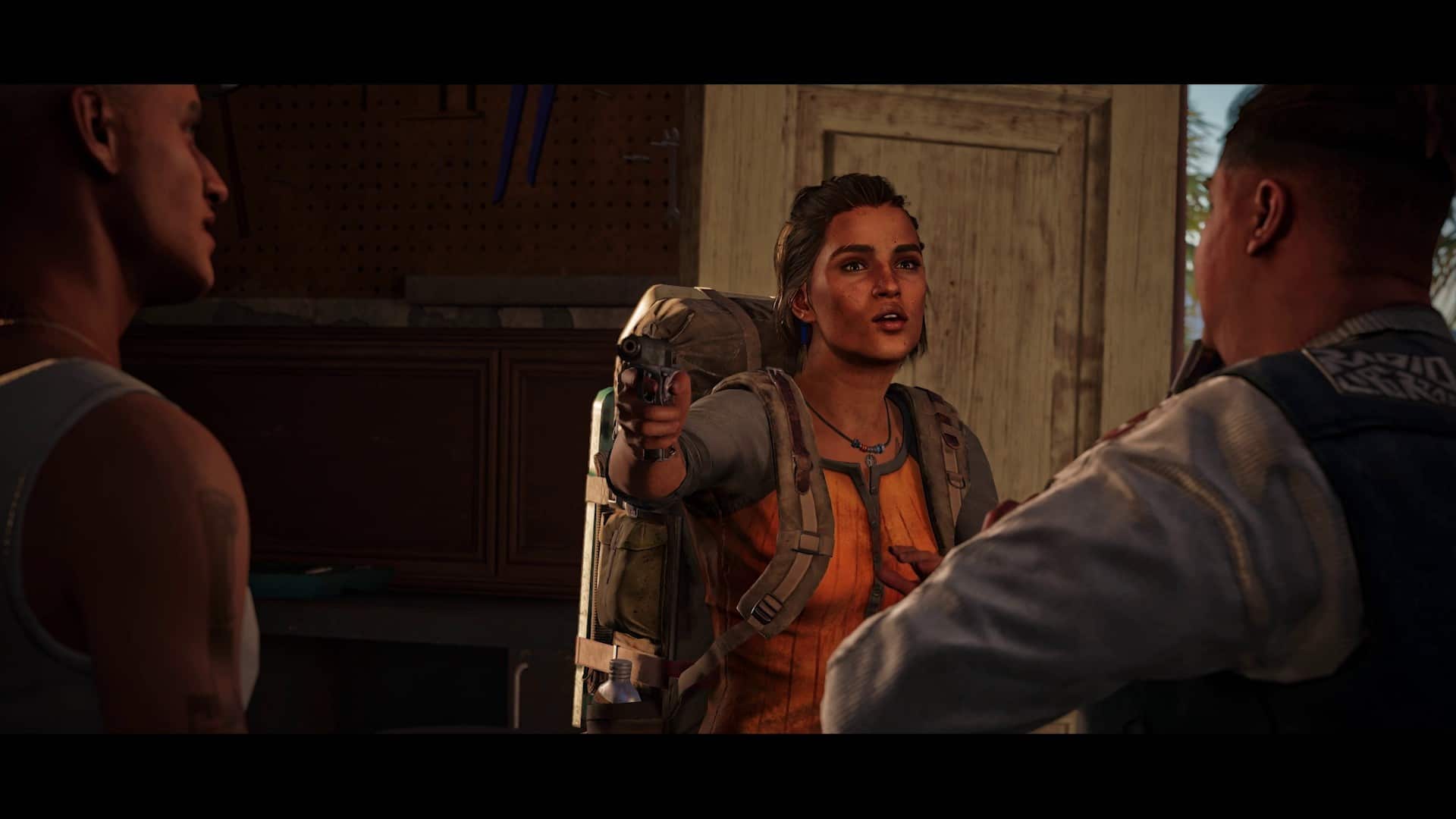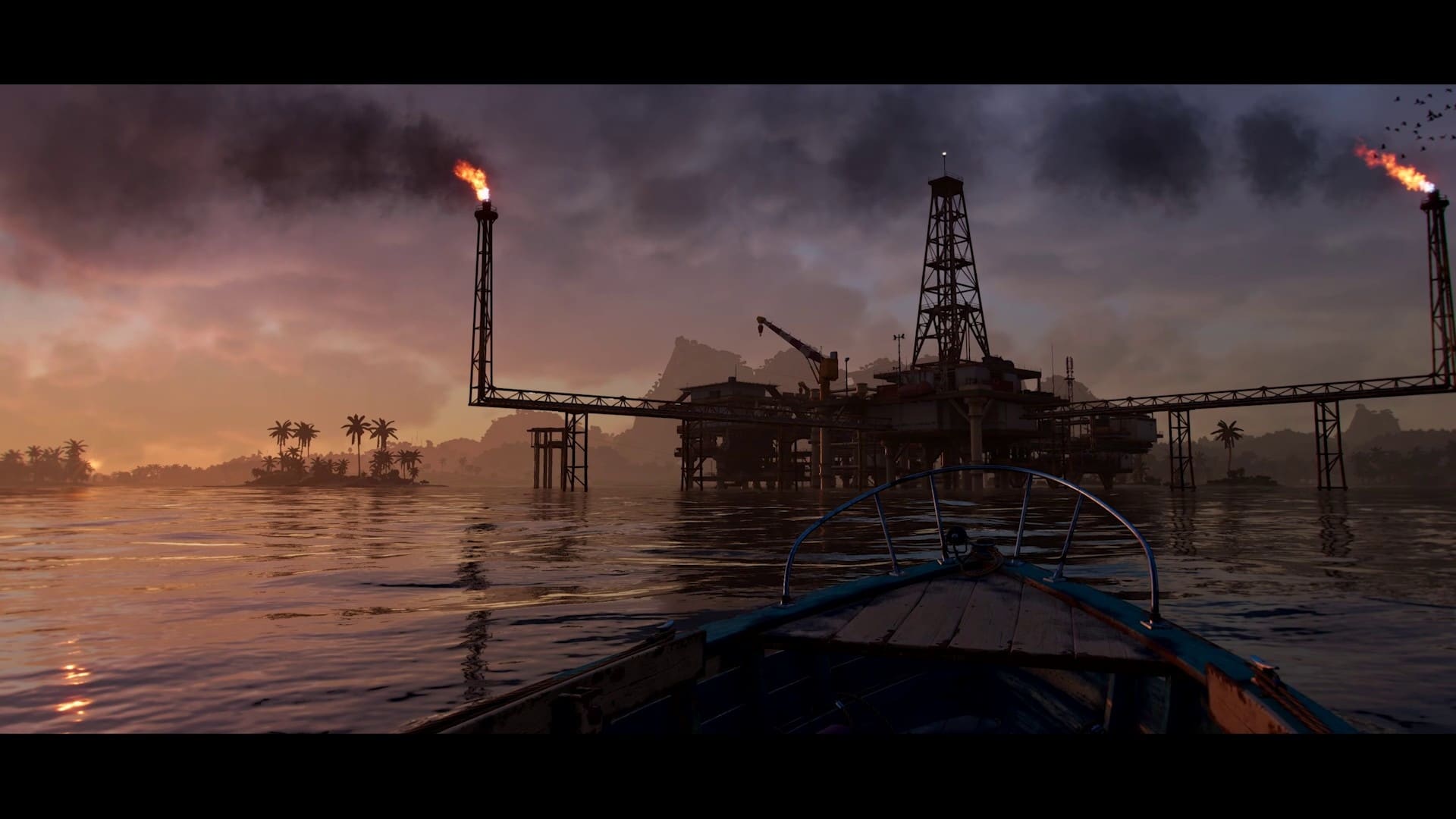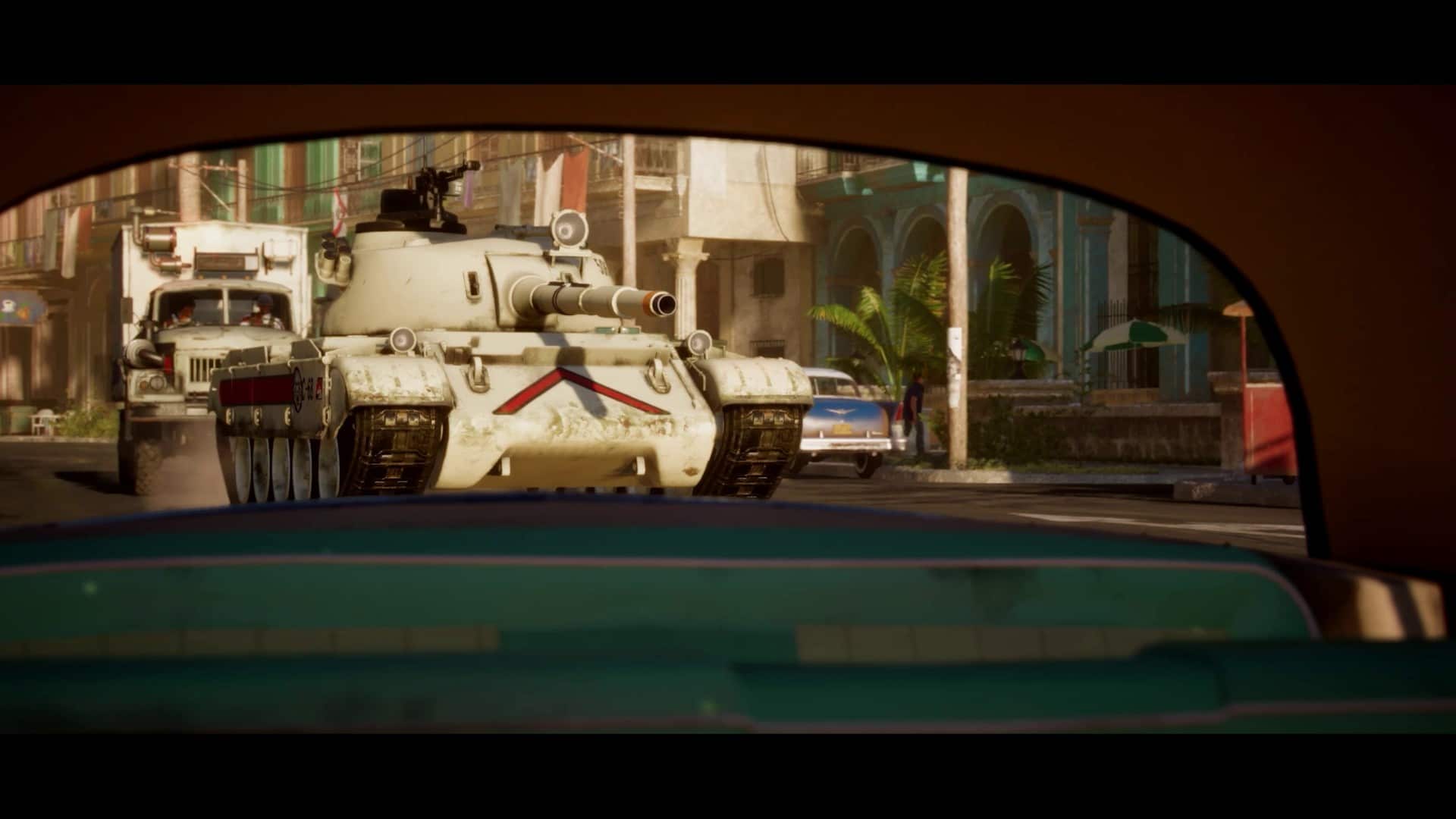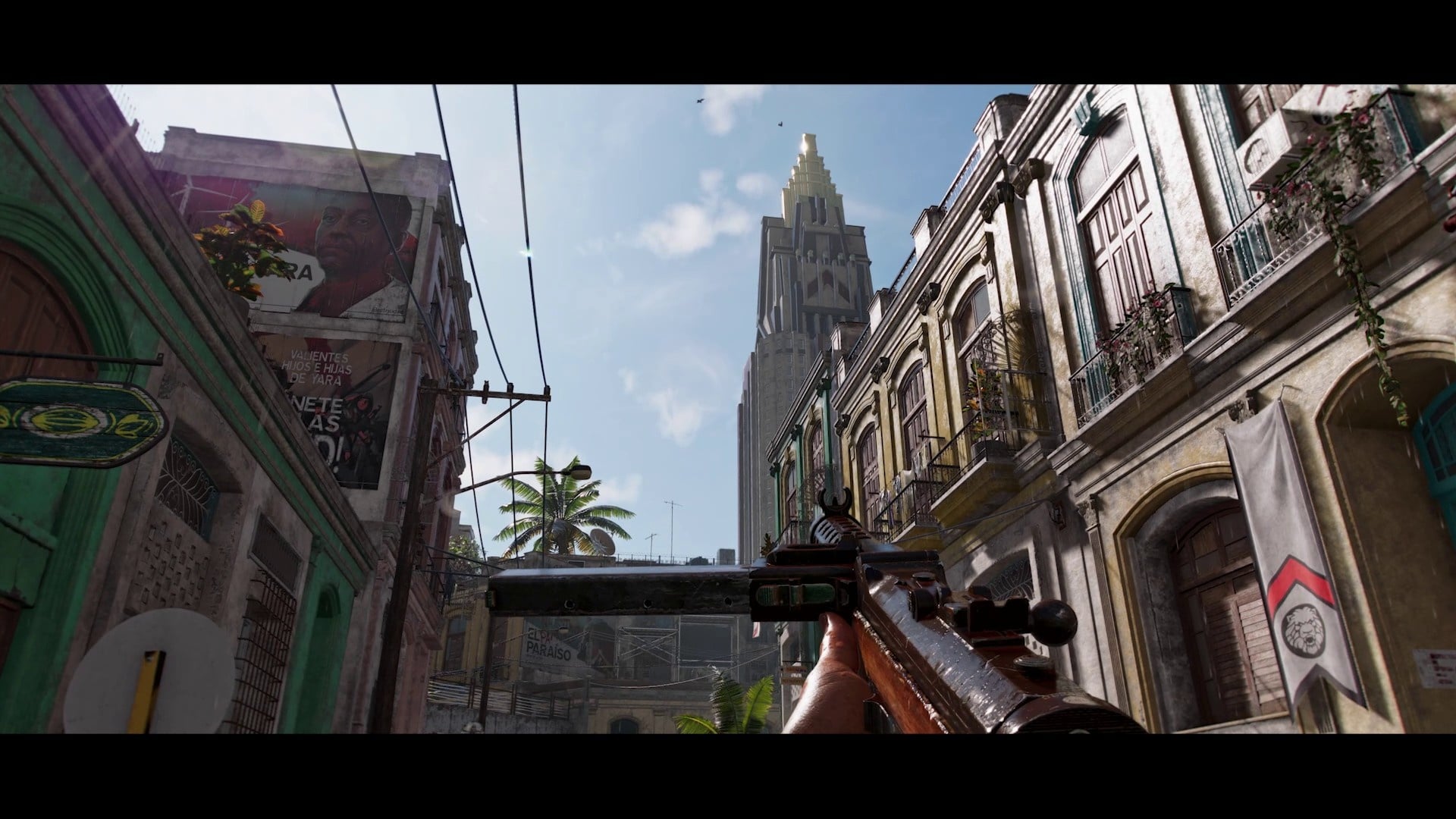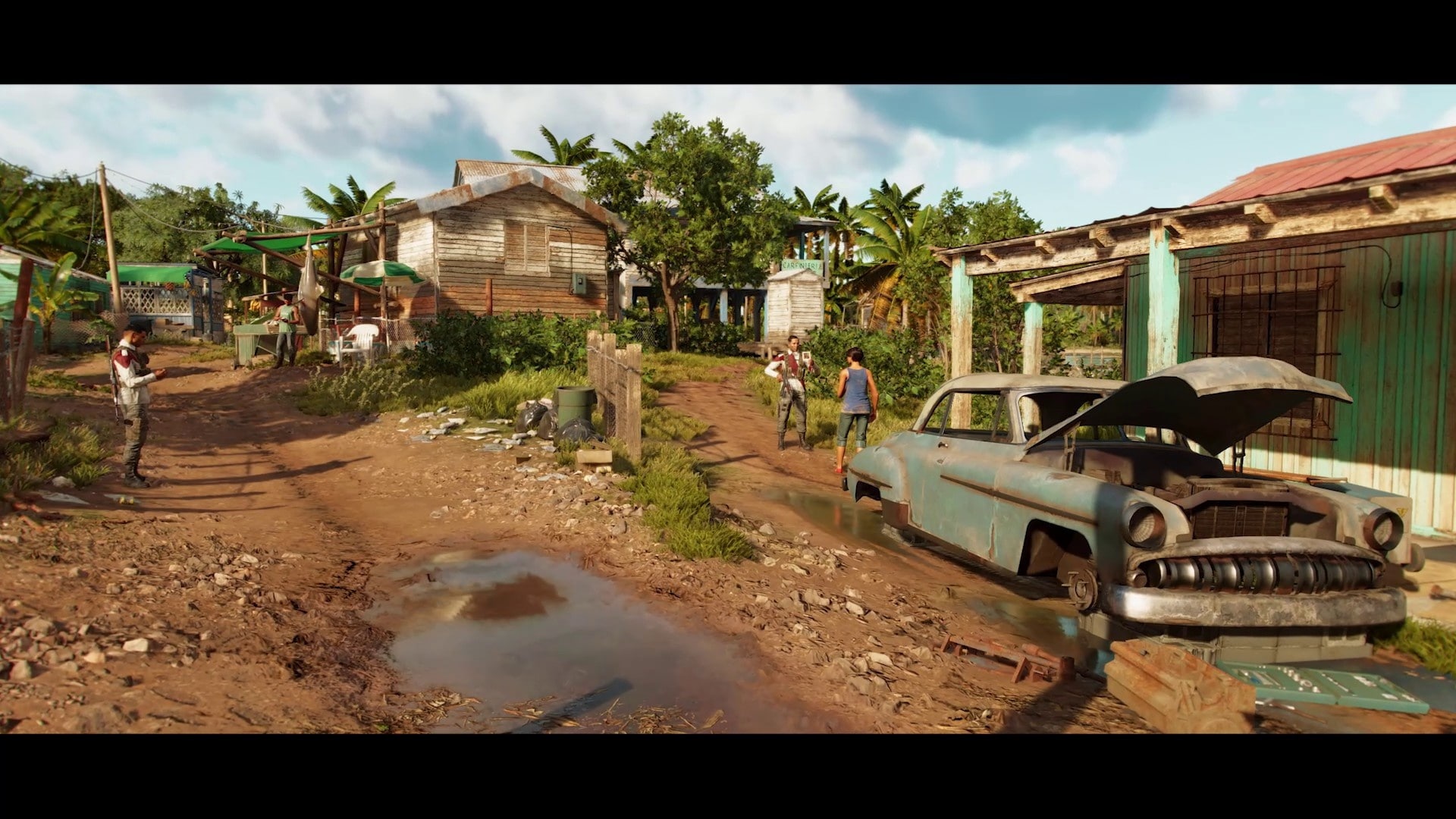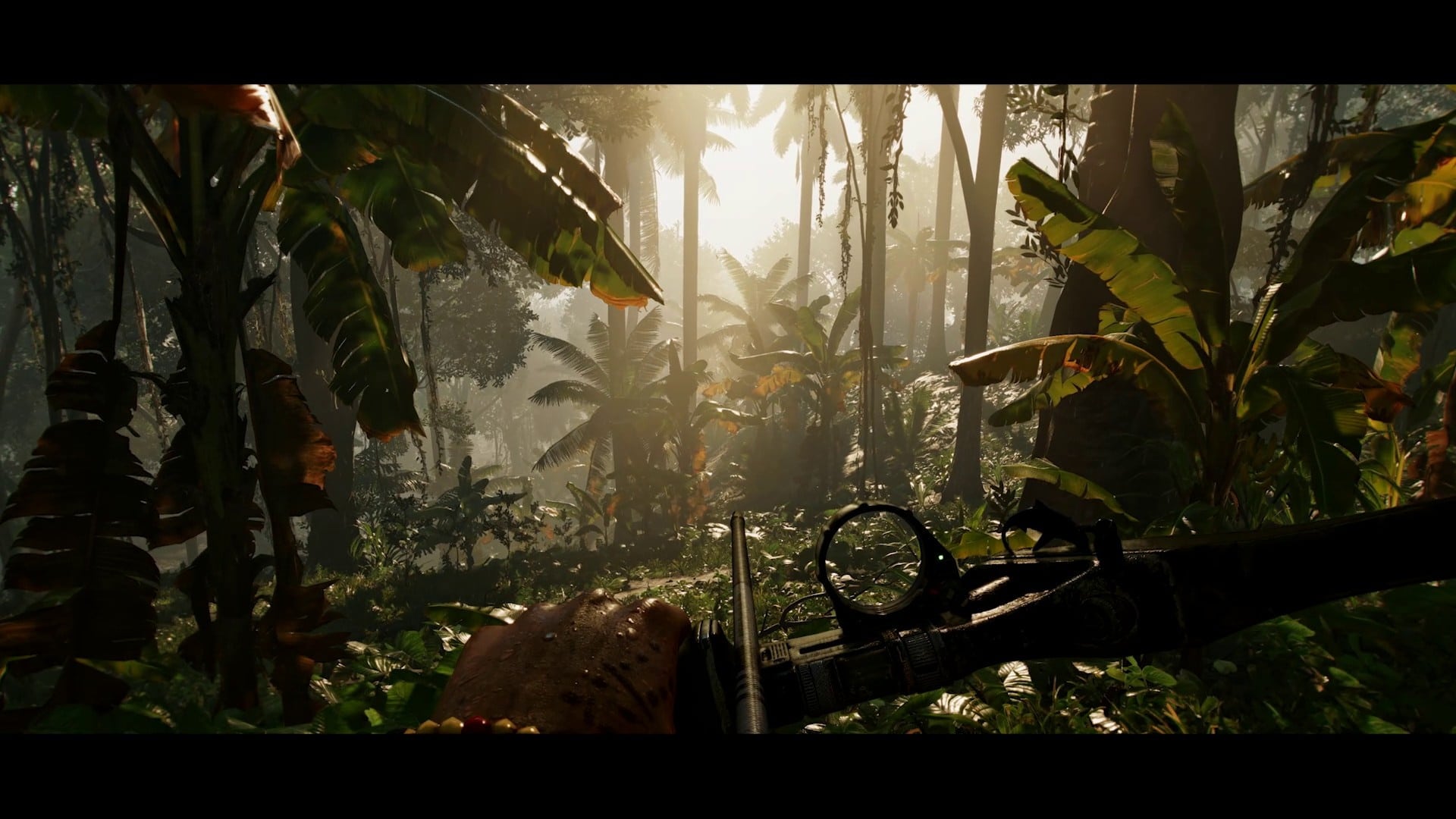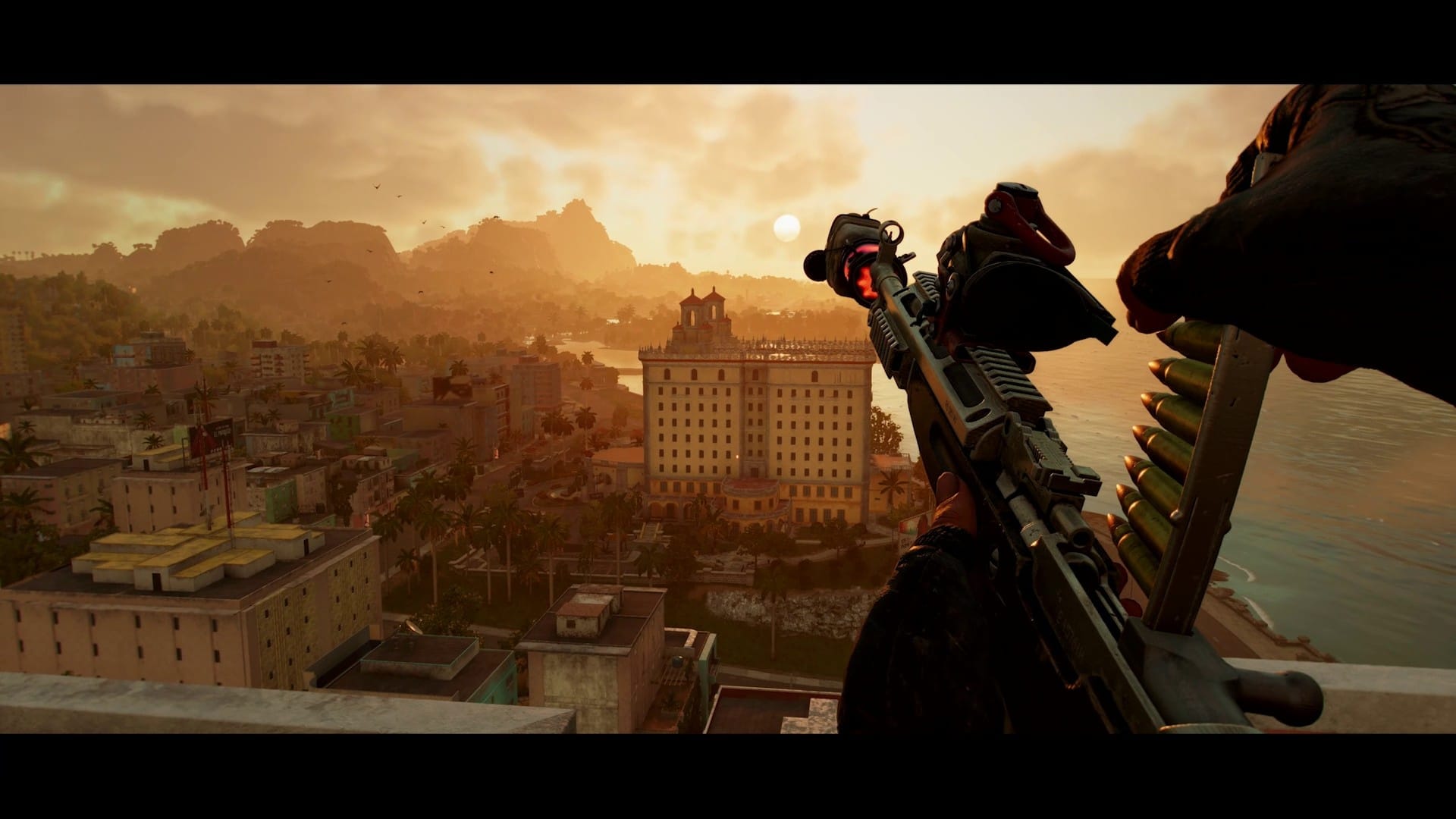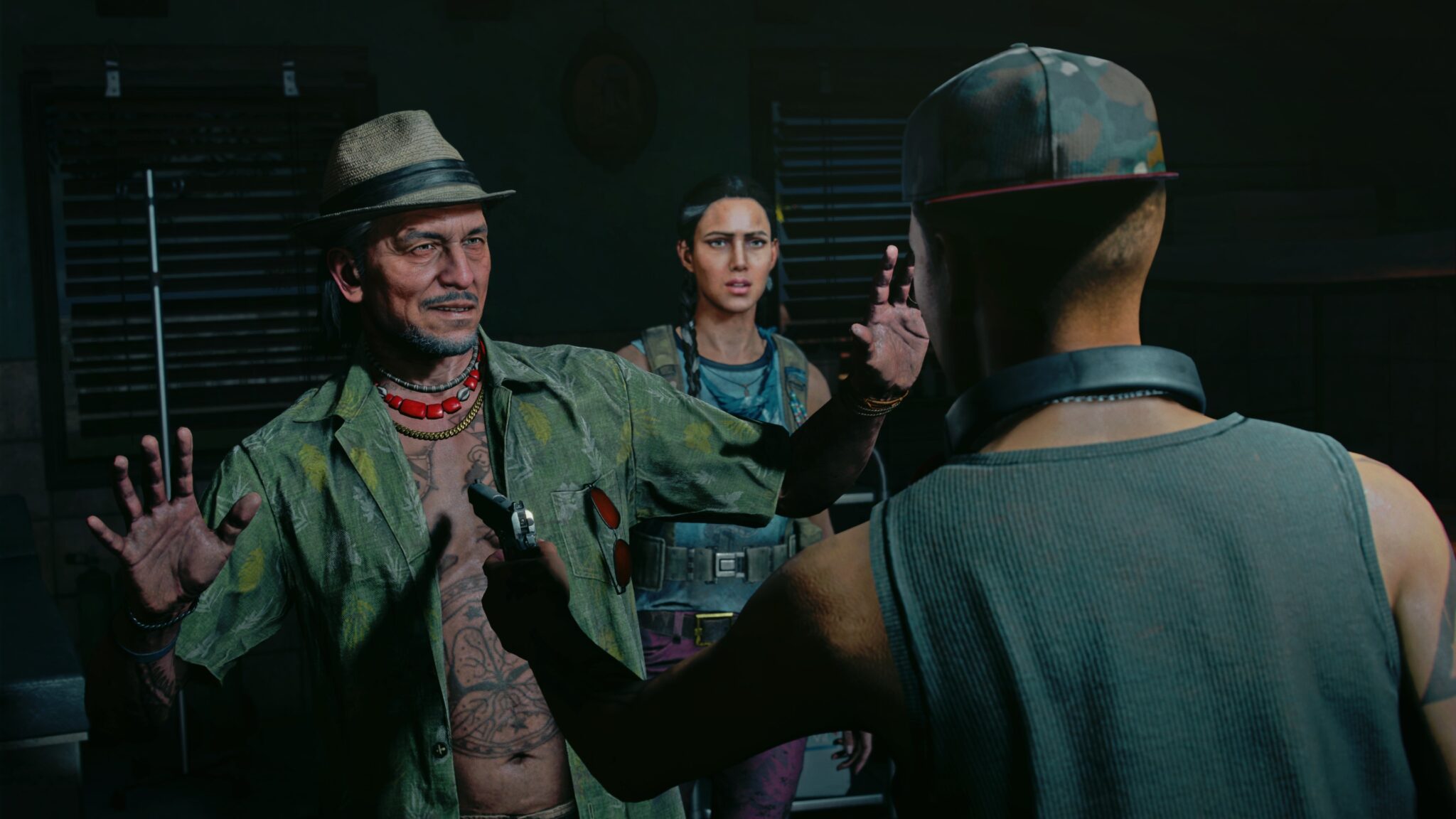Evolution instead of revolution: Far Cry 6 hits the same wacky sandbox notch as its predecessors. But is it enough for the next big open-world blockbuster?
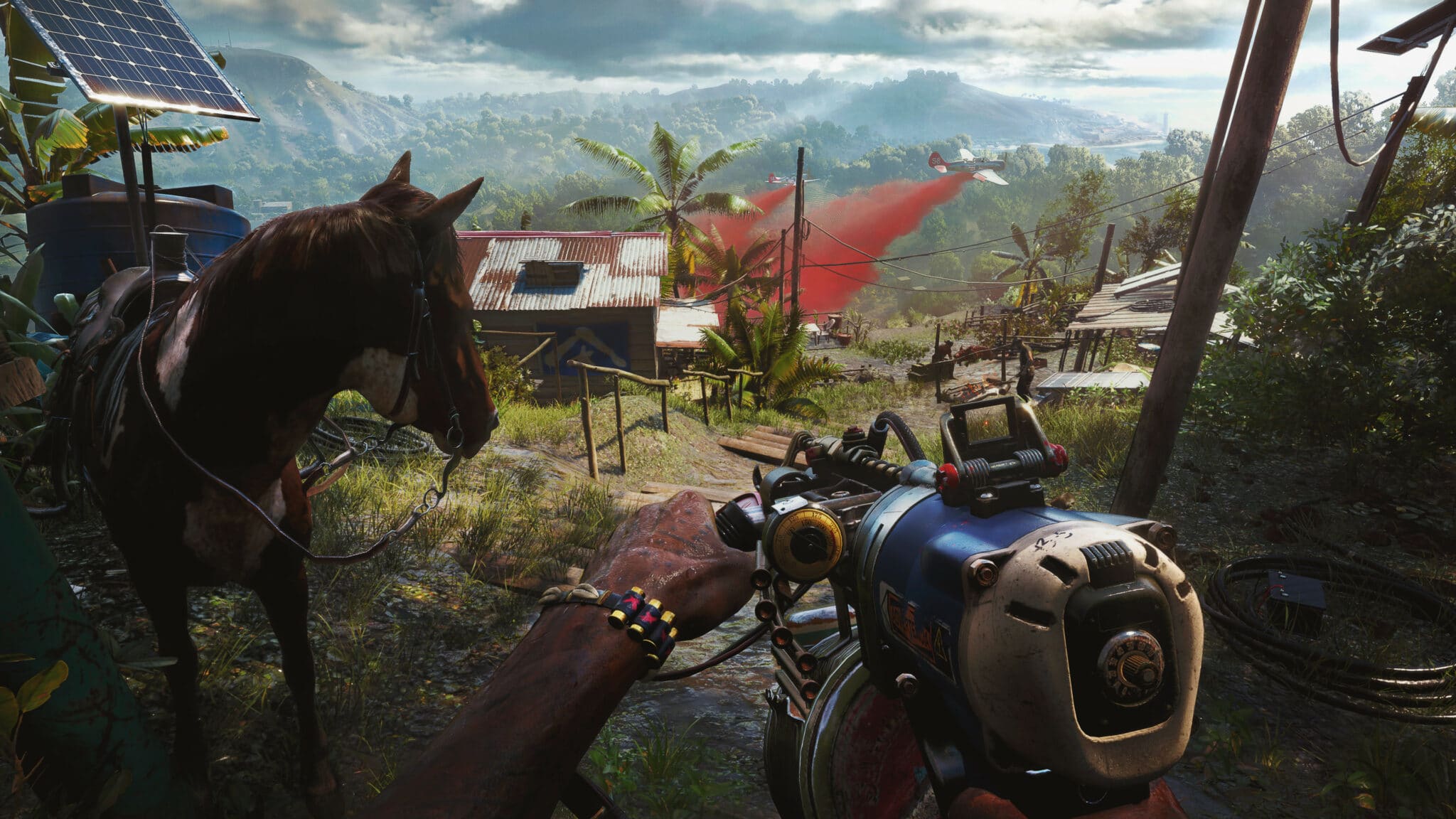
“O Bella Ciao! Bella Ciao! Bella, Ciao, Ciao!” After playing Far Cry 6, I’ll probably never get rid of this earworm. The erstwhile anthem of the Italian resistance to fascism in World War II echoes through burning plantations as I blow up fertiliser tanks and riddle dictator Castillo’s troops with bullets.
My (in this case) heroine Dani actually takes on a tragic role: Stranded on the island of Yara, she is forced to become a resistance fighter in a hopeless battle full of senseless sacrifices. A grim scenario whose harsh undertones quickly lock Far Cry 6 into the story back room. Ciao Bella! Because the sixth part doesn’t want to be a social critique either, but above all a wacky sandbox.
You sic your tame killer croc on enemies, blow up a tank with a rocket launcher backpack and then go fishing – the daily routine of a guerrilla fighter. In the first few hours of play, the game unfolds a pleasant flow, because Ubisoft has adjusted exactly the right screws compared to the predecessor. Everything meshes together, only groundbreaking innovations are missing, which is also clearly visible in the preview video with plenty of gameplay:
Table of Contents
No time for big feelings
Far Cry 6 can’t be both. Loose fluffy sandbox experience and moving revolutionary story. Dictator Castillo doesn’t change that, even if Giancarlo Esposito once again shines as an impressively callous psychopath.
He ruthlessly presses a gun into his son’s hand and declares that incorrigible resistance fighters must be put down like stubborn dogs. He unabashedly exploits the people of Yara to use his own cancer drug as leverage – cancer from contaminated fertiliser included.
But while one life after another is being destroyed by him, the guerrilla fighters, meanwhile, act like partying teenagers on their island graduation cruise. They wear colourful hair, casual festival clothes and always have a loose saying on their lips. Everything is too hip, flashy and fun for the seriousness of the situation.
I just don’t buy that these people are fighting for the freedom of their country. If Ubisoft wants me to feel for them, they have to give me more than the occasional shock moment – a problem that runs through the entire Far Cry series. Only when characters are allowed to be truly human and breathe beyond the action can they grow on me. But there is hardly any time for that in the open world.
Open World Harmony
Because the Far Cry 6 buffet serves me plenty, and mainly the dishes from the predecessor: I’m supposed to take forts, kill high-ranking officers, climb, fly, drive and, of course, show masses of enemies the warm island floor from below. The only difference is that the open-world chapters now harmonise much better with each other:
In Far Cry 5, it felt like I couldn’t take two steps and a puma or patrol was already glued to my butt – especially annoying when you want to silently infiltrate an enemy base. Far Cry 6 lets me decide for myself who to mess with: as long as I don’t jog through the open world with my finger on the trigger, soldiers tolerate me and wild animals also behave less rabidly.
Hospitality ends in restricted areas, but I haven’t encountered any world events there. If you want, you can go hunting on the way, free hostages, blow up enemy vehicles or attack bases in order to capture resources or take out air defence systems. This is where the flow gets going: because you can summon your car and there are horses, buggies or boats everywhere else, you never have to put up with annoying walking distances.

Hollywood meets chicken
When travelling too far, you’re allowed to activate undiscovered fast travel points if you invest supplies in a supply network in rebel camps beforehand – these can be expanded and upgraded like the settlement in Assassin’s Creed Valhalla. Once I’ve reached my goal, the enemies are quickly eaten away.
I scan their weak points by mobile phone, equip weapons with the right ammunition – armour-piercing against helmets, for example, or rather a machete and silencer for a silent bloodbath. Or I unpack the homemade flamethrower right away and bring my trusty fighting chicken into position – yes, that really exists.
Because the bases are manageable, there’s never much at stake if I do get spotted or killed. This reduces frustration and increases the desire to take risks or experiment. More elaborate fortresses, such as two ships that block the rebels’ escape route, are conquered during the campaign missions.
As in the predecessor, these missions are the highlight because the staging goes up a notch – especially if you don’t care about stealth: to a drifting soundtrack, we glide from one ship’s mast to the next by zip line and send enemies into the ocean with friendly lead greetings, while our allies deliver reinforcements from above by plane.
Fancy weapons instead of role-playing bells and whistles
How much fun you have here is largely determined by your choice of weapon. Instead of flirting with role-playing games via perks or skills, Far Cry 6 remains true to its shooter roots. The repertoire is impressive: If you don’t feel like using standard shooting weapons like assault rifles, pistols or shotguns, you can use the freaky improvised weapons to shoot razor-sharp CDs, spike enemies with nails or burn them to death with a flame attachment. If you still lack the necessary power, you can simply discharge poison gas or explosive rockets with the Supremo backpack.
You can unlock these superweapons bit by bit from traders. All lead syringes can be adapted and improved at workbenches. You can upgrade a standard bow with explosive arrows and increase your aiming accuracy with an attachment and your movement speed with a mod.

Such fine-tuning is pleasantly reminiscent of the weaponsmith from Call of Duty: Modern Warfare. If I don’t want to leave anything to chance, I can precisely analyse enemies, terrain, cameras, alarms and so on before each mission and then perfectly adjust my equipment and ammunition accordingly.
At least in theory. In practice, low-level modifications only made a subtle difference. Hopefully, bigger differences will show up later and heavily guarded buildings require more sophisticated planning. Your clothes also get a level pinned on them. You won’t be forced into loot hunting à la The Division, though. As long as the value roughly matches the area, not every bullet will knock you off your feet.
Fun shooting, lame hits
Especially not on the lower of the two difficulty levels. They are titled Story and Action, which is a little misleading because Story is supposed to be normal and Action hard, but Action feels like normal and Story like Easy Mode.
If I’m standing around in the middle of the battlefield without cover and I’m fired upon, I can barely feel the shots. My life bar goes down at a snail’s pace and even a tank takes a few tries to penetrate my obvious steel skin. If Dani doesn’t become the newest member of the Avengers via a plot twist, Ubisoft will have to improve the balance here. But at least you can switch during the game.
The developers should generally tighten a few screws on the hit feedback. As in the predecessor Far Cry 5, this is also a problem with the enemies: while shots hit the armour with great force, I hardly notice body shots. The fact that the shooting is still a lot of fun is due to the overall weapon handling. Bullets whip out of assault rifles, while shotguns pull the feet out from under the body of enemies and even Avengers at close range.

On the leisurely sniper rifle, you’ll again hold your breath and incorporate the wind to land a headshot. You should switch from time to time in any case, because enemies also like to rush in close sometimes. By the time you have the assault rifle barrel up, the buckshot is already spread across your face.
Depending on the situation, all the weapons are useful and, what’s more, they are designed in detail, the loading and reloading are accompanied by elegant animations and the muzzle flash makes the barrel glow. If Ubisoft polishes the hit feedback and difficulty level, Far Cry 6 could become an extremely varied fun shooter that nevertheless does not forego occasional depth.
A look over the shooter’s shoulder
But the island paradise is actually nice to be permanently distracted by all the violence. Palm trees blow in the wind, clouds hang low in the densely forested mountains and the sea glistens postcard-perfect in the evening sun.

That’s why I fetch my rifle in between and go on a treasure hunt: once, for example, I’m supposed to chase a pelican by wingsuit, which leads me to the reward, and another time I’m supposed to track down boats with numbers and colours in a village in order to decipher a door code.
Since I only have a clue sheet and no markers, it turns into a whimsical scavenger hunt that pays off in the end: instead of gold bars, I unearth unique weapons like the Camo Quinceanera, which completely outshines the rest of my arsenal with its rate of fire. This continues the tradition of the prepper hideouts from Far Cry 5, but requires a bit more thinking and entices with more useful loot.
Yara’s stories – classic side missions – are also worthwhile. For example, if I help the freaky rooster Chicharron in his fight for the resistance, I can later embrace him as an animal companion. However, I’d better keep my distance – his previous owner has a hook hand for a reason.
Most of the side stories come down to combat, but the humorous story interludes still entertain better than the collection stuff in Watch Dogs and demand more than the world events in Valhalla.
Everybody’s open-world chaos
Overall, the Open World benefits from two things:
– Nothing has changed in terms of philosophy, Far Cry sticks to minimaps, markers and the like. But the fact that events and missions no longer permanently oppress me makes a big difference. I move much more freely through the open world, explore to my heart’s content and set my goals consciously. If you always proceed differently and experiment with weapons, the few activities don’t become repetitive. At the same time, useful rewards beckon.
– Away from the story, Far Cry 6 doesn’t take itself seriously at all and the gameplay benefits from this. Most of the weapons and gadgets are designed to cause massive open-world chaos, in which I suddenly knock down trees or send enemies flying into the sky with explosive arrows before casually bringing down a helicopter with a rocket.
From this point of view, Far Cry’s exclusion of the oppressive undertones of a violent revolution was the right decision. However, Ubisoft consciously accepts that I remain indifferent to the characters. The biggest problem of Far Cry 6 for me, however, is that not only the story should always remain digestible.
The big but
I can play tactically in Far Cry 6, pedantically loading the right ammo into my rifle, screwing attachments on, scanning the environment or sneaking past cameras and alarms like a spy to take out my target from behind with a machete. It’s cool and fun, but I have to consciously engage in it.
If you rush in everywhere with a weapon at the ready and mow down everything, including the reinforcements, 90% of the time you will celebrate a victory just as quickly and easily. Ubisoft doesn’t want to limit anyone and that’s why the Far Cry buffet should be to everyone’s liking. That’s commendable, but it also risks taking the bite out of a gaming experience and ultimately makes the decisions in the game meaningless.
If I don’t have to make an effort, at some point I don’t care about anything. And that can quickly become a problem in a 100-hour-long game experience. In order for demanding shooter fans to stay on the ball until the end, the open-world game has to step it up a notch.

